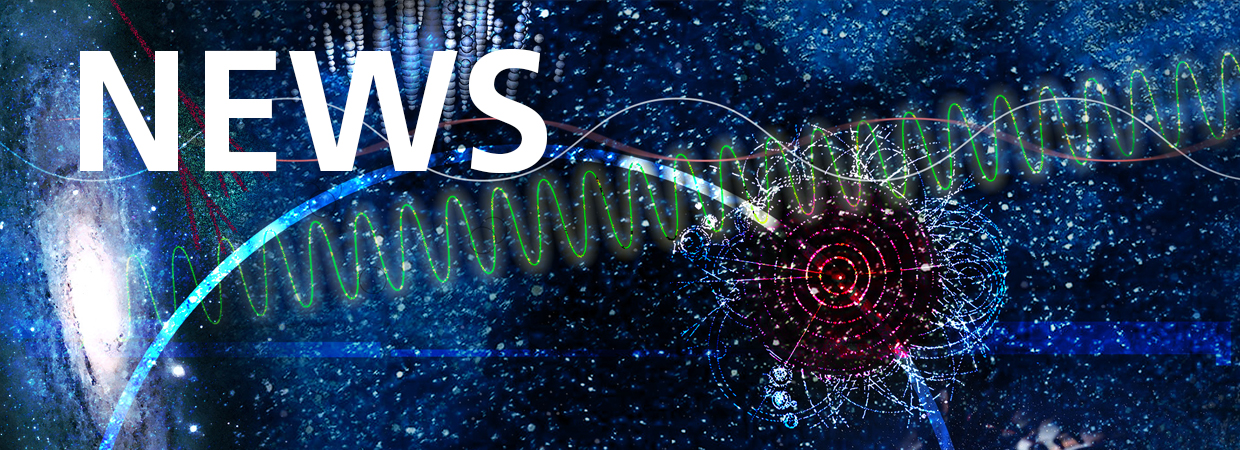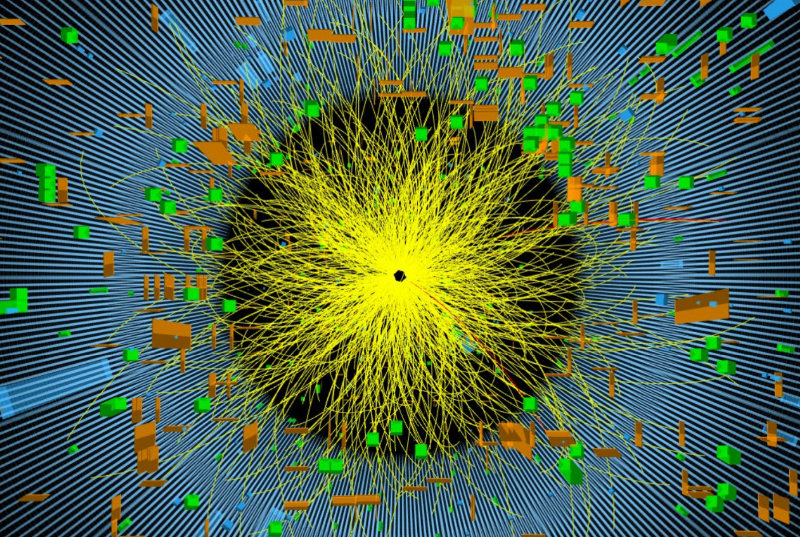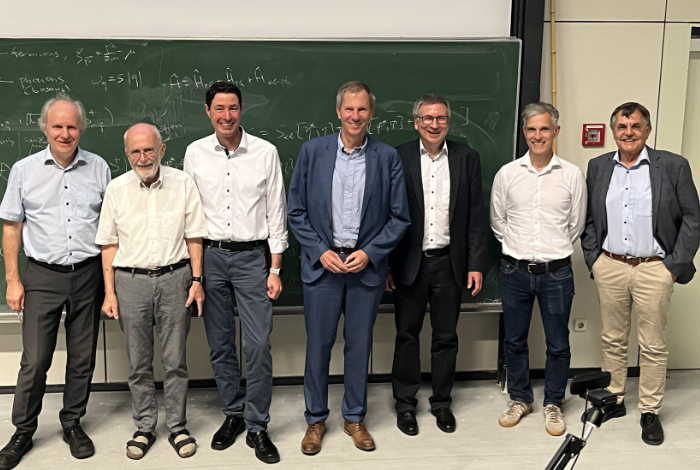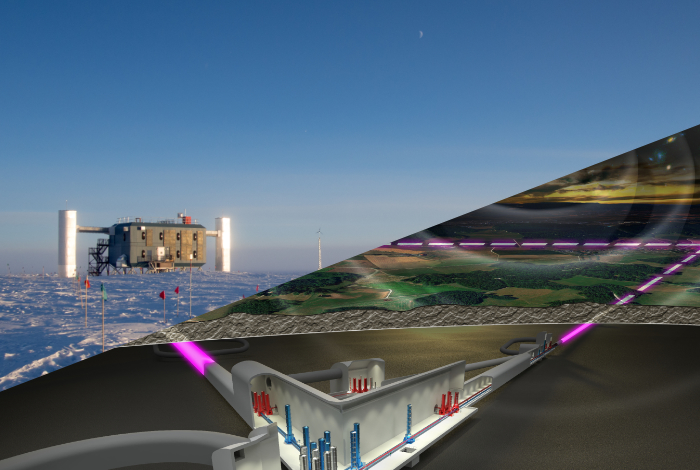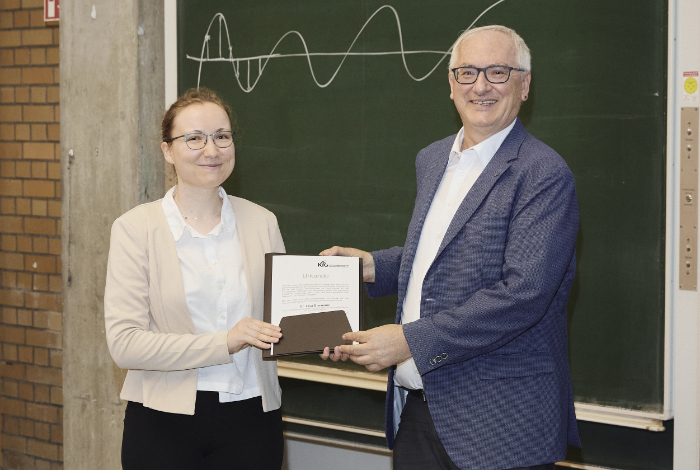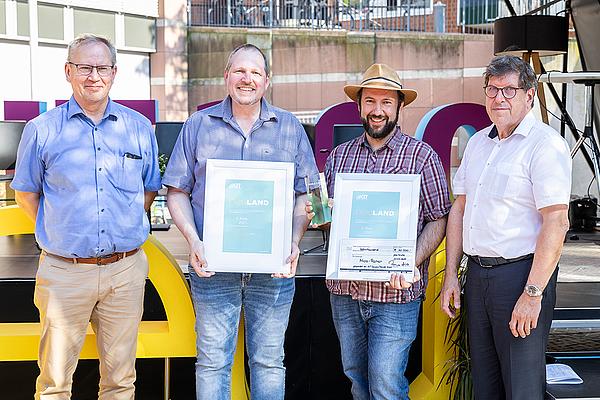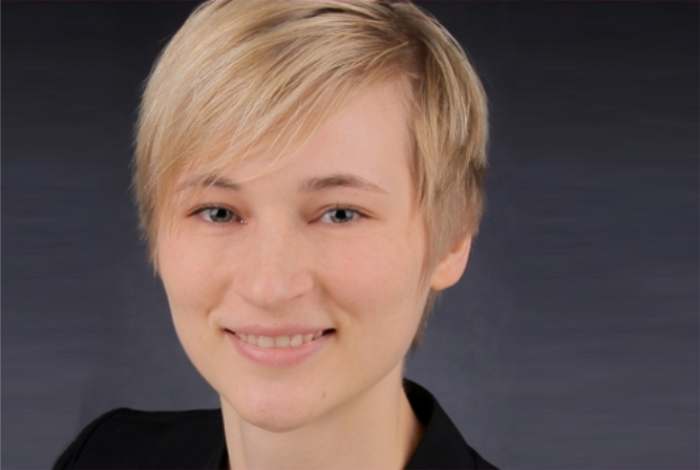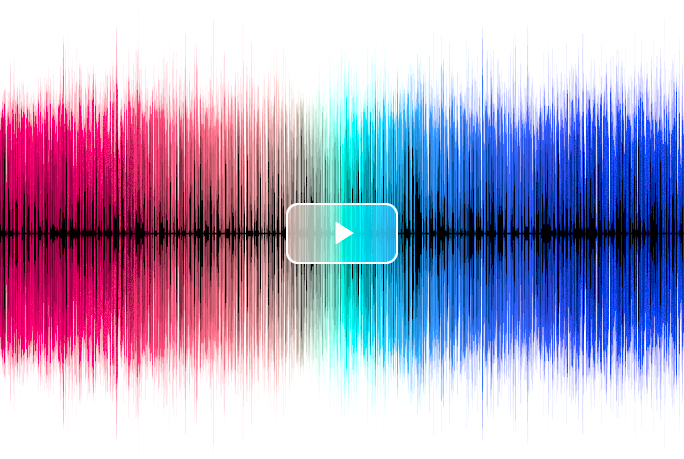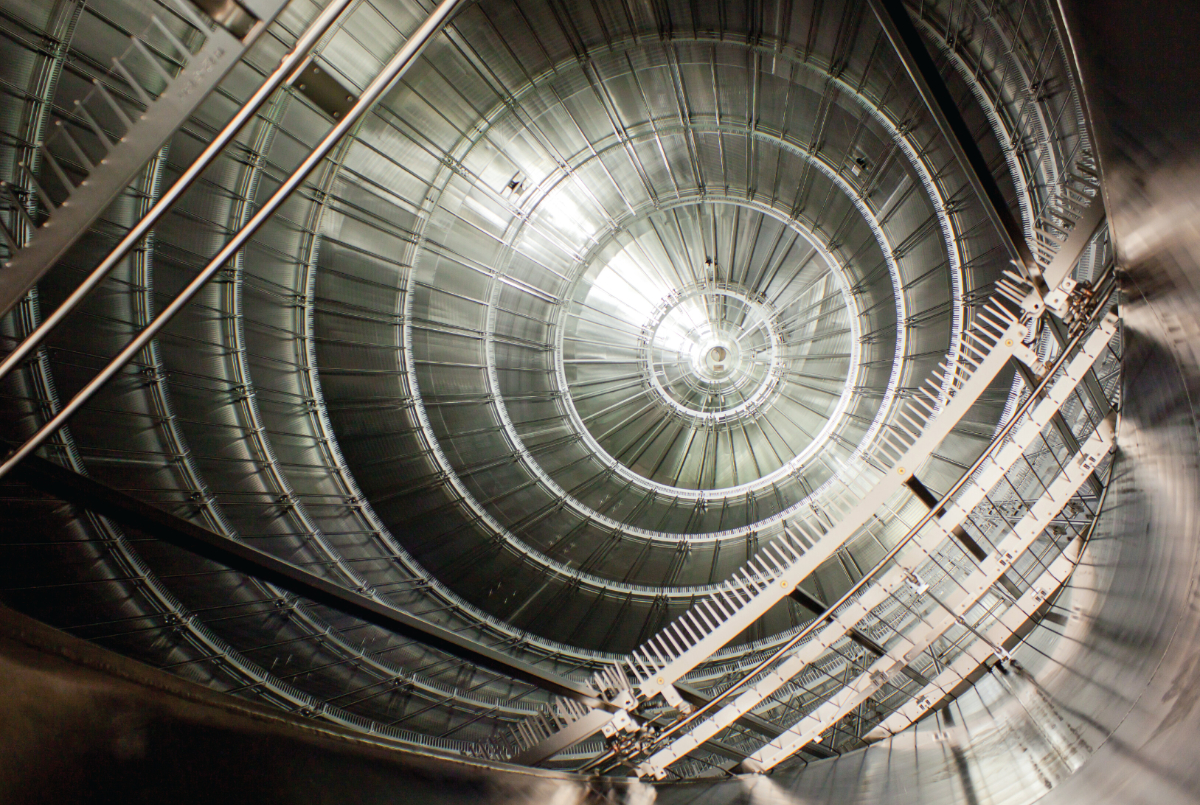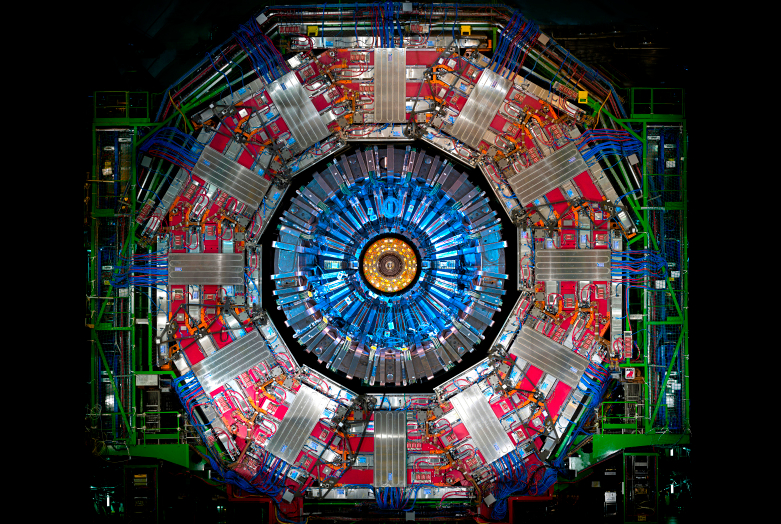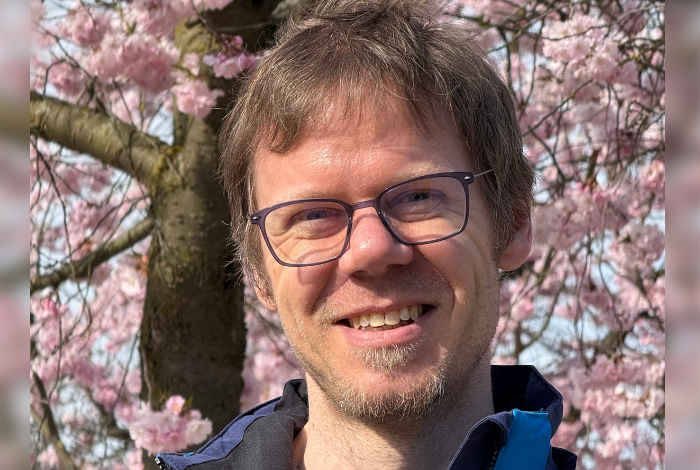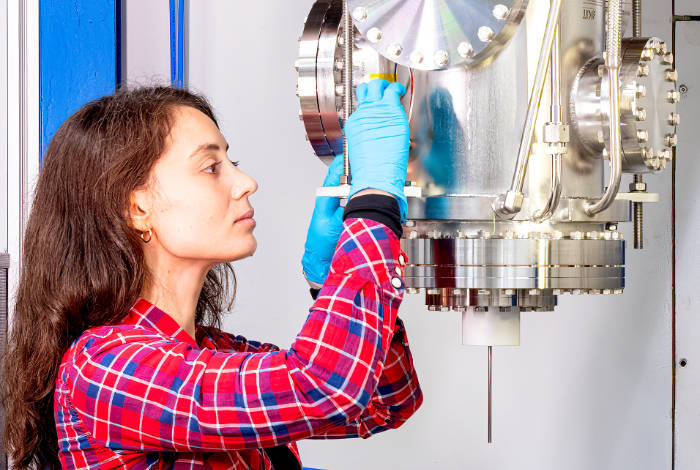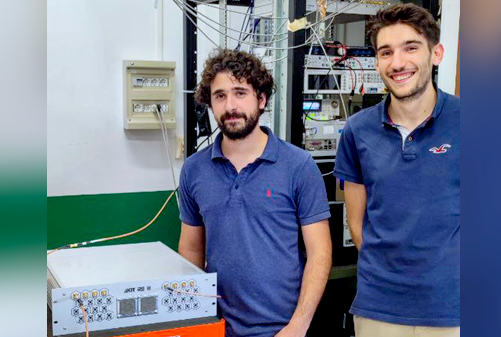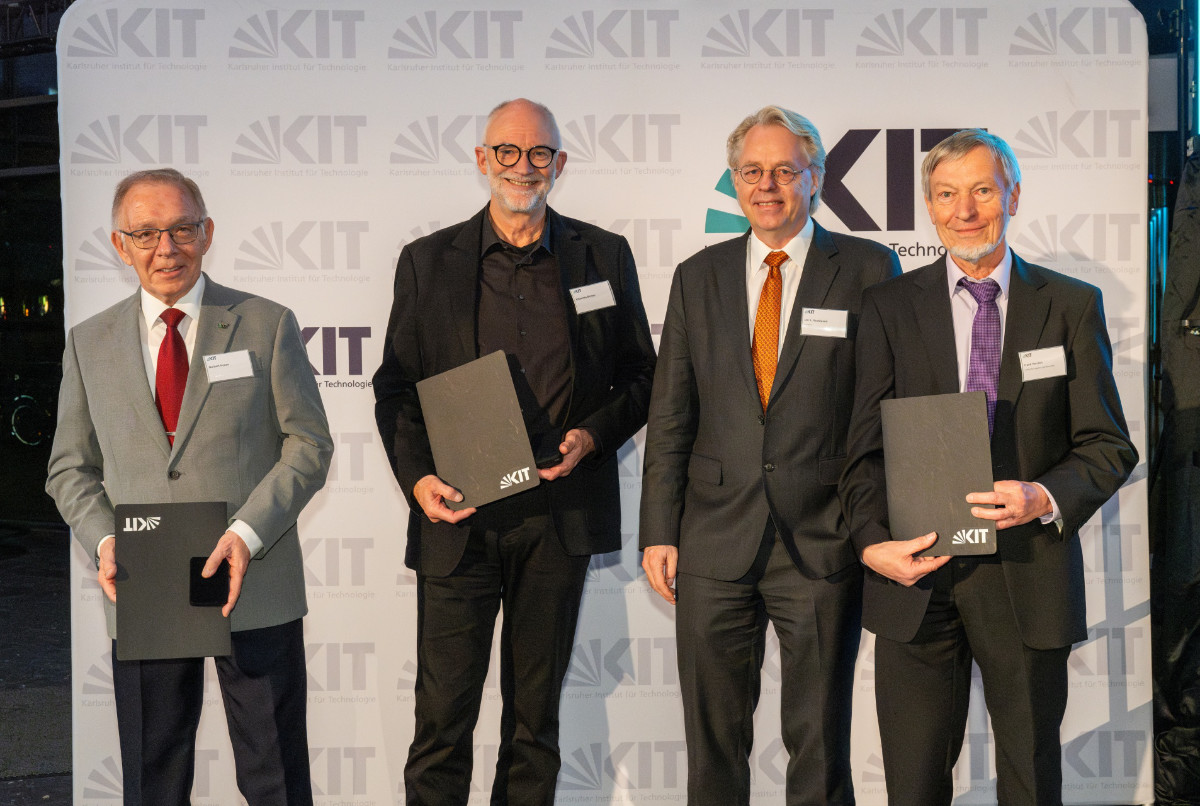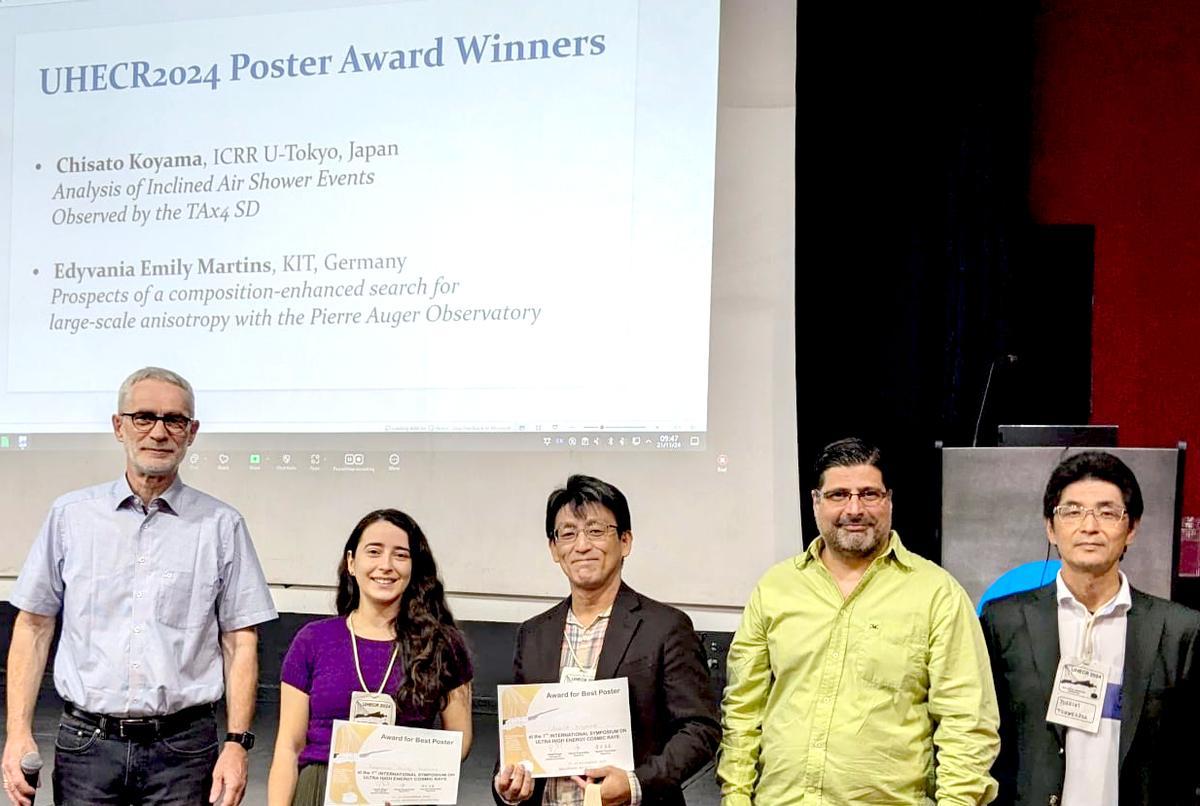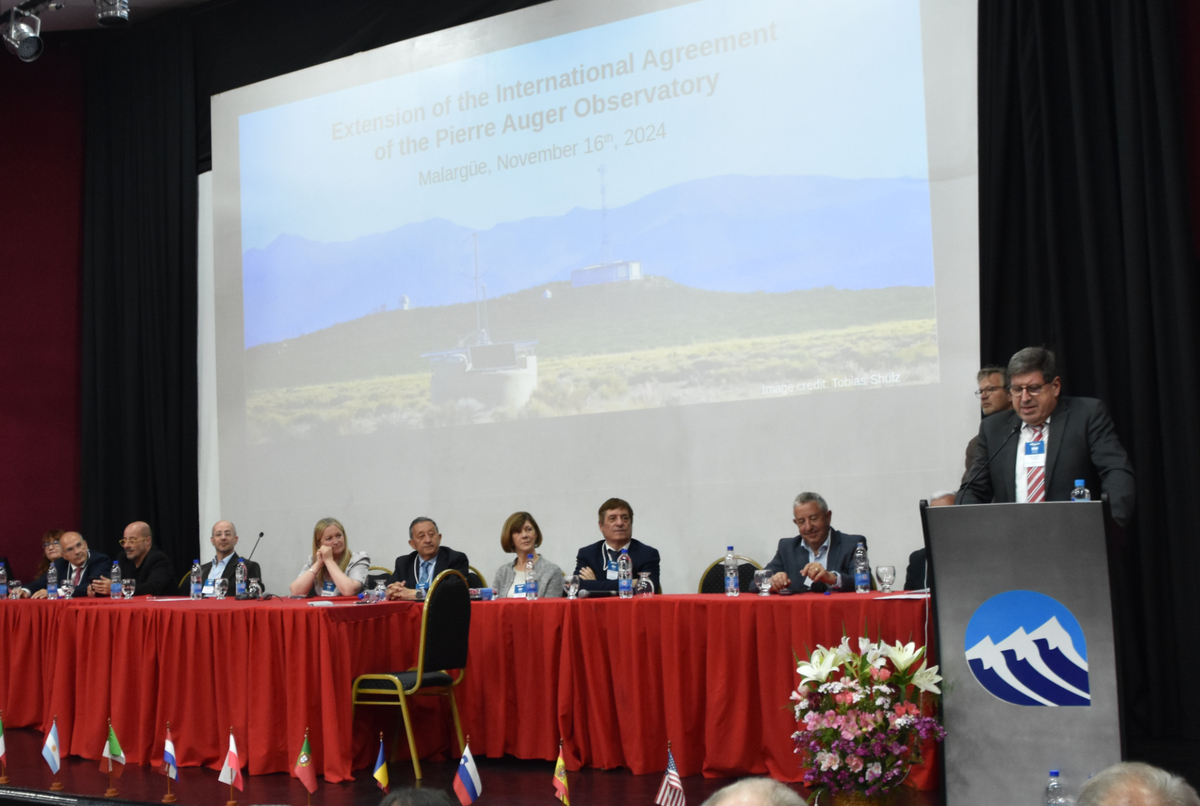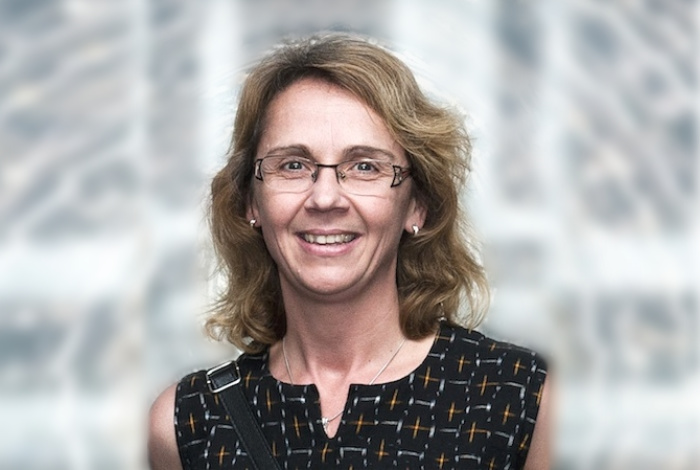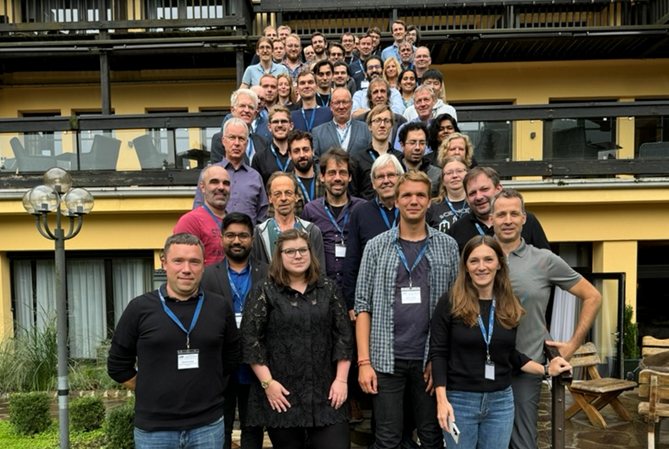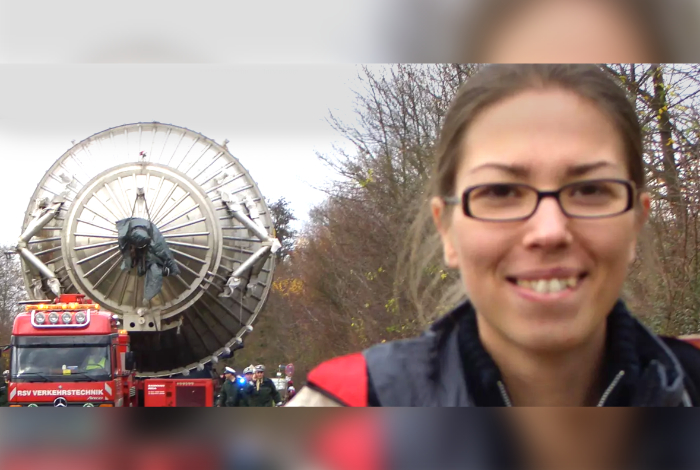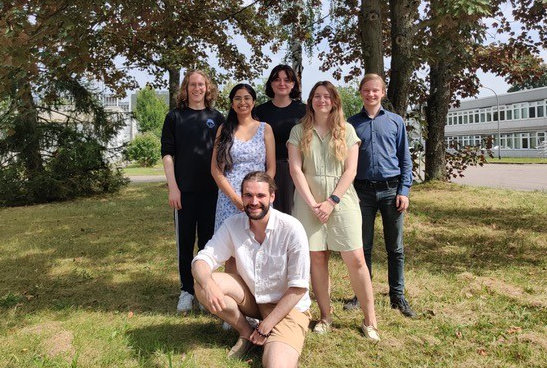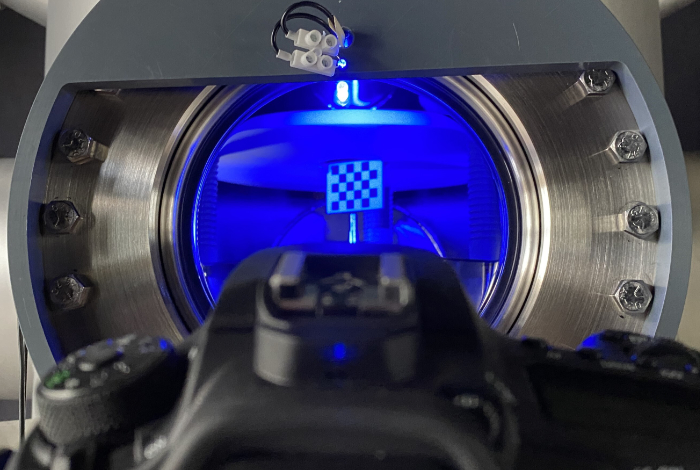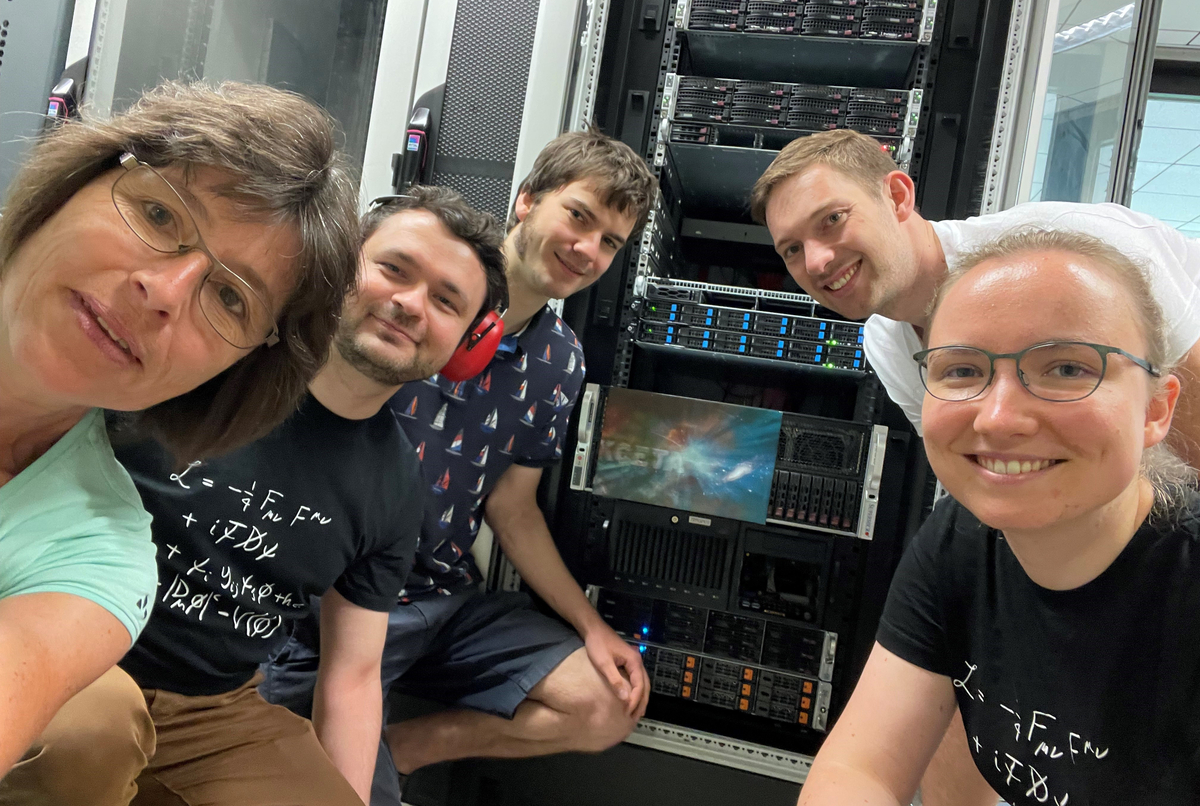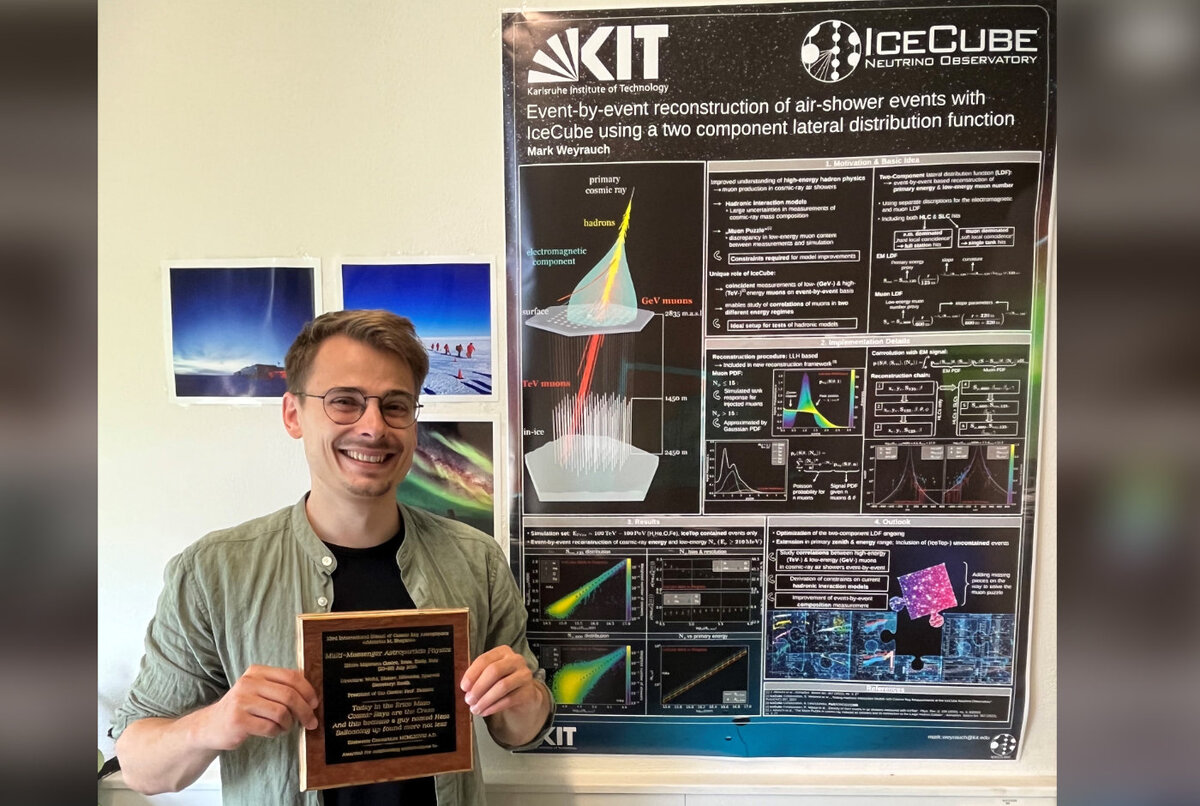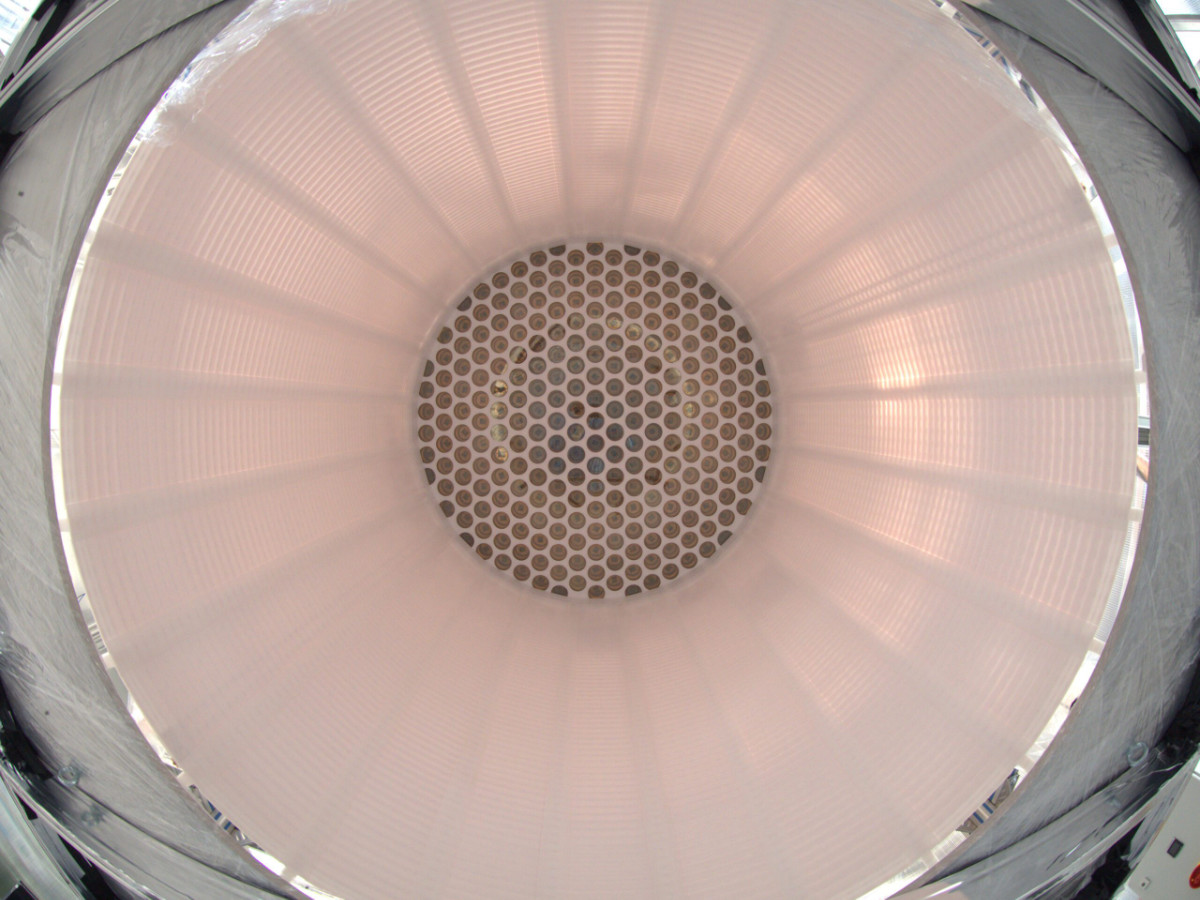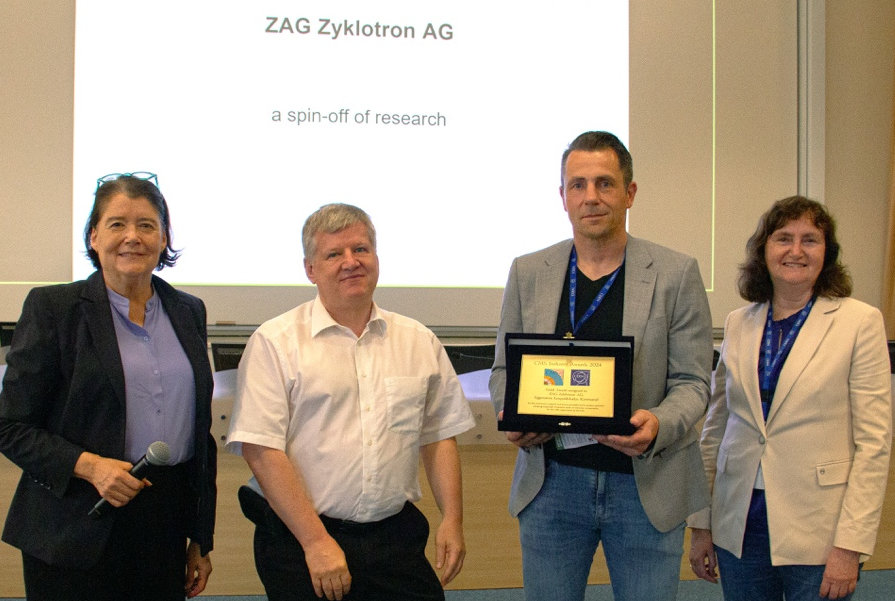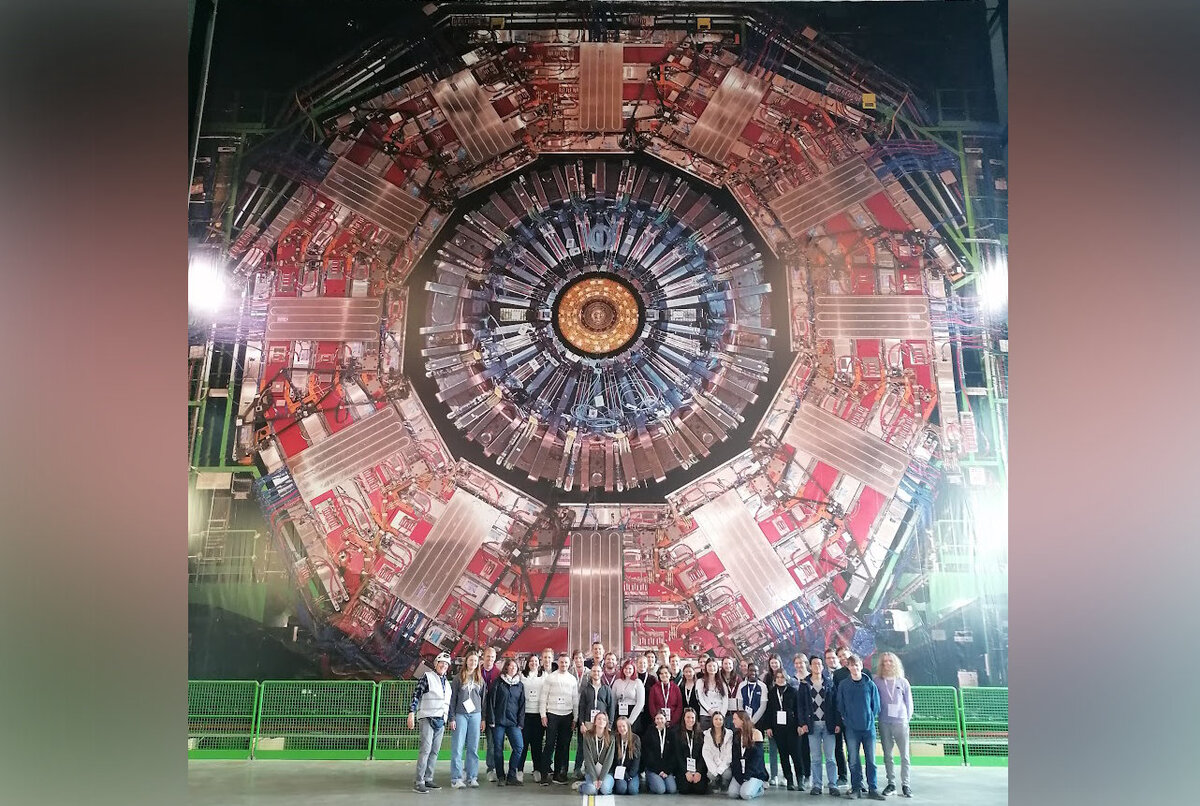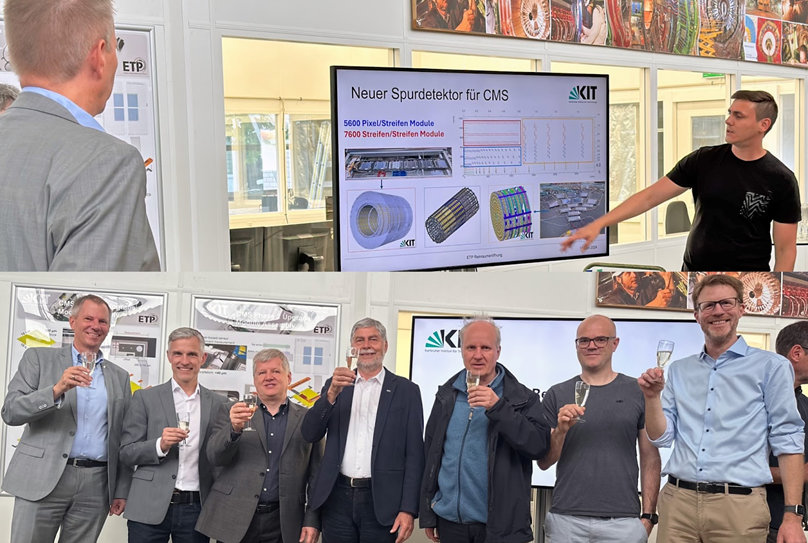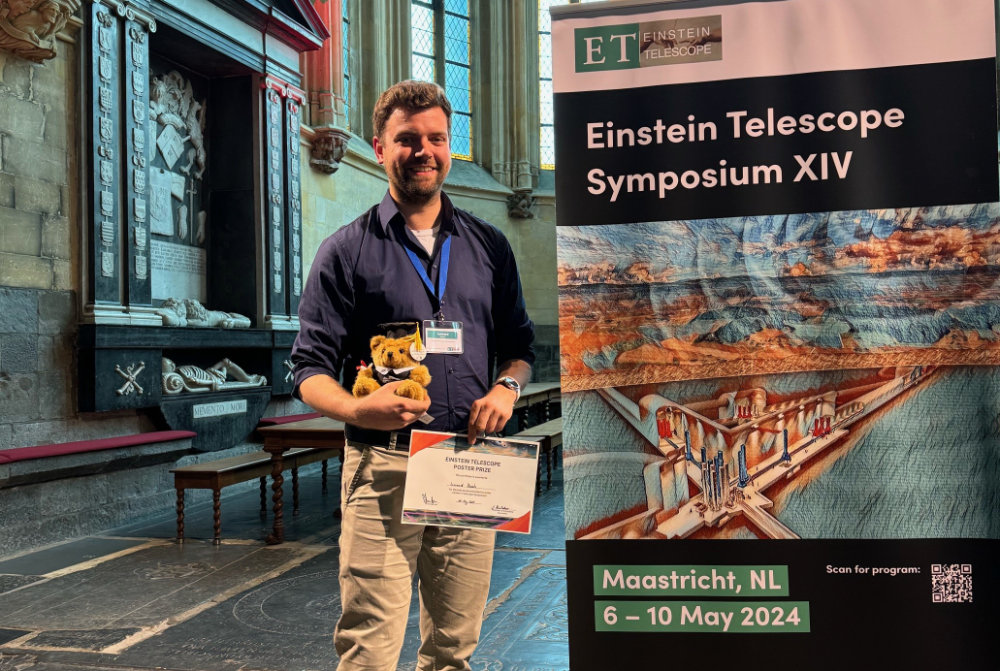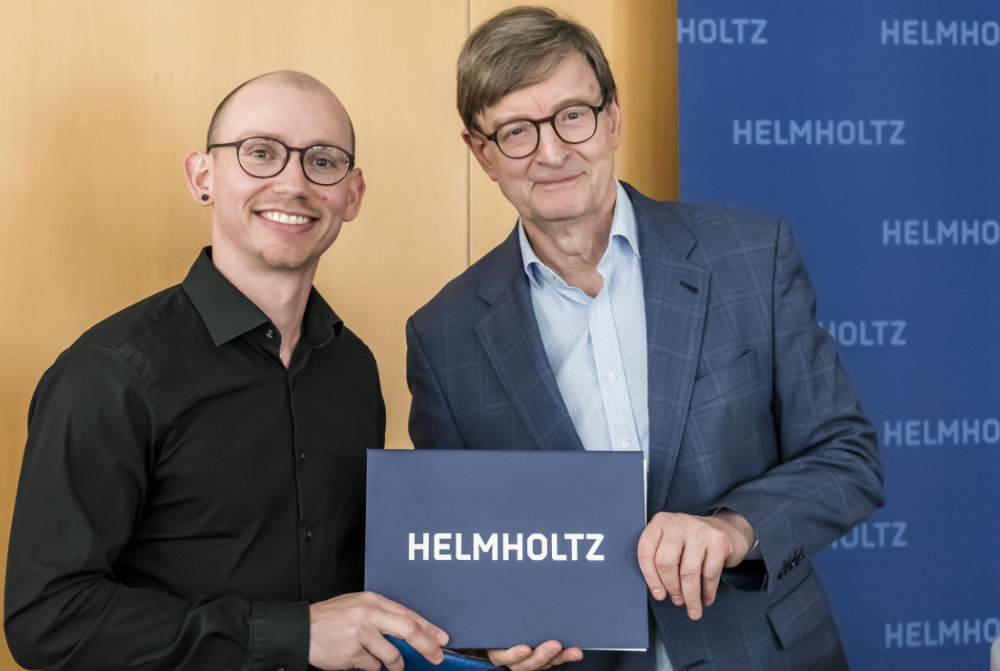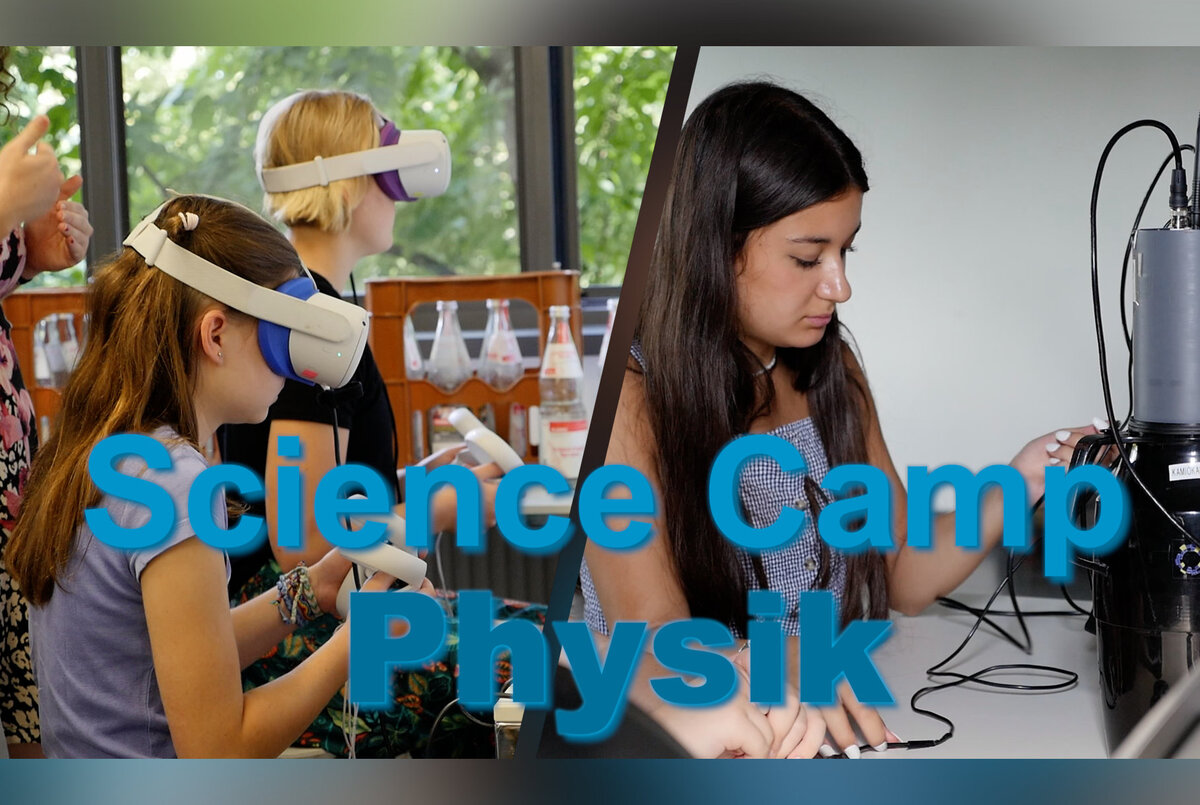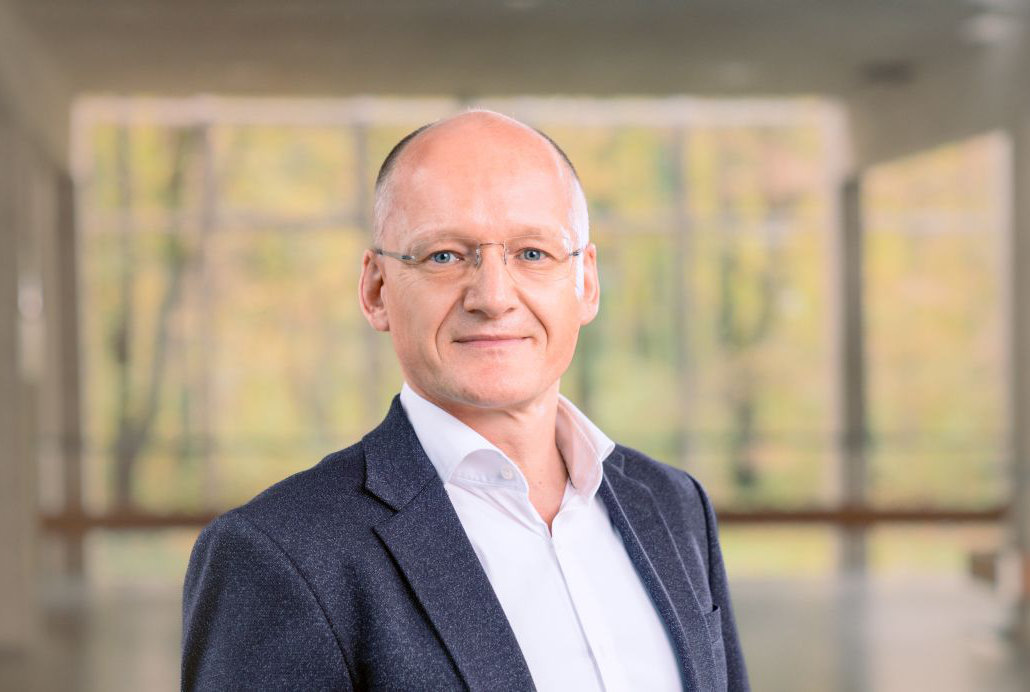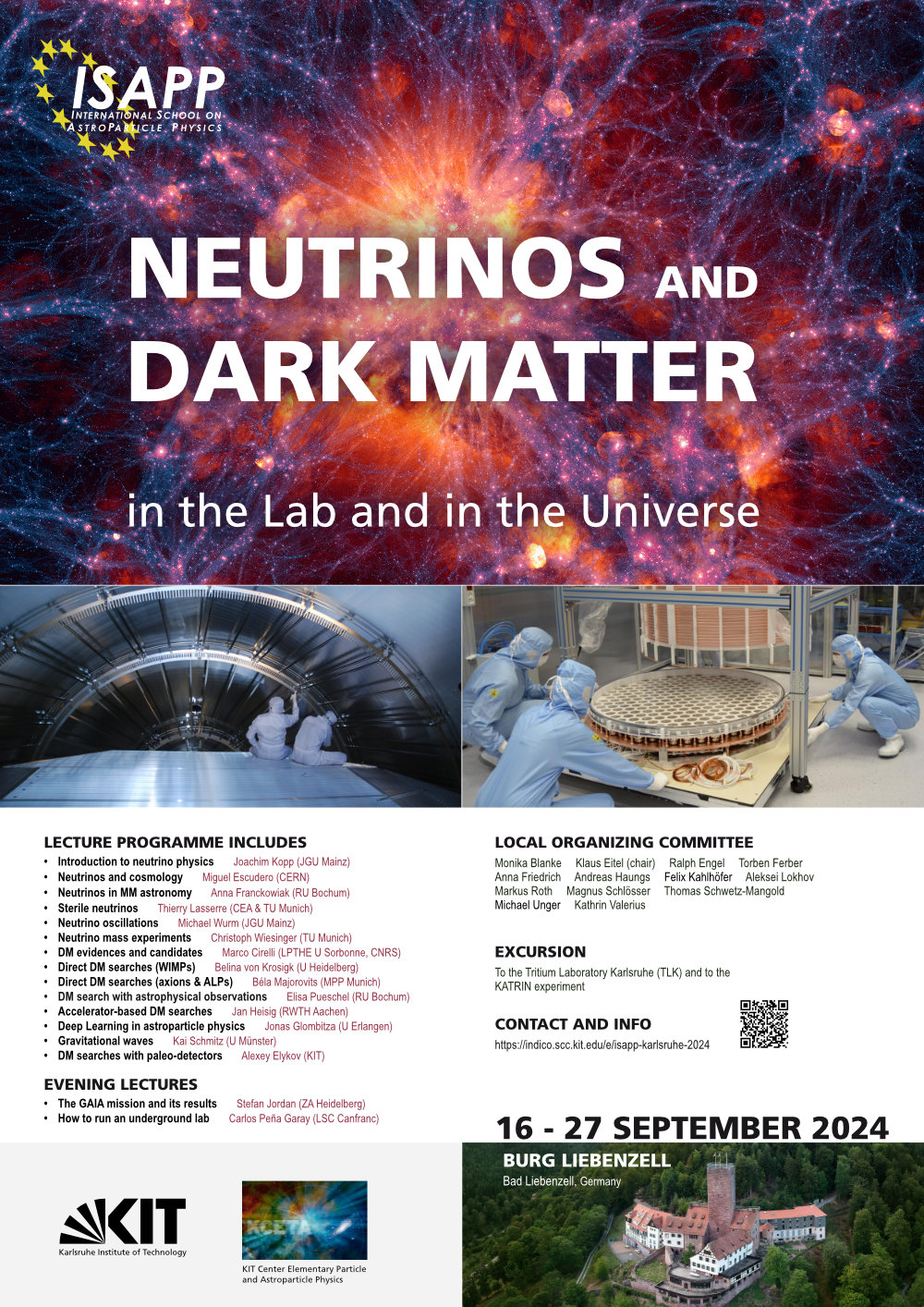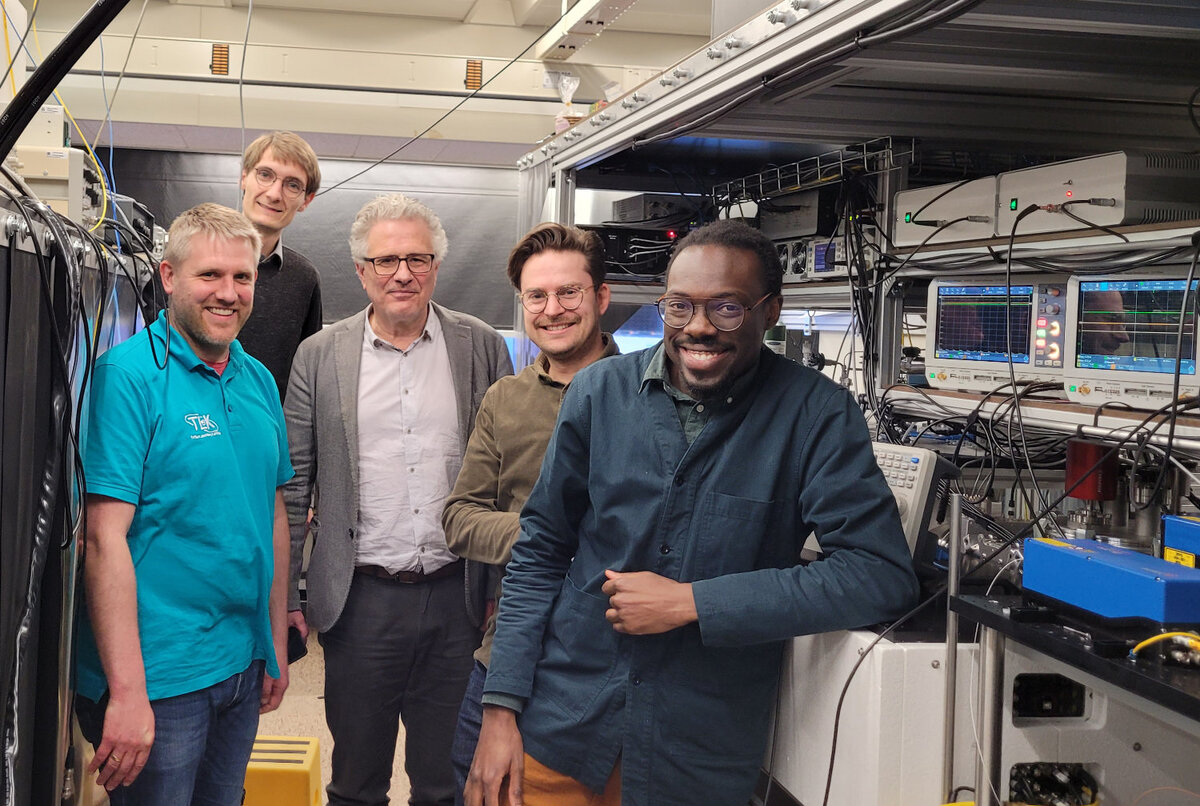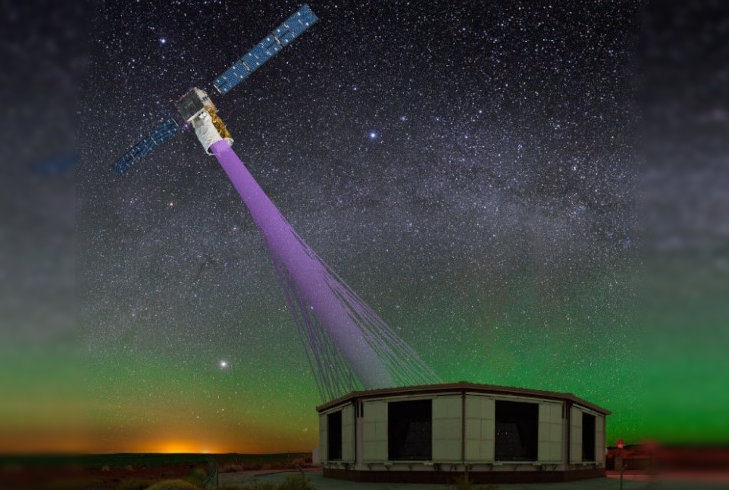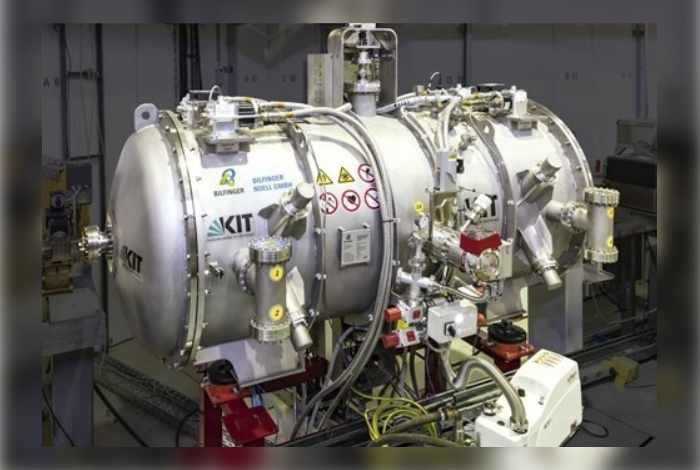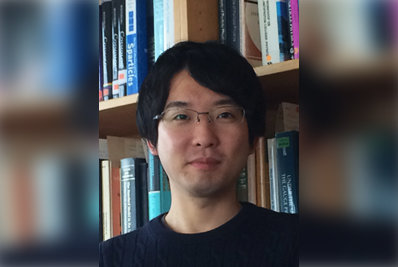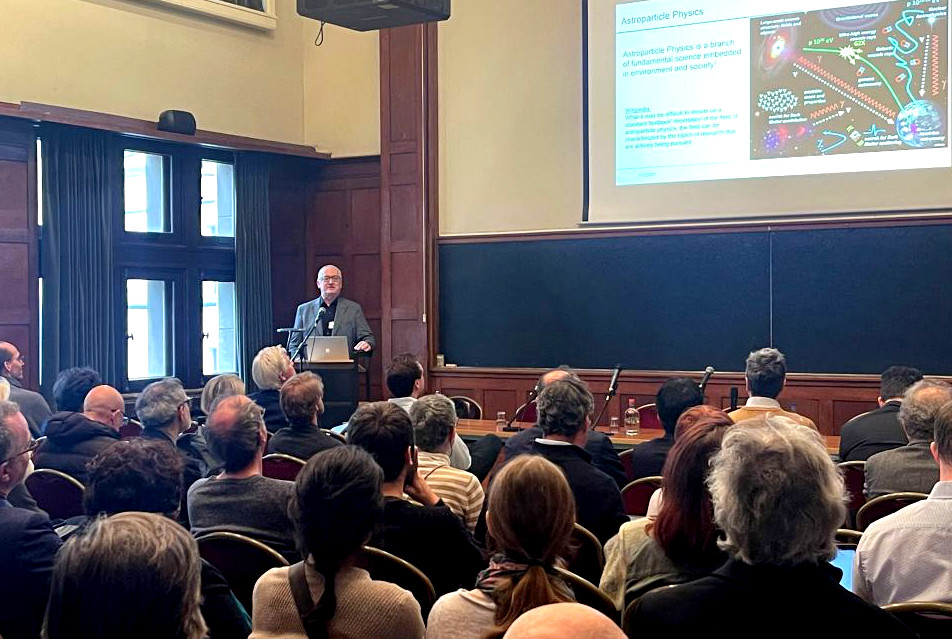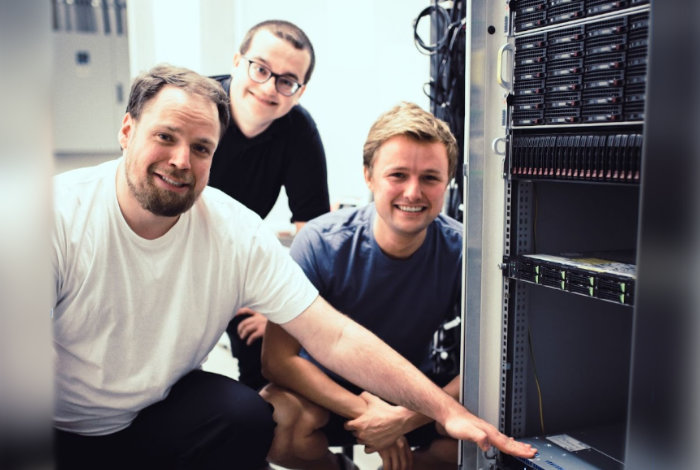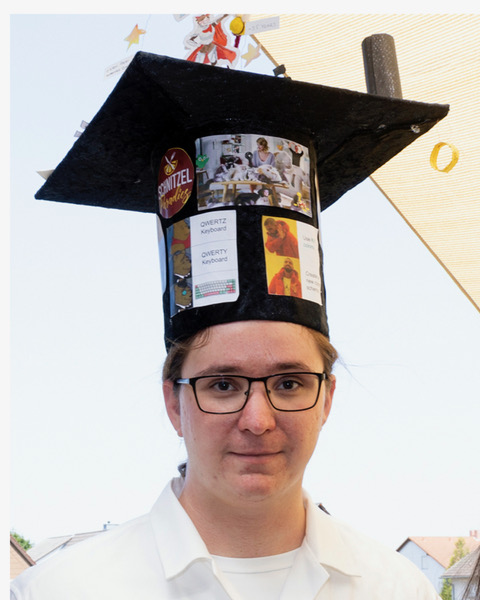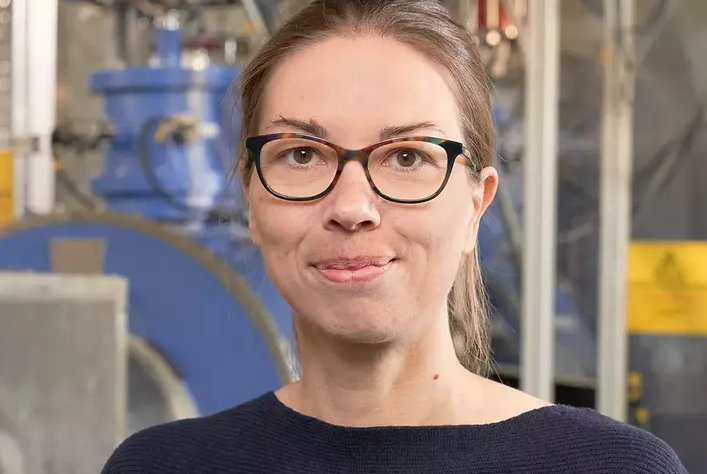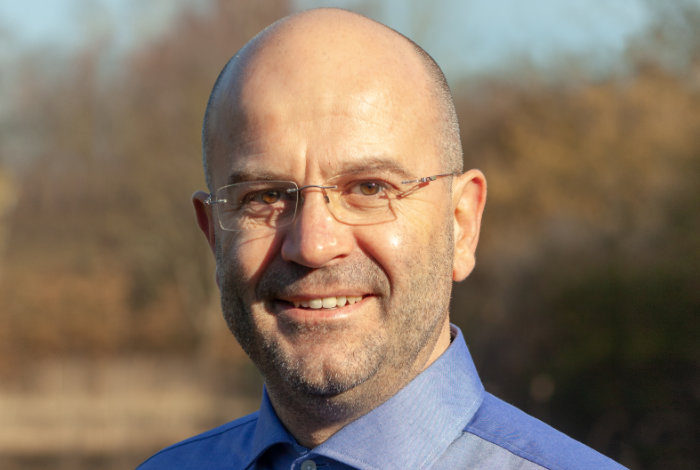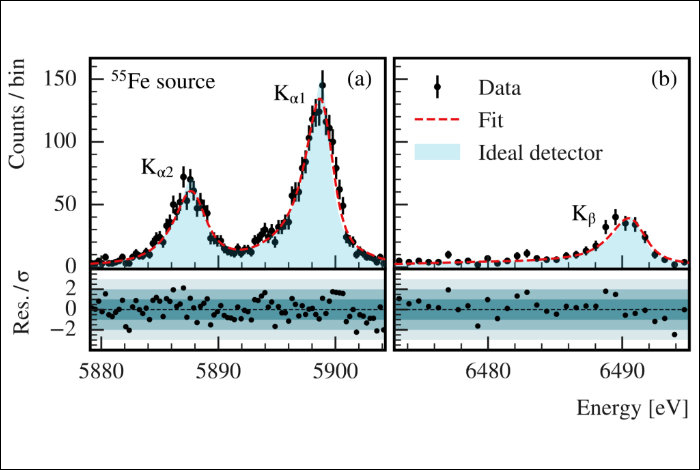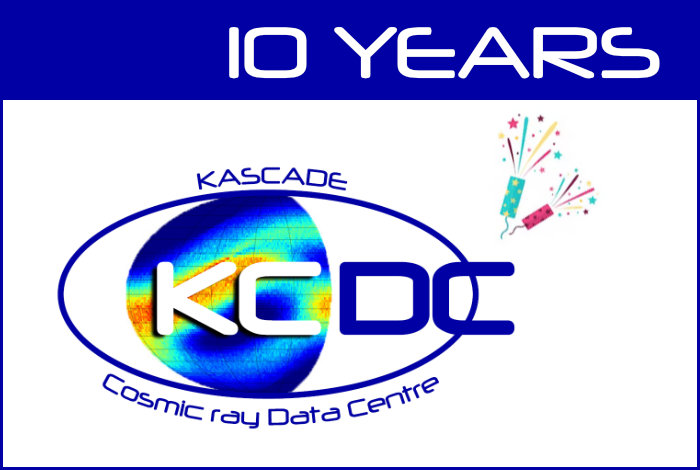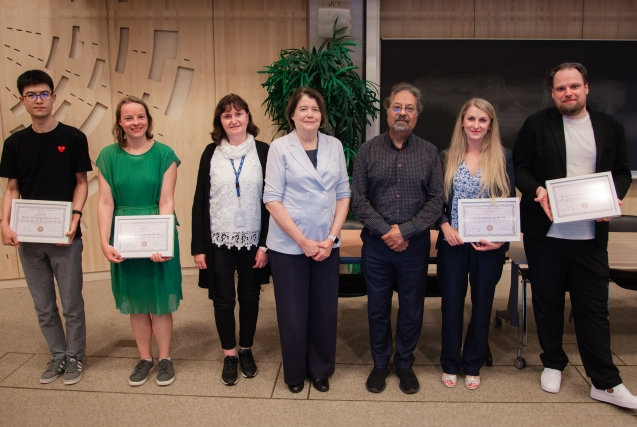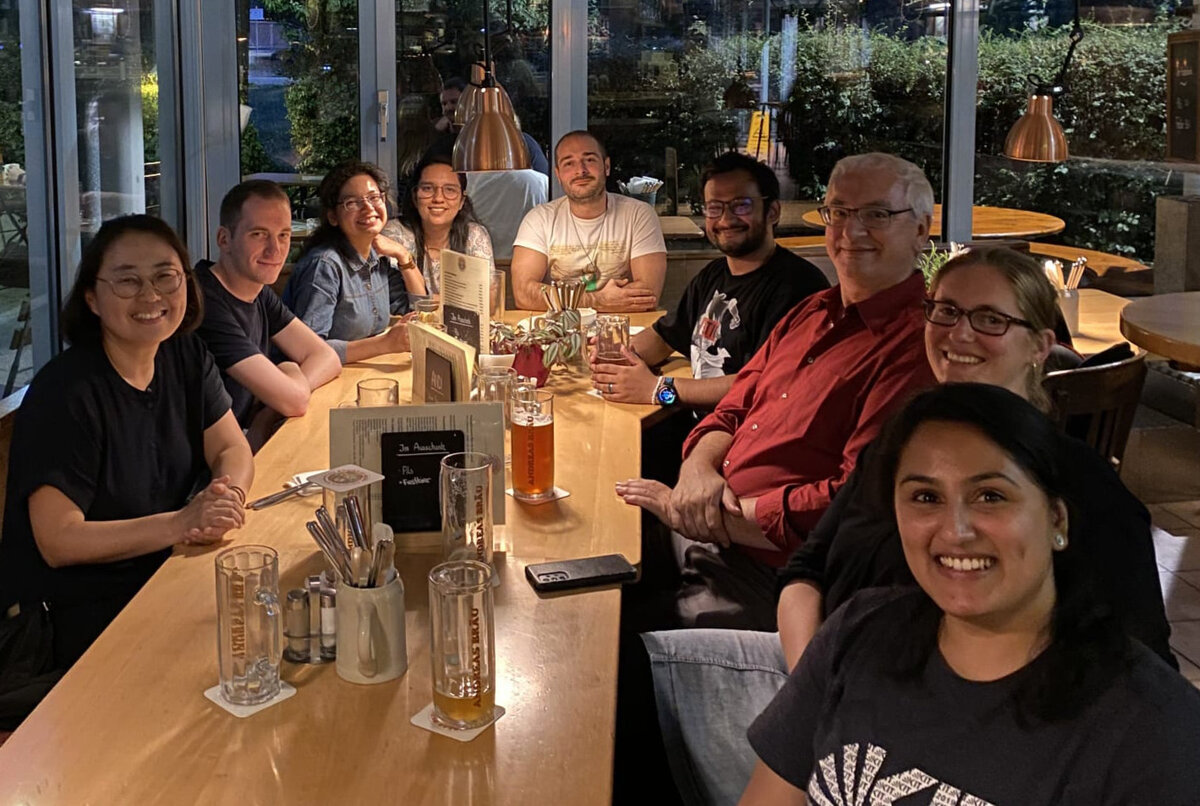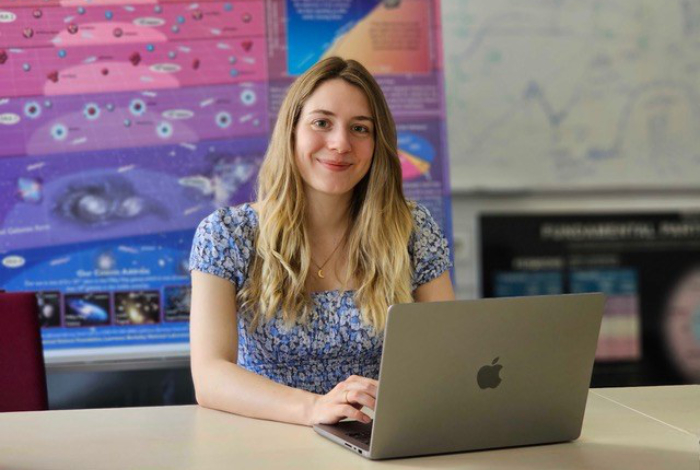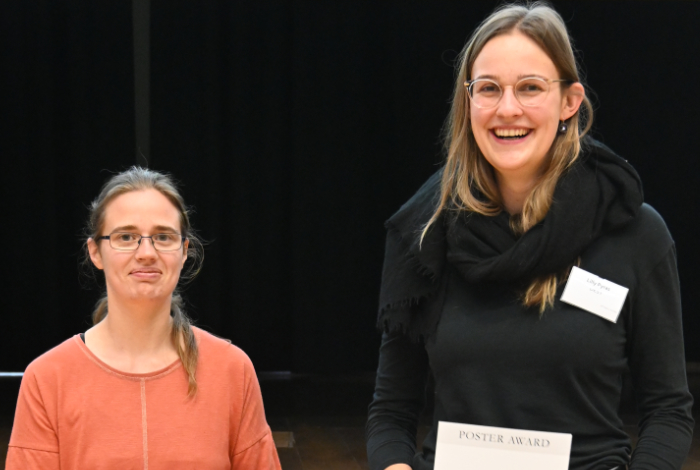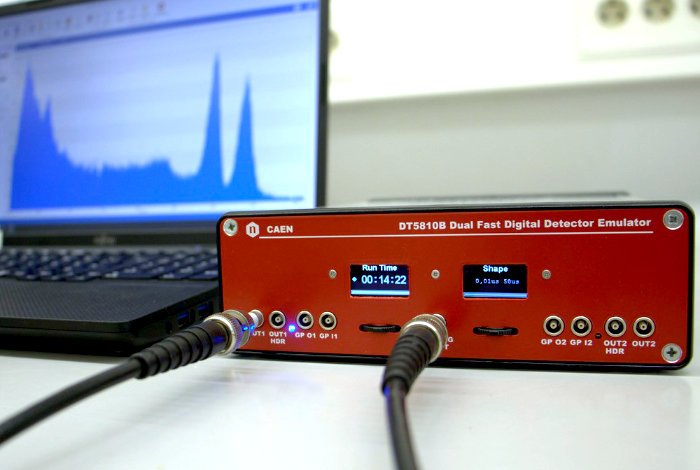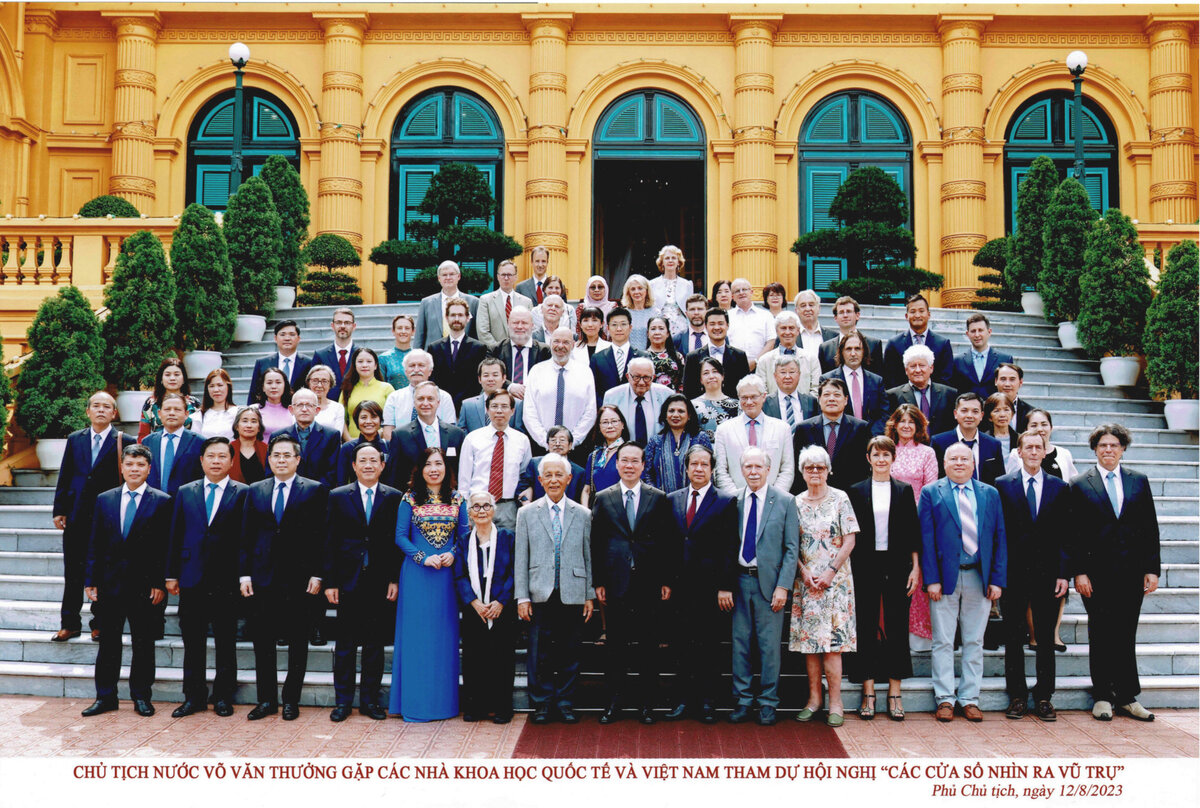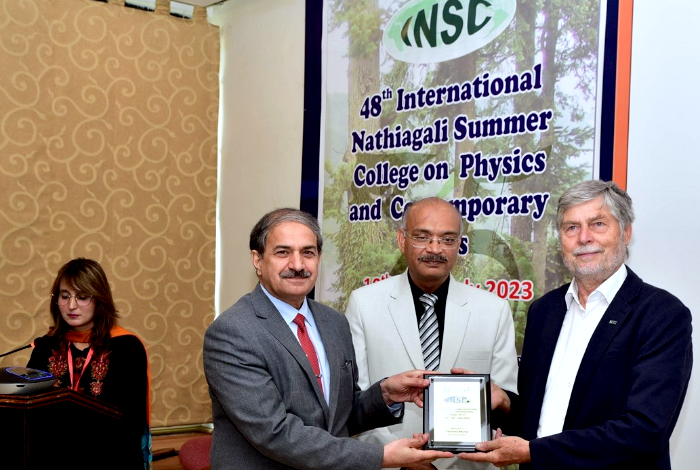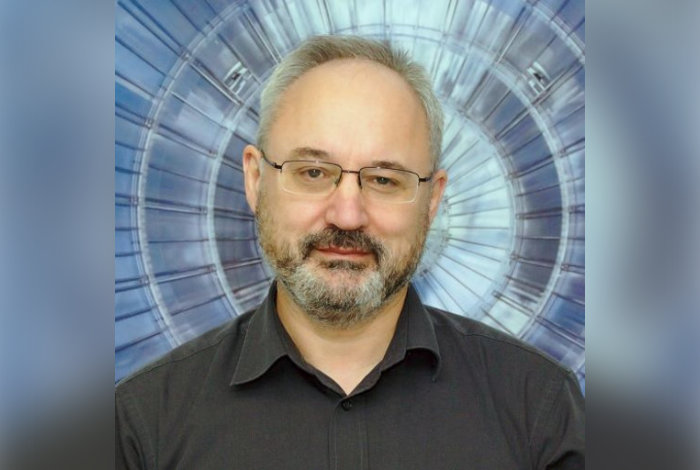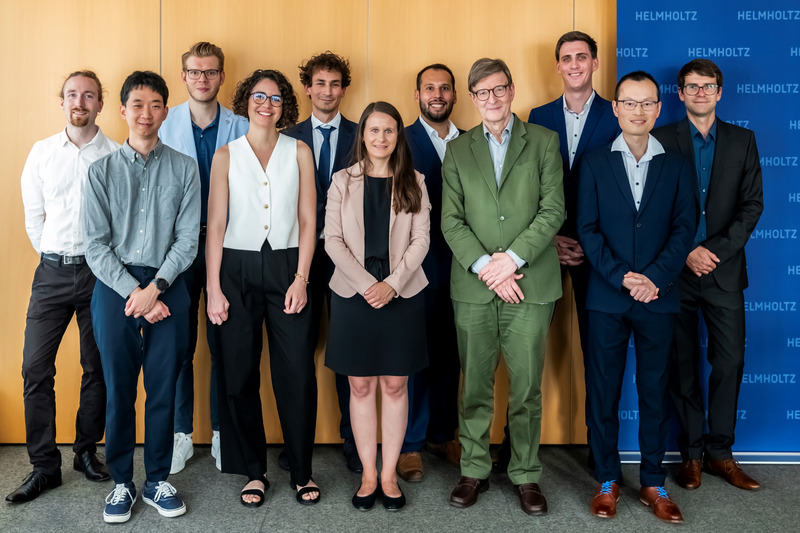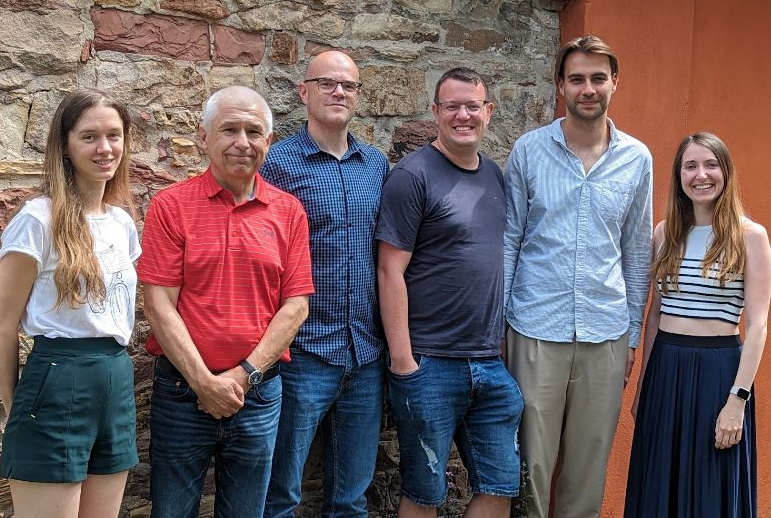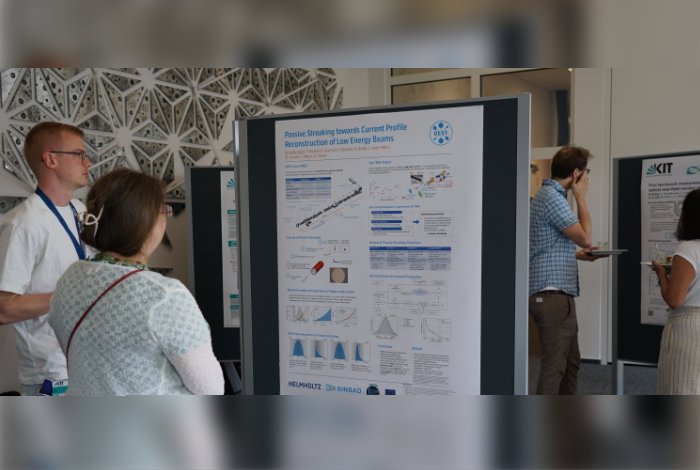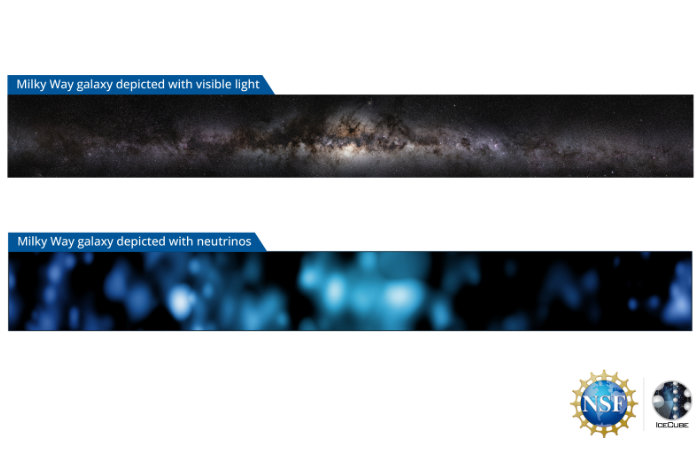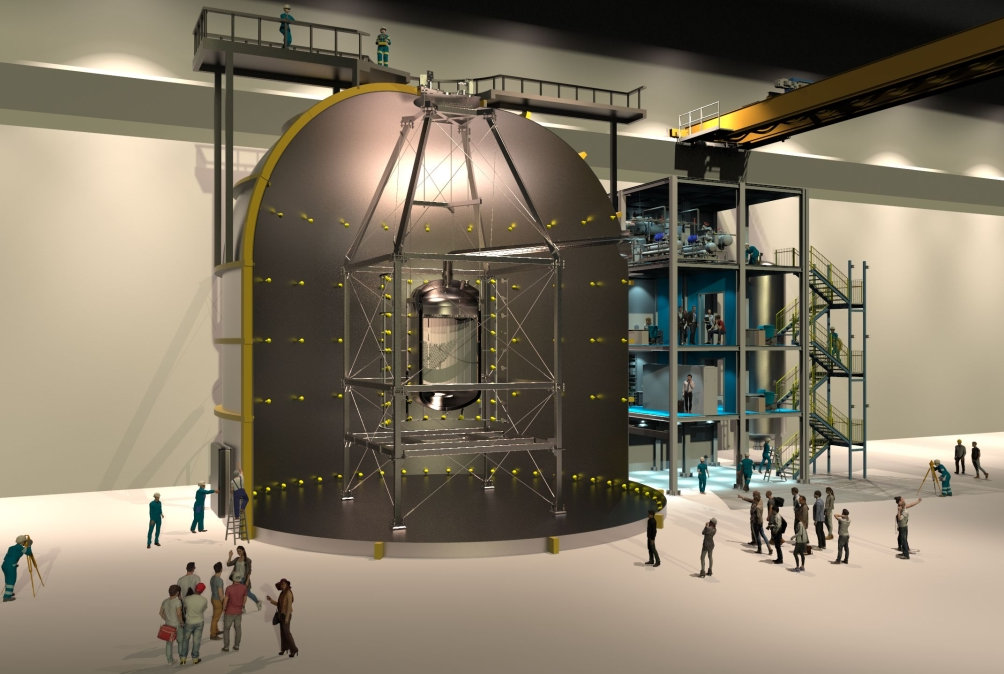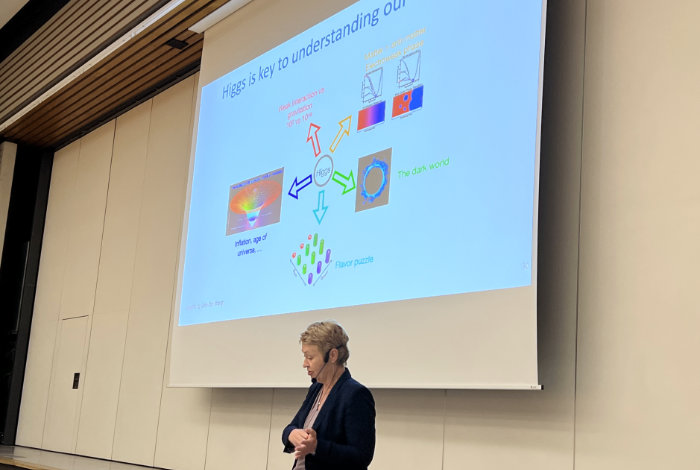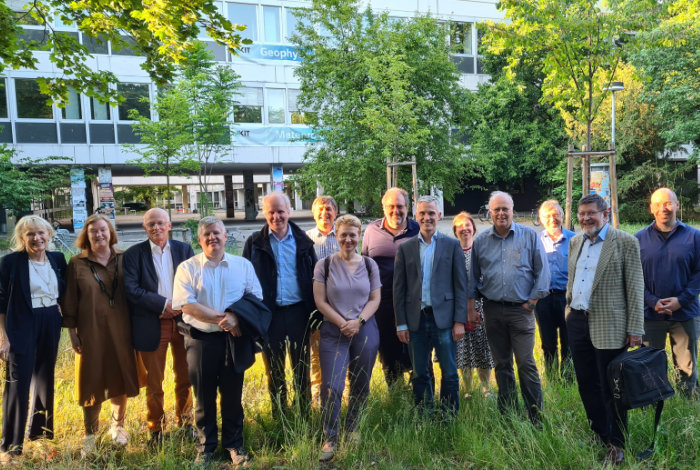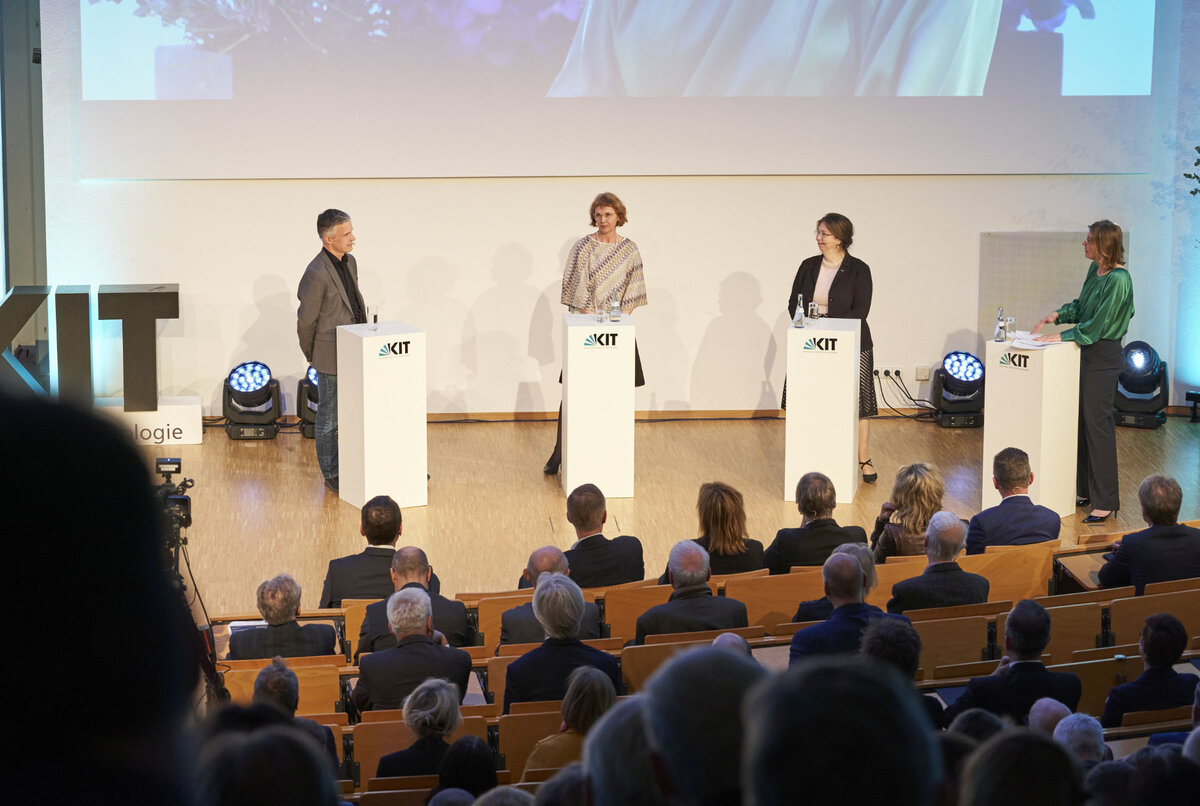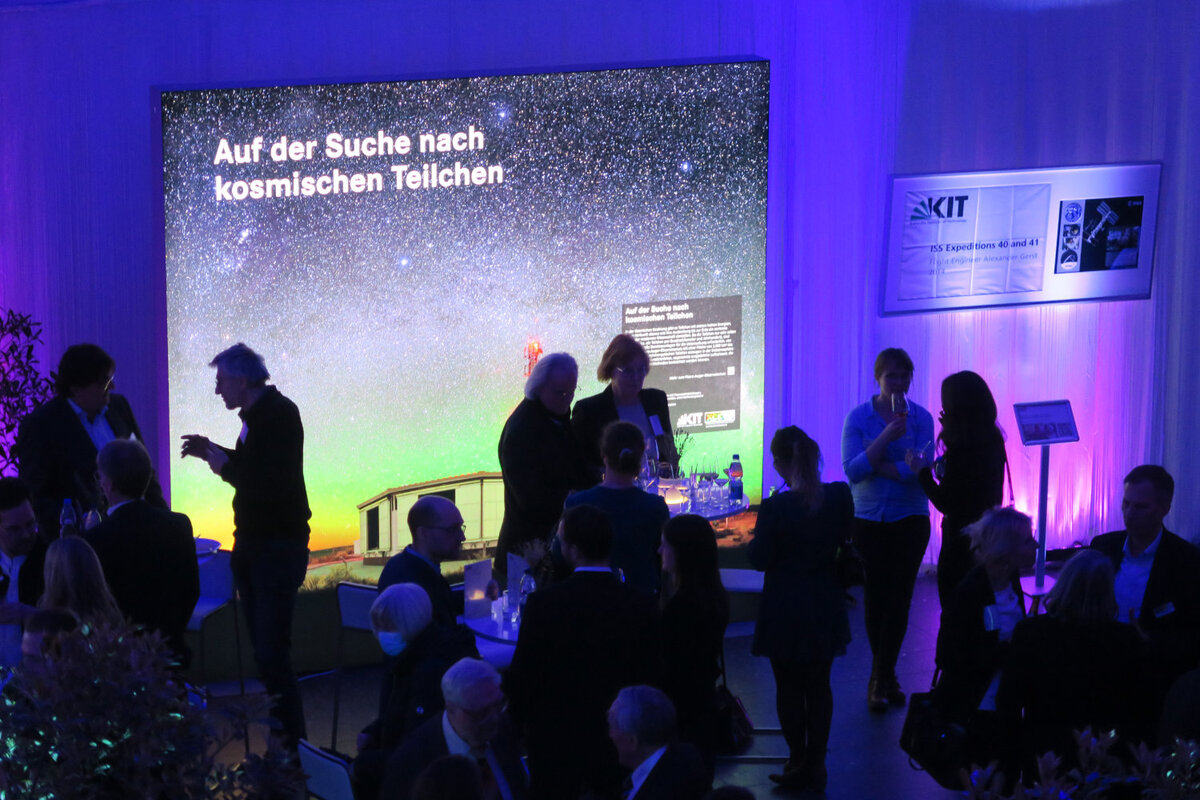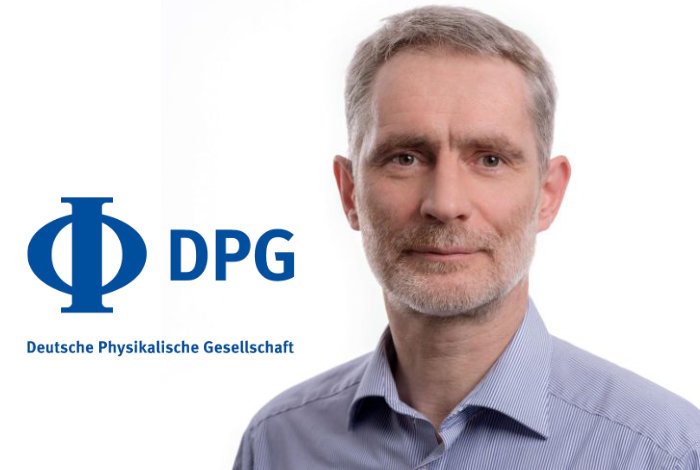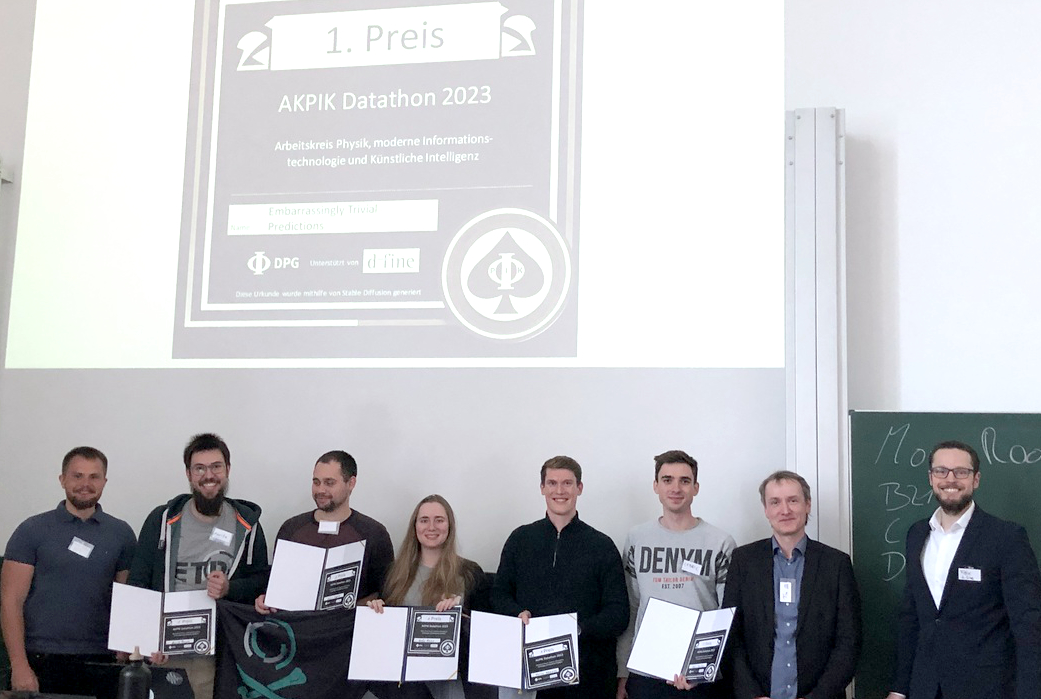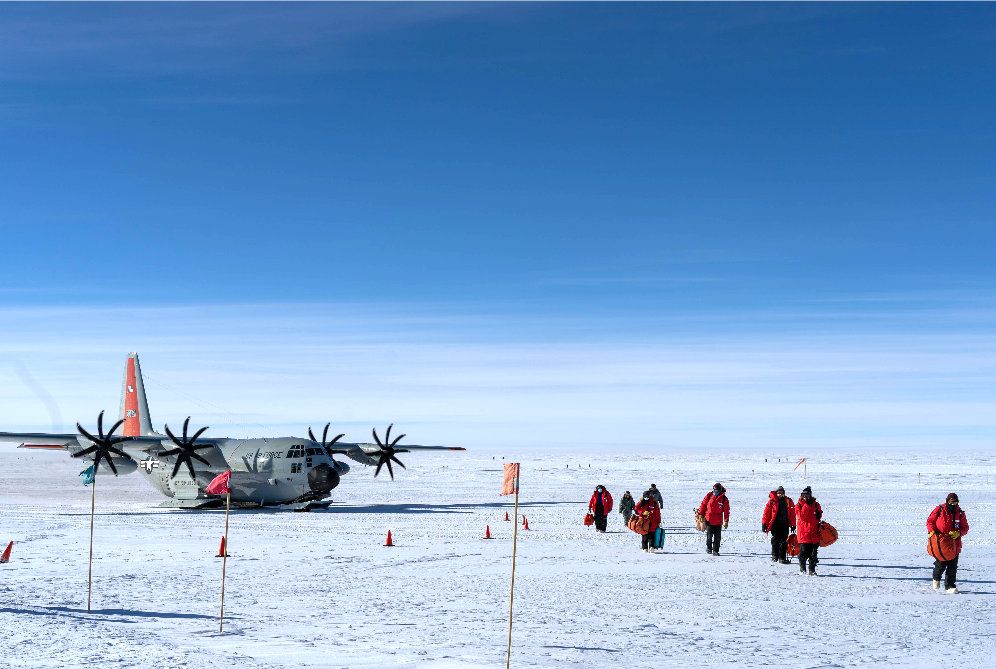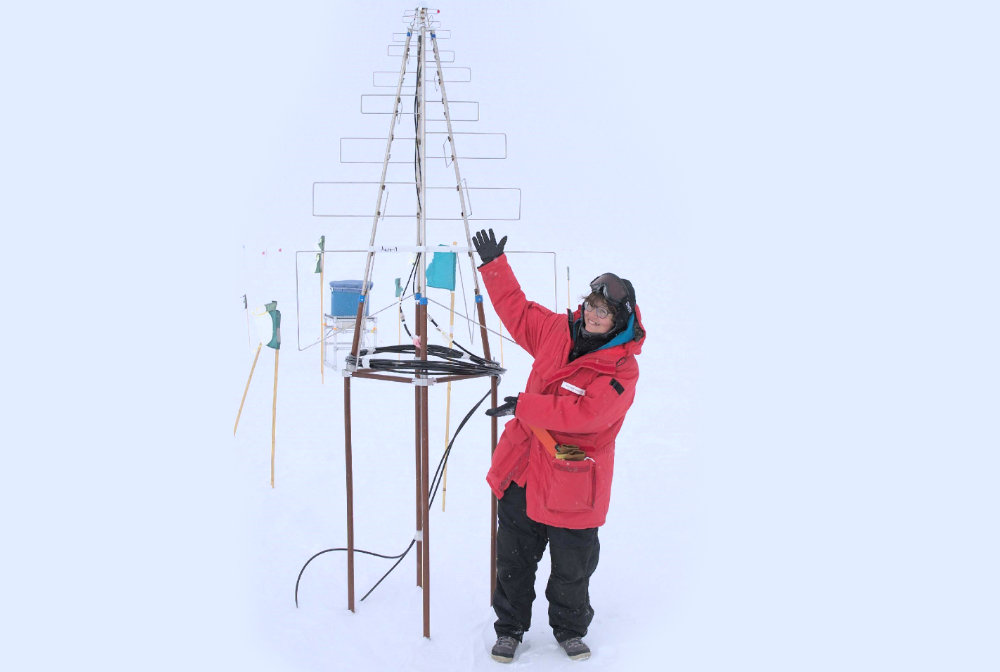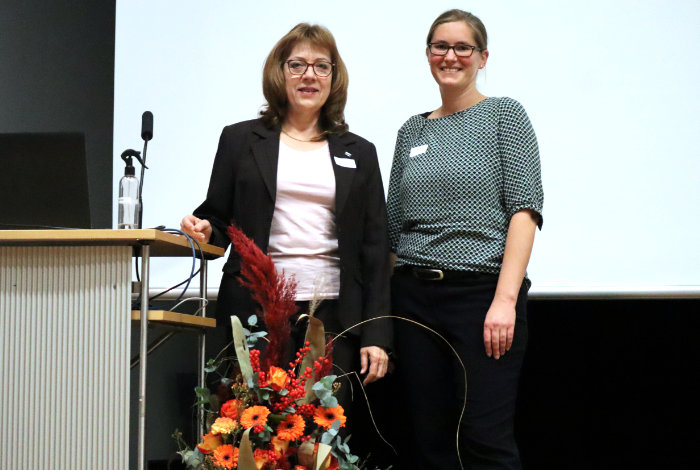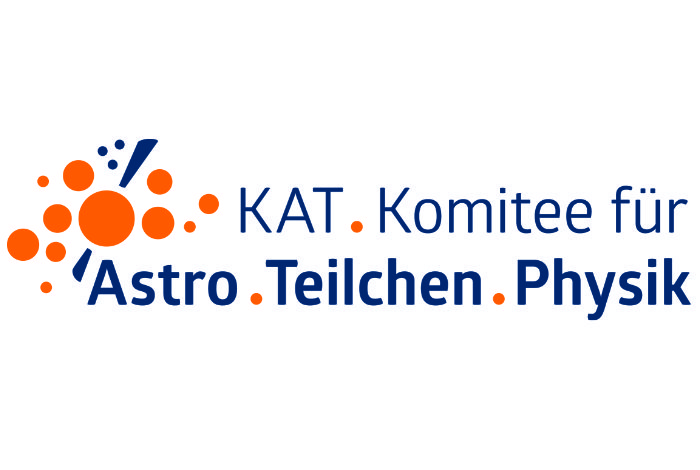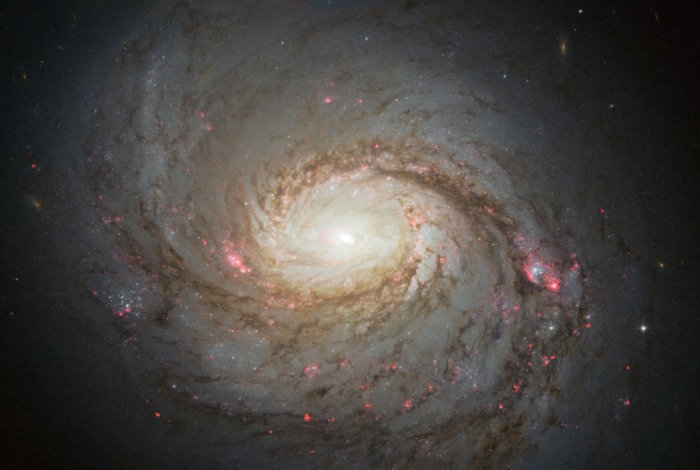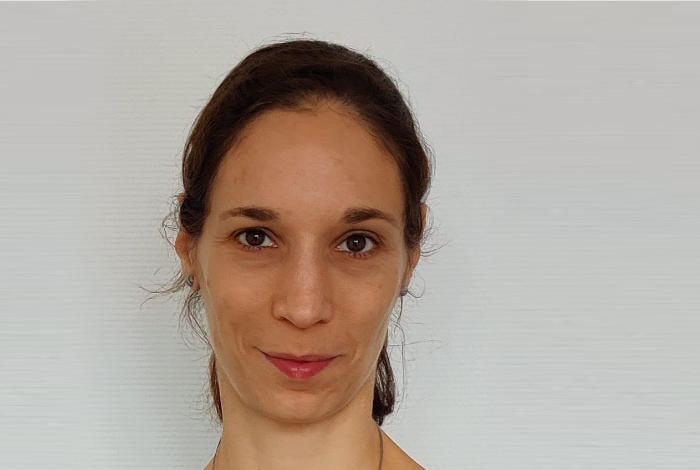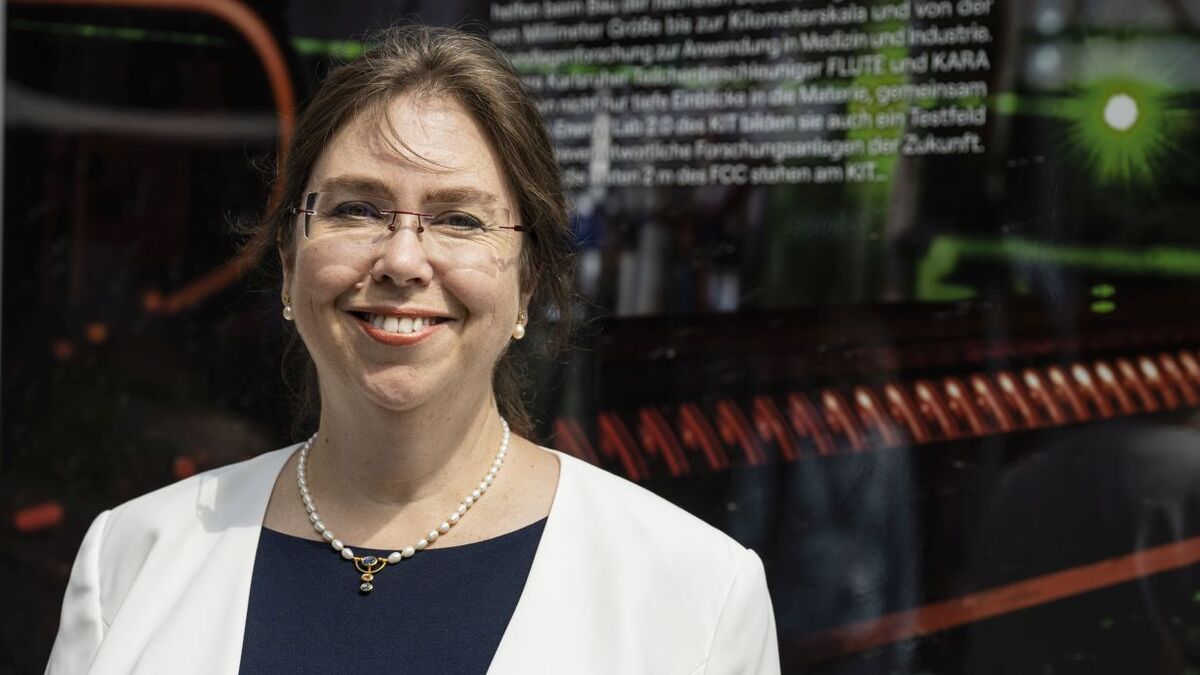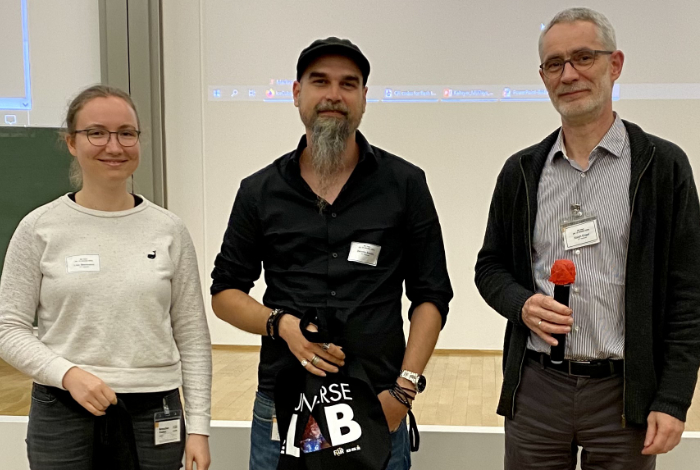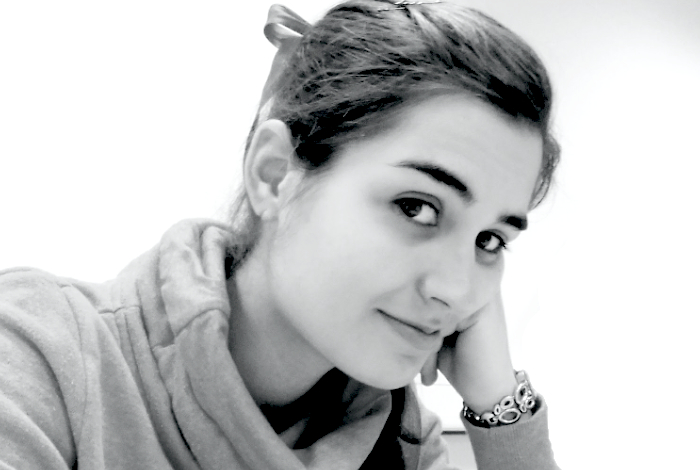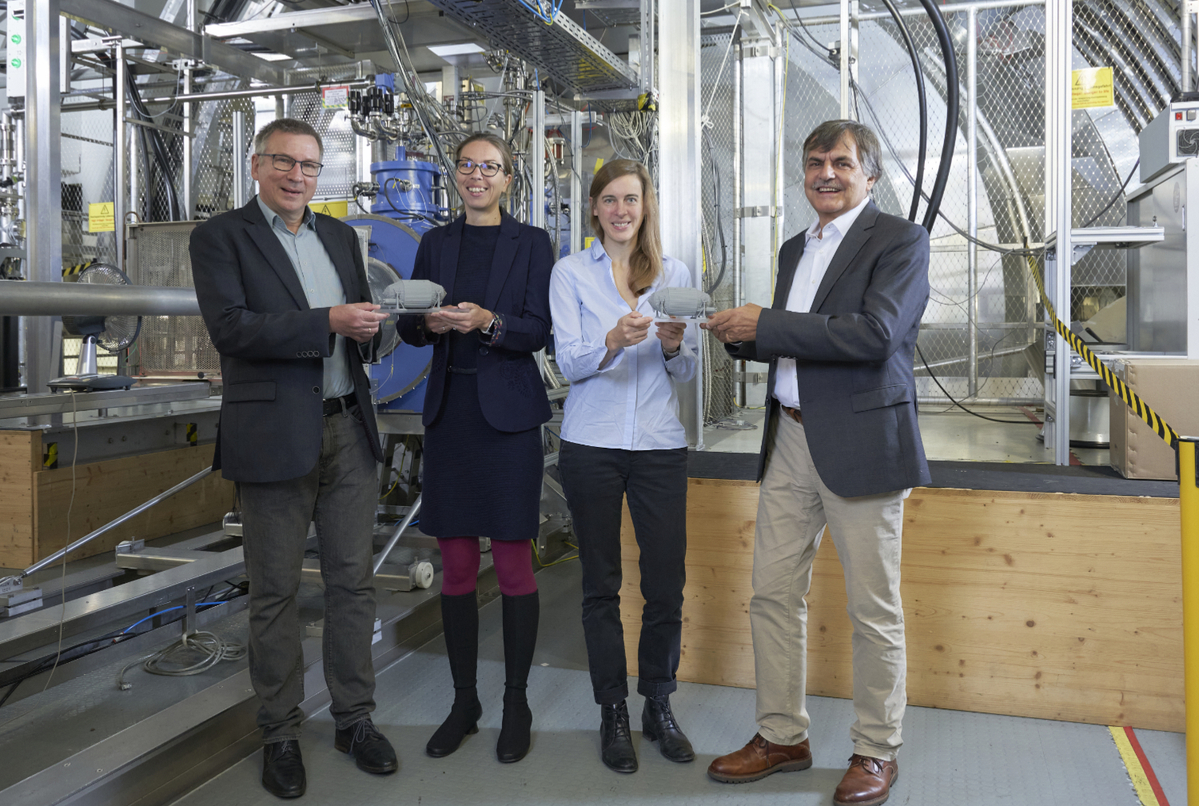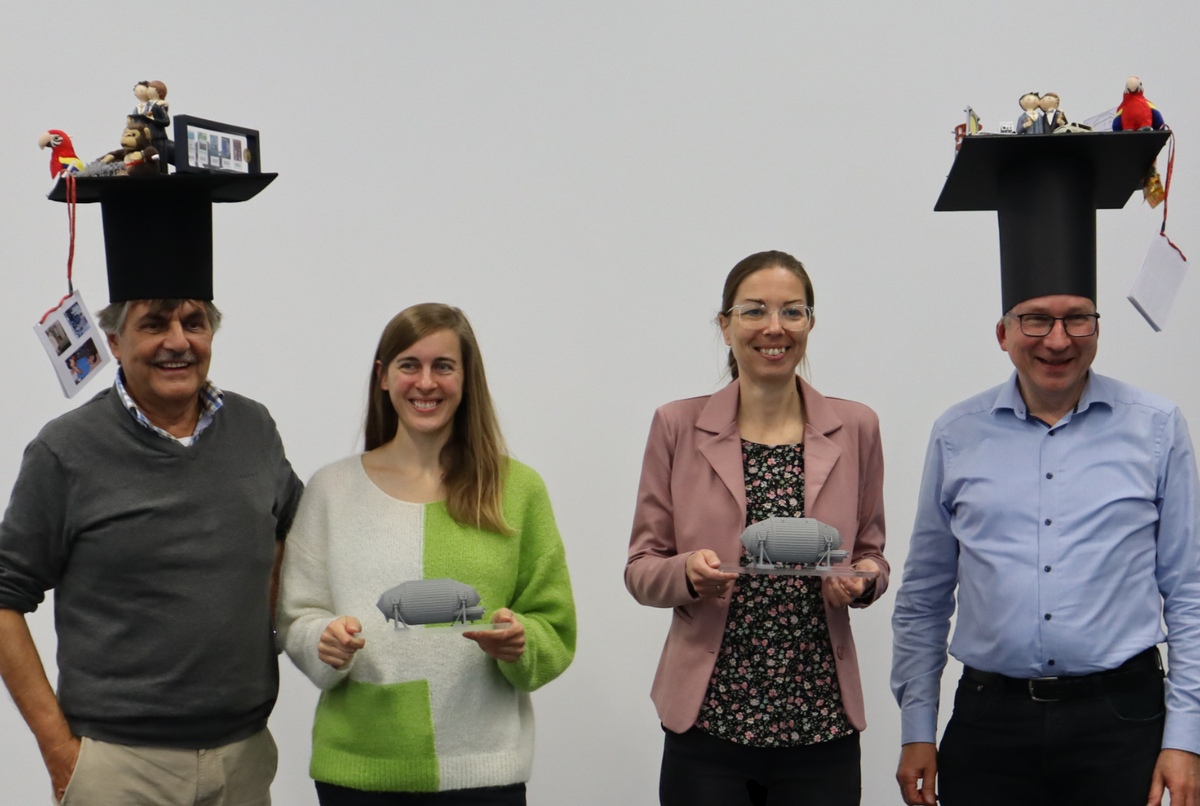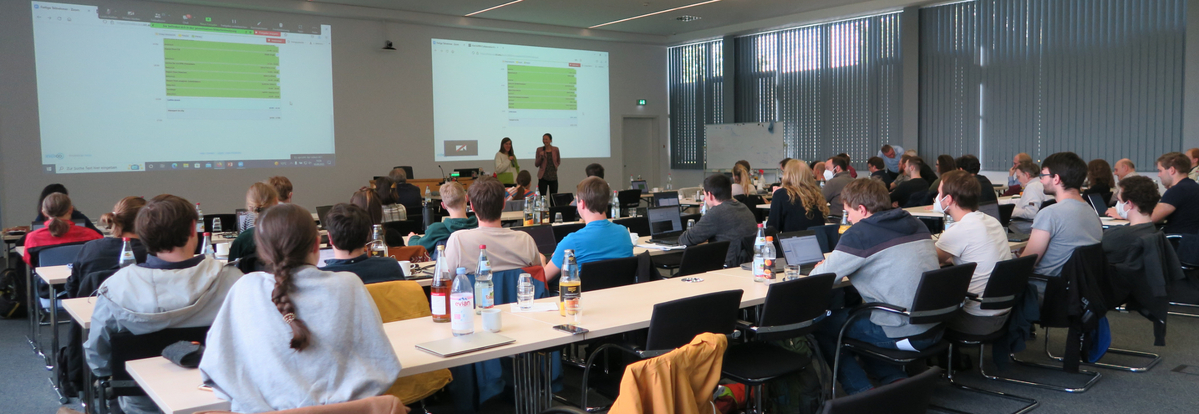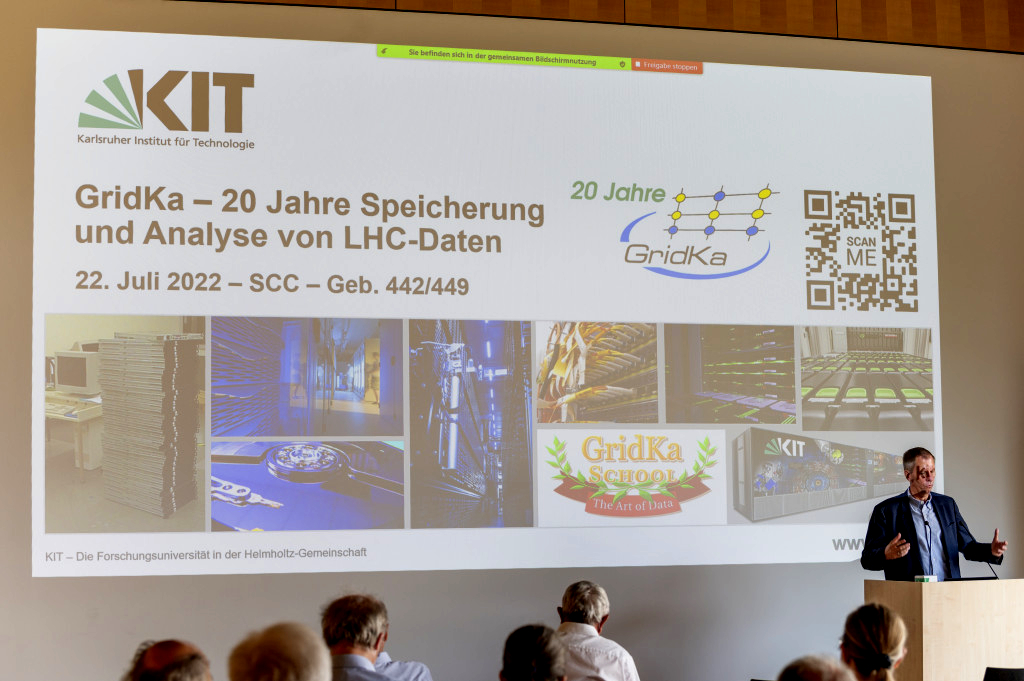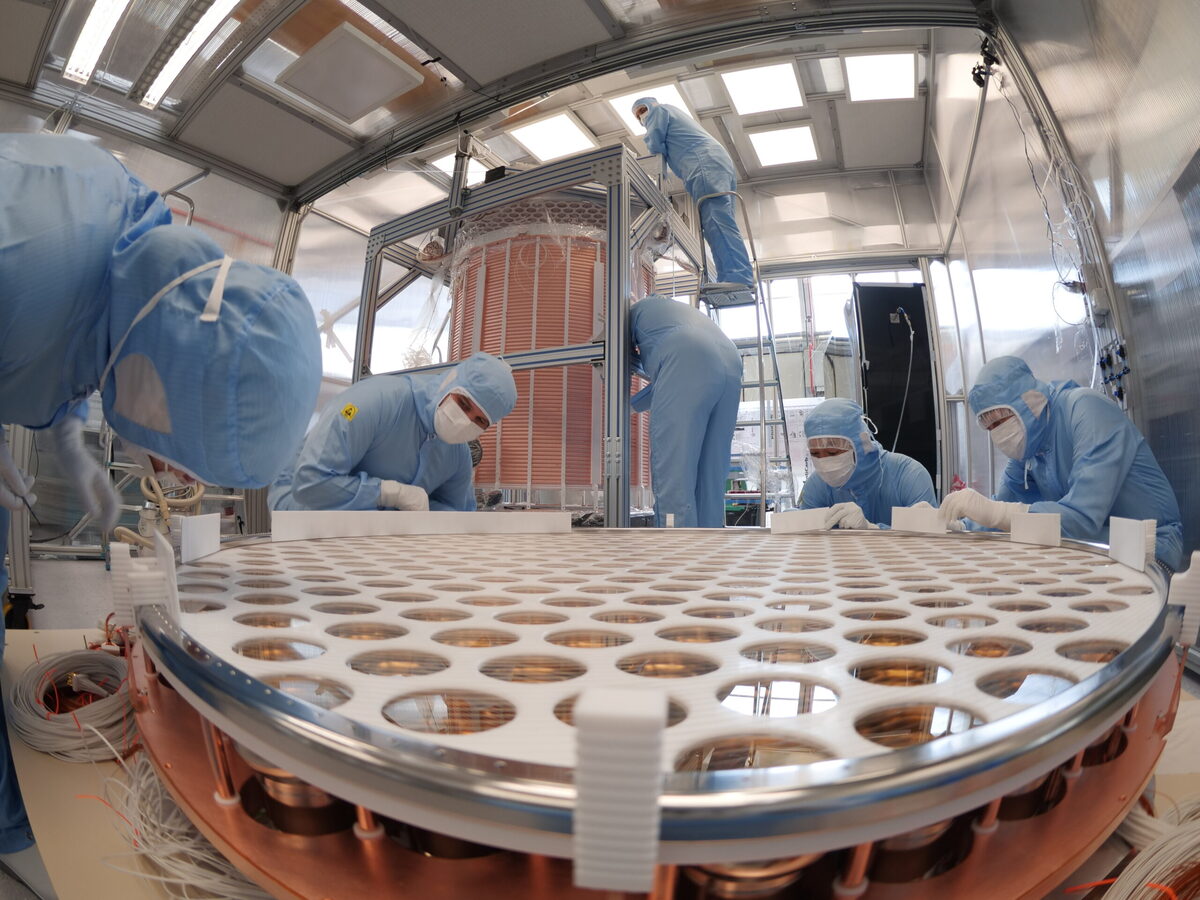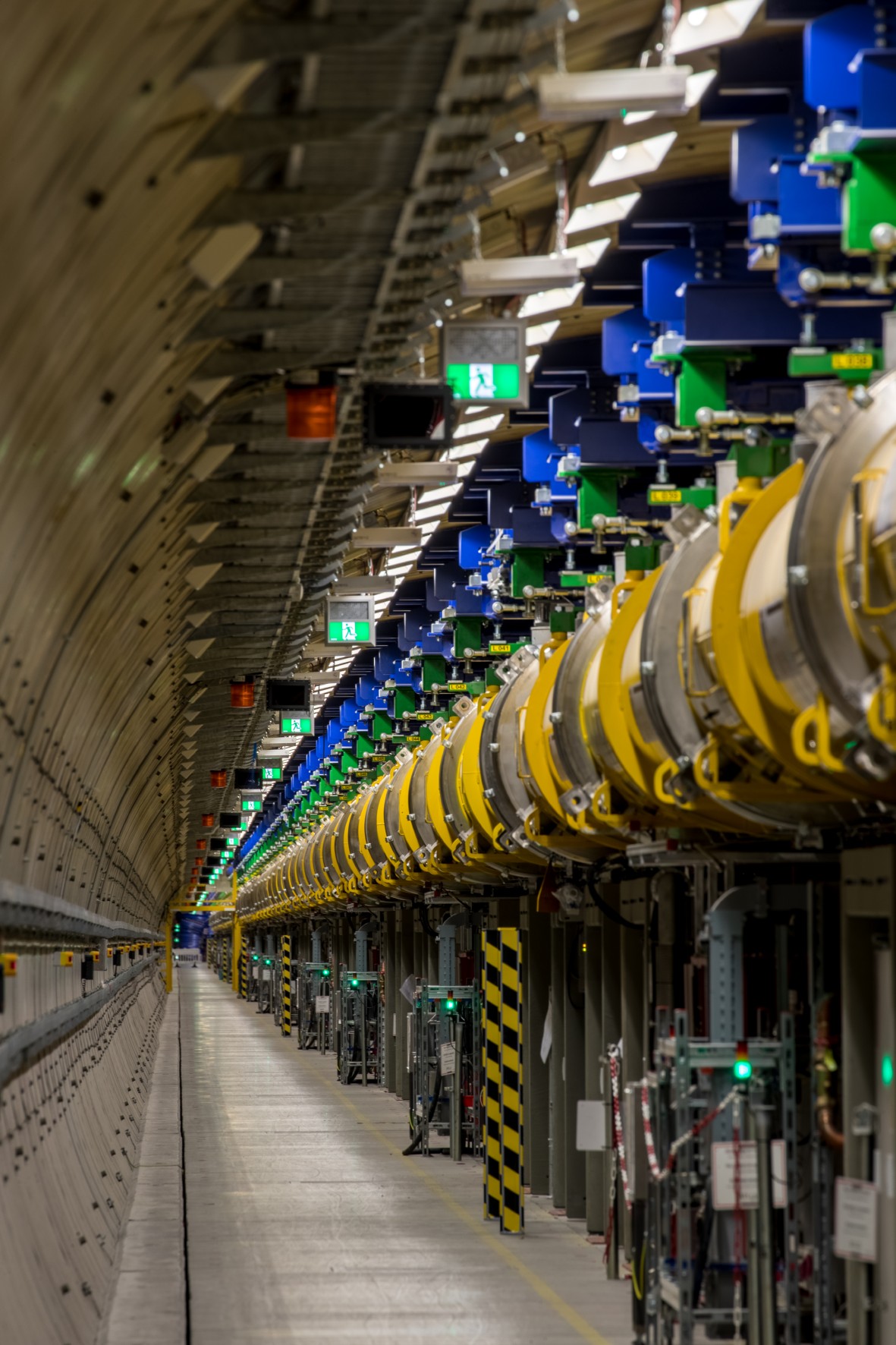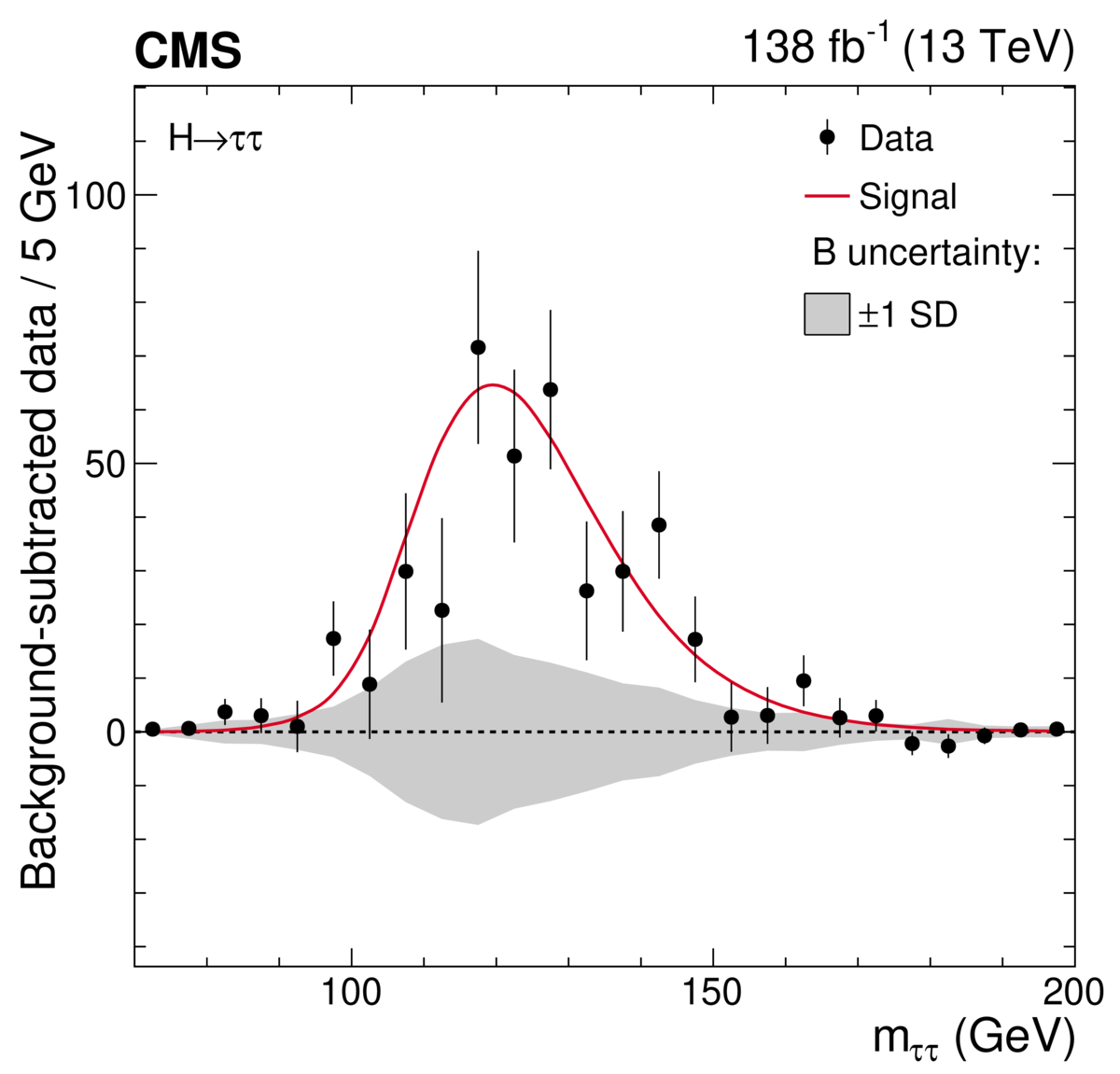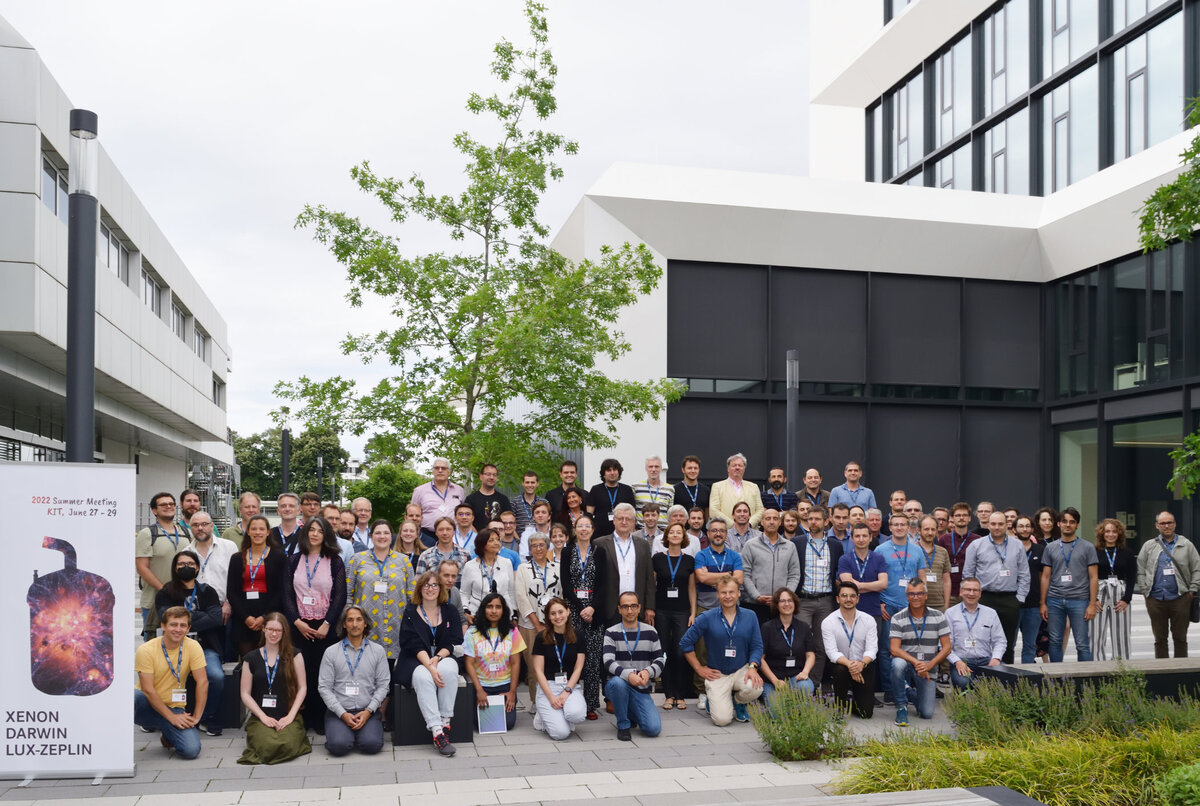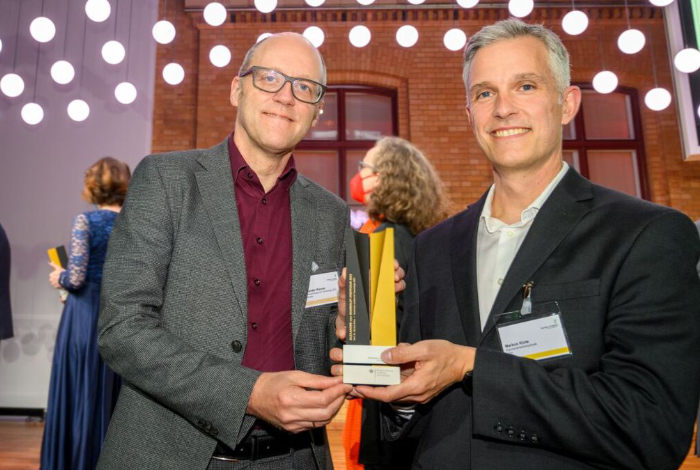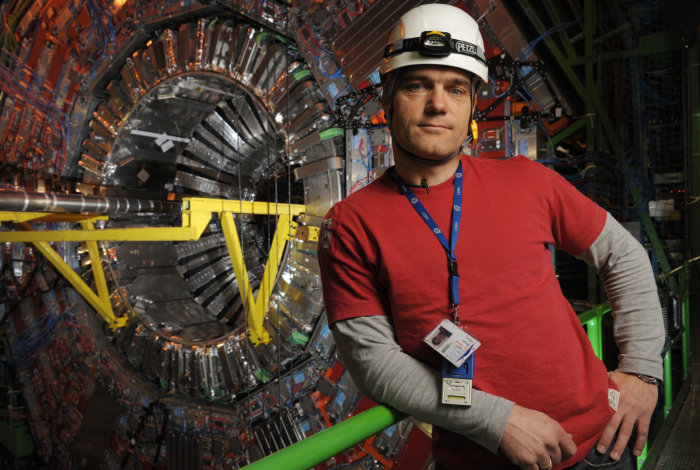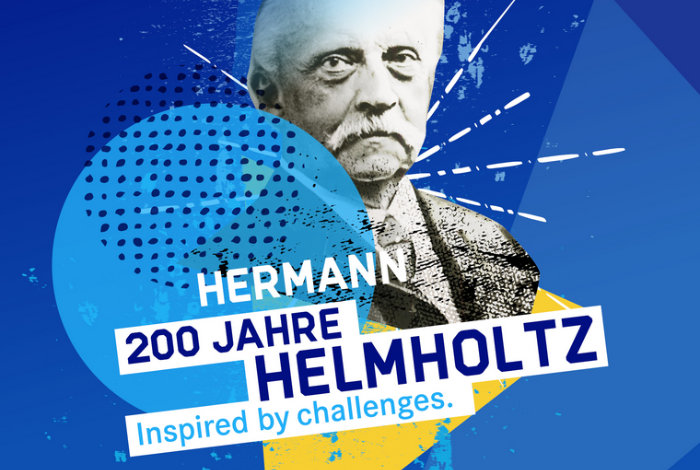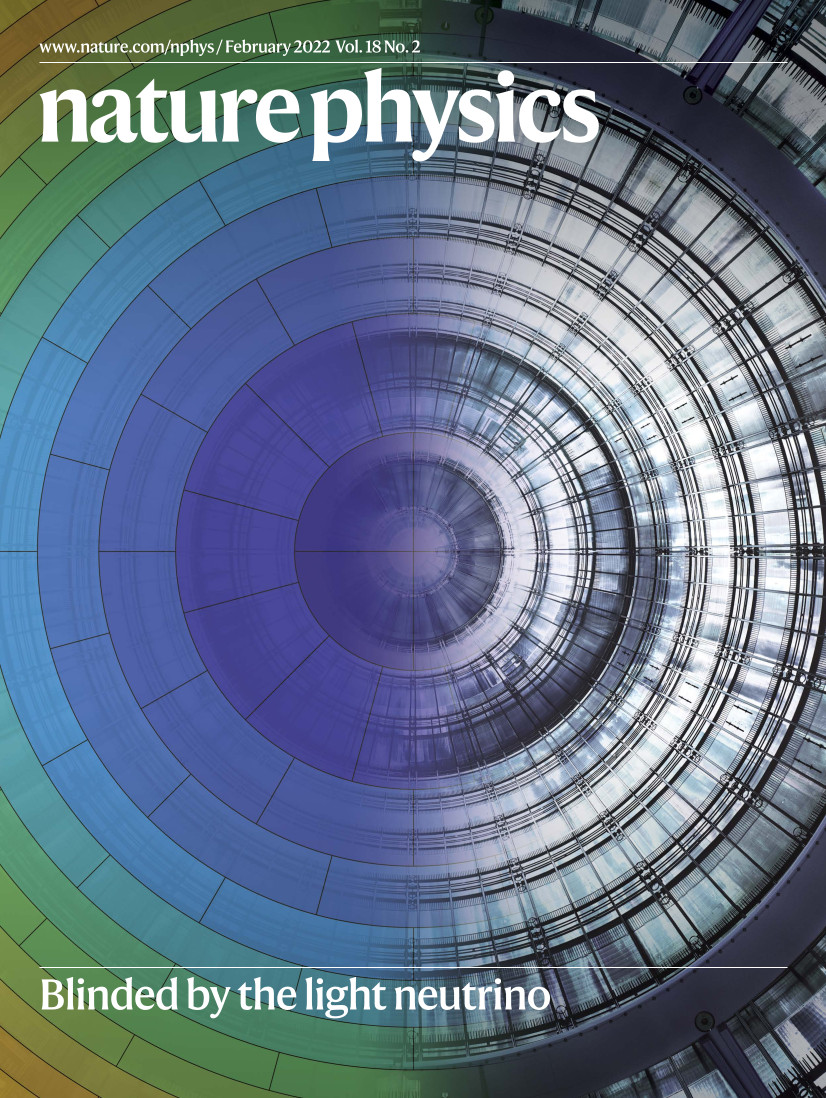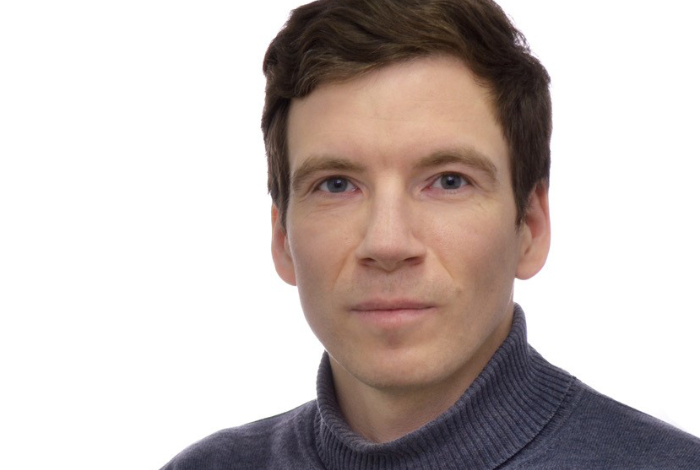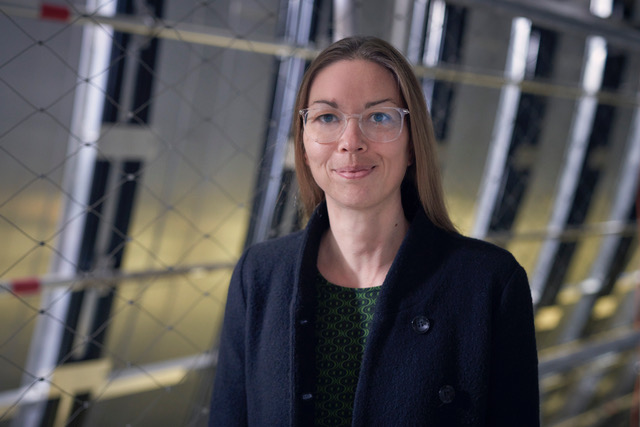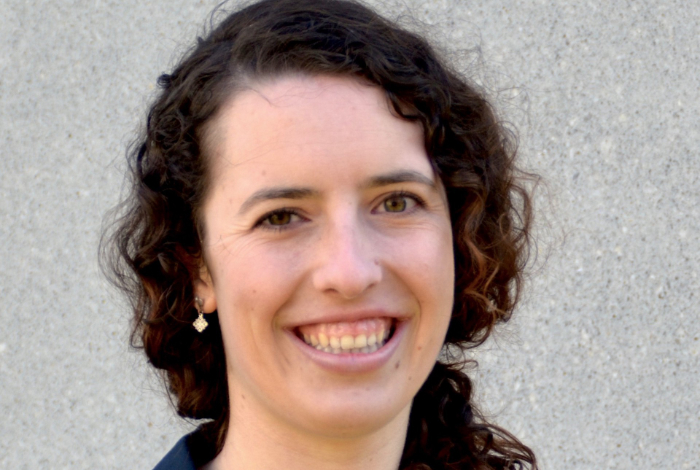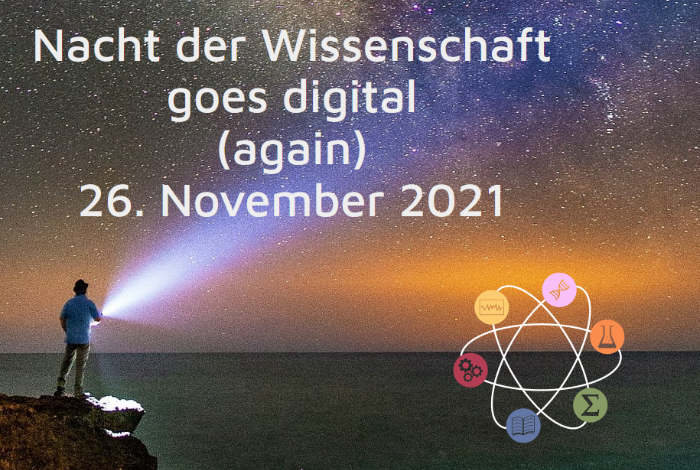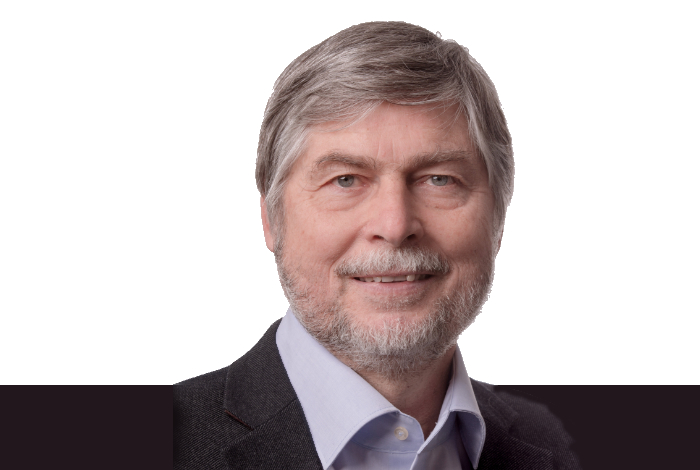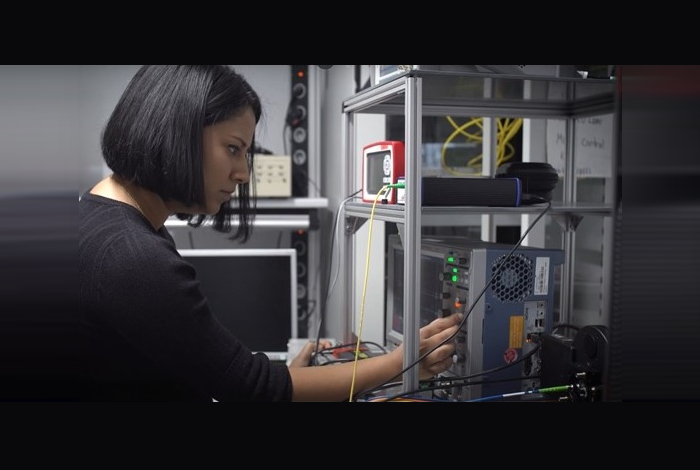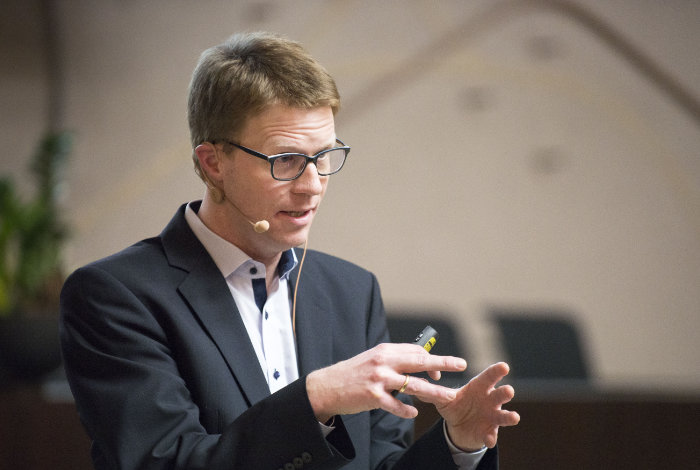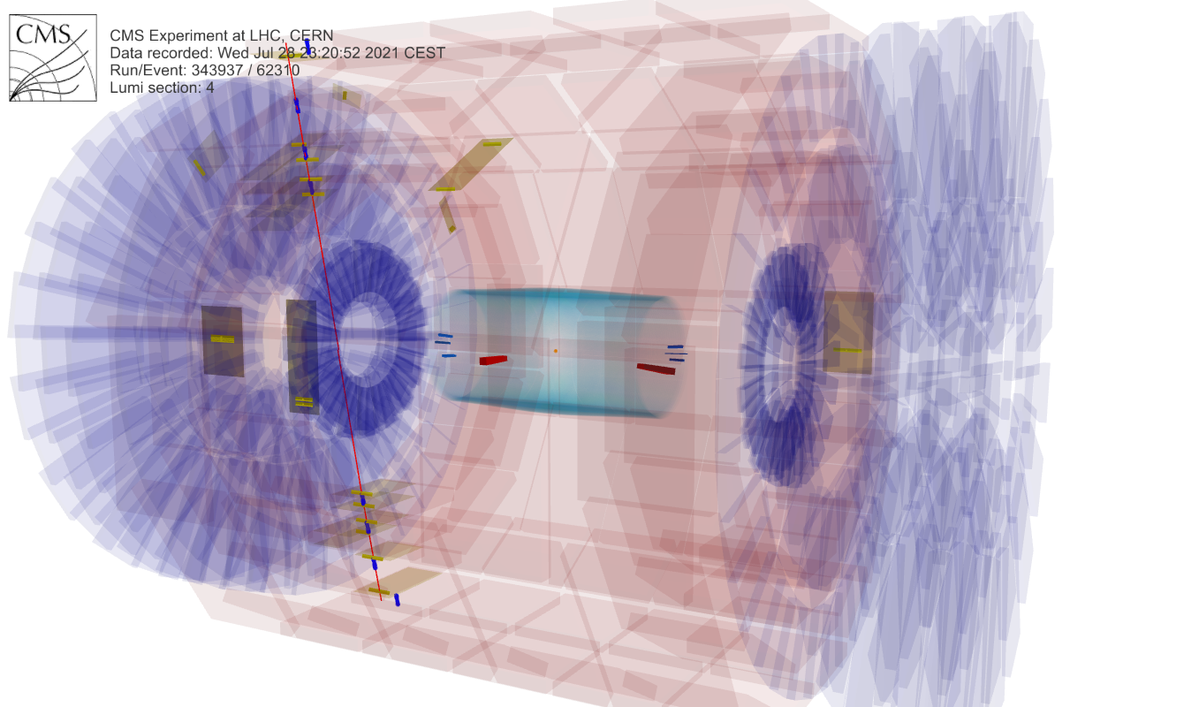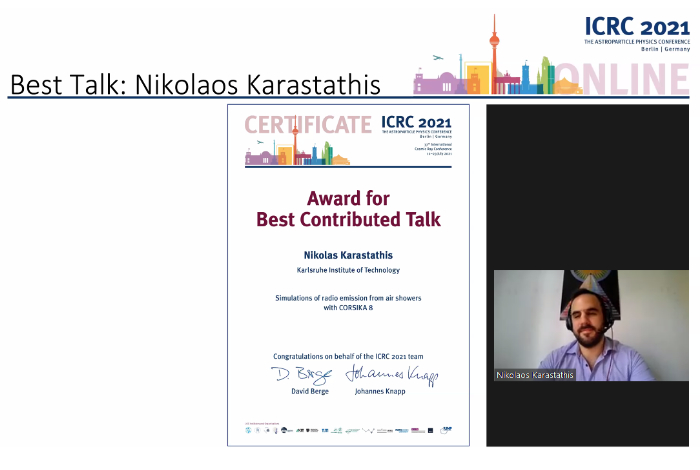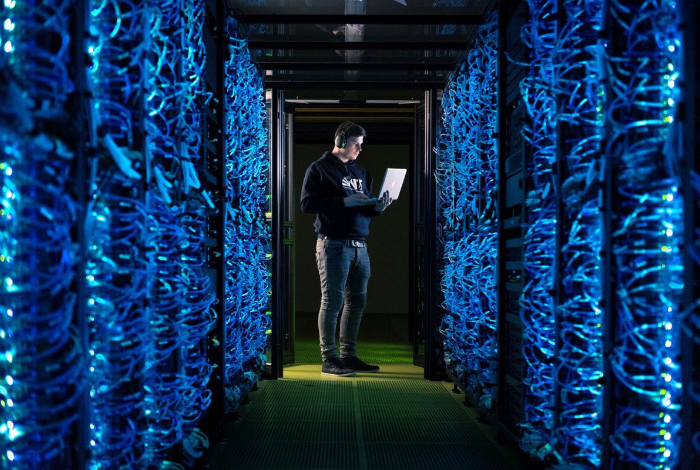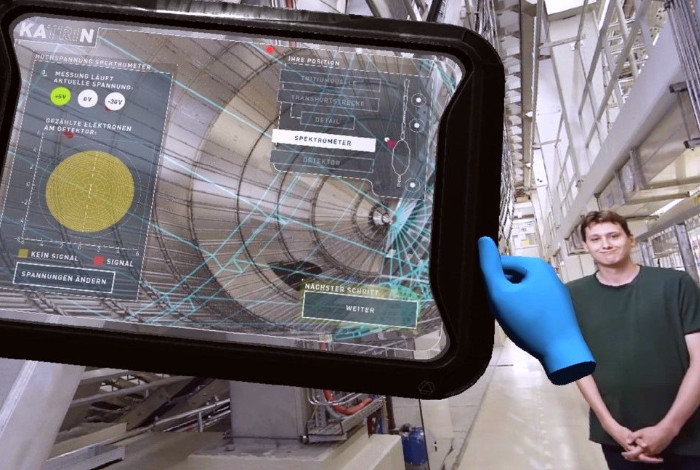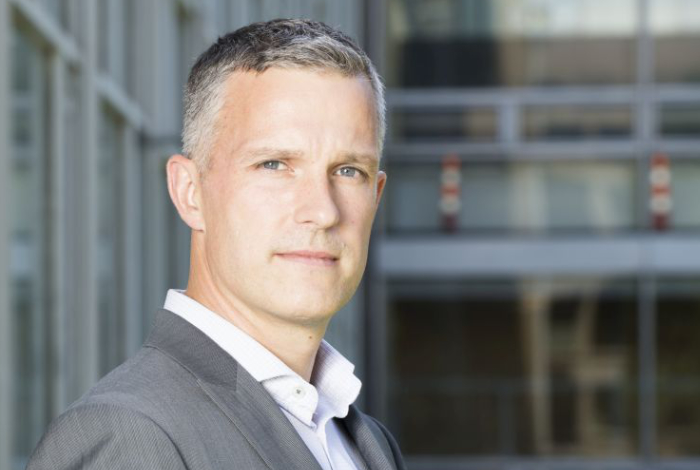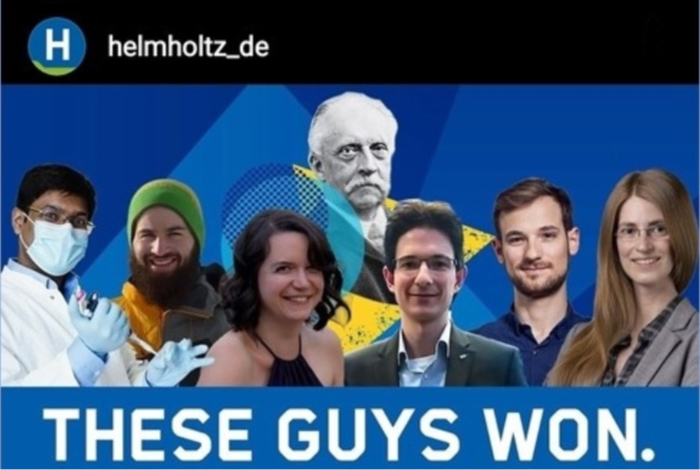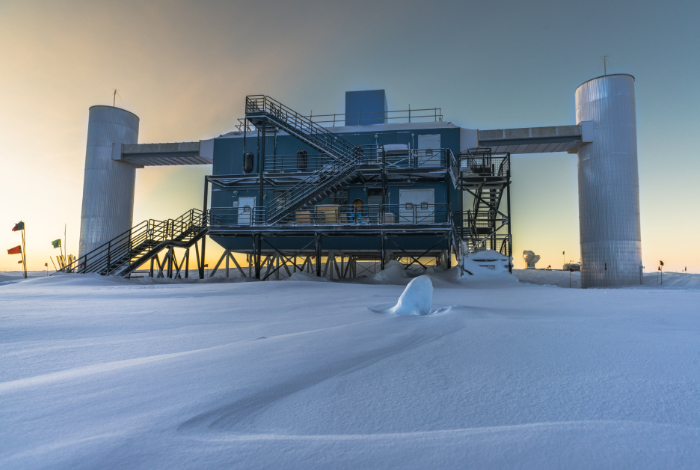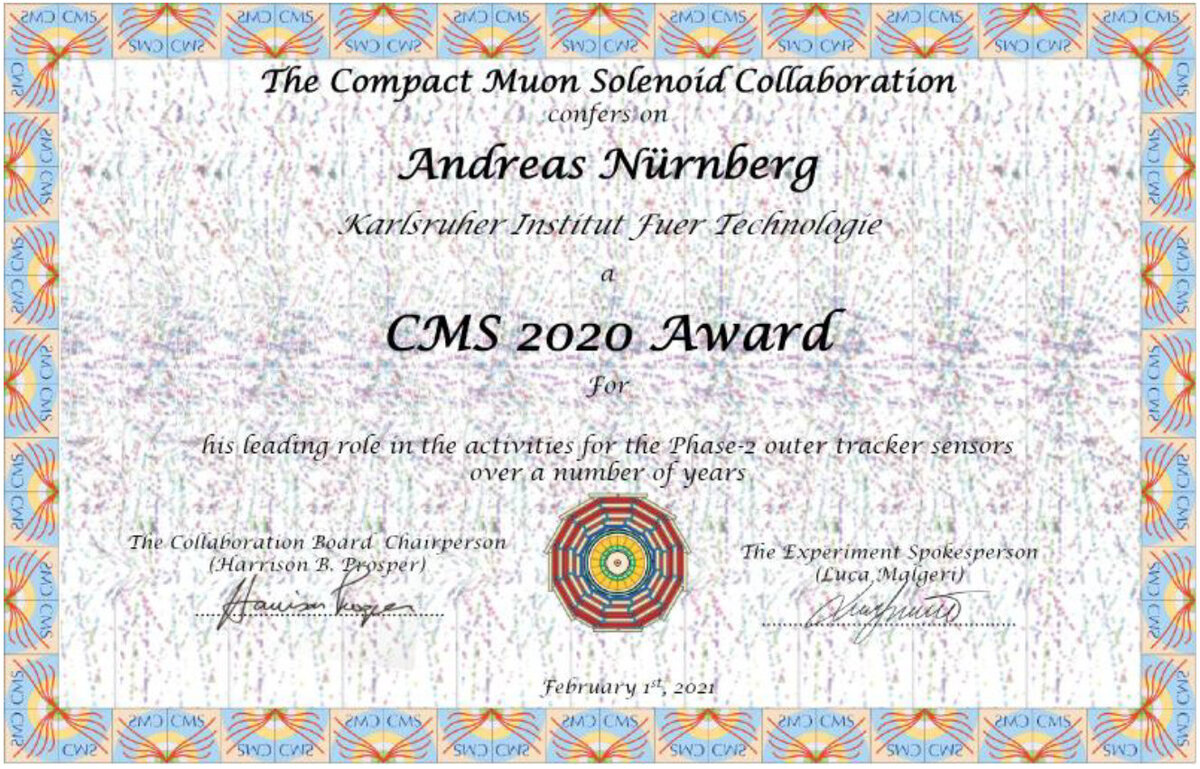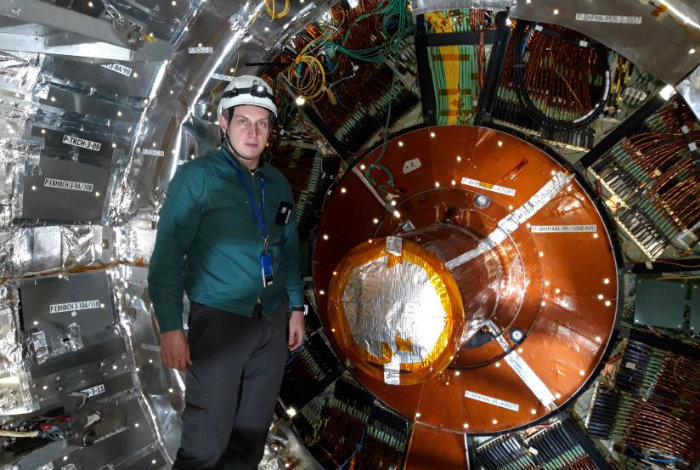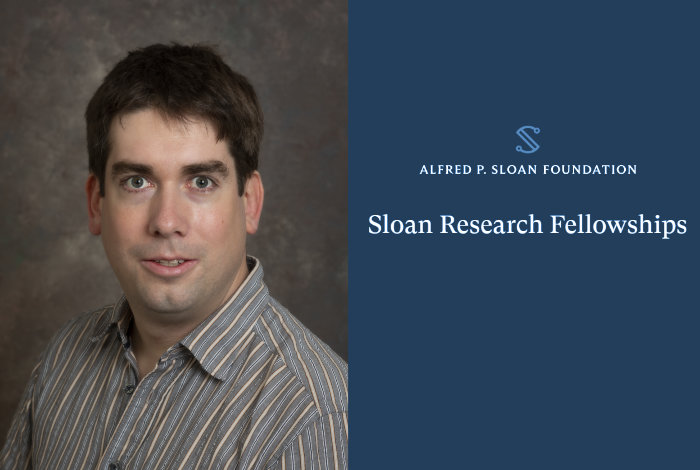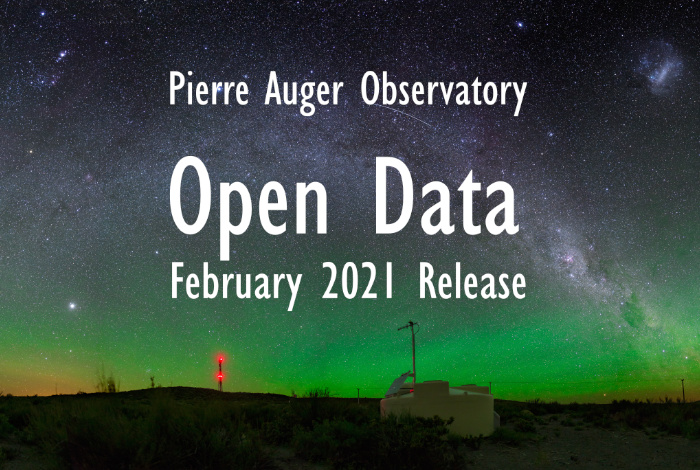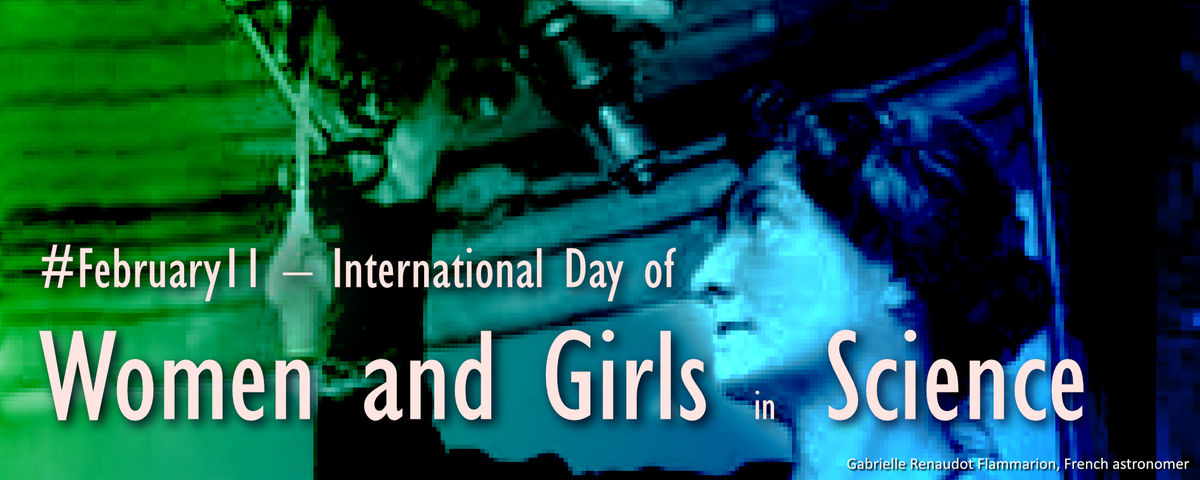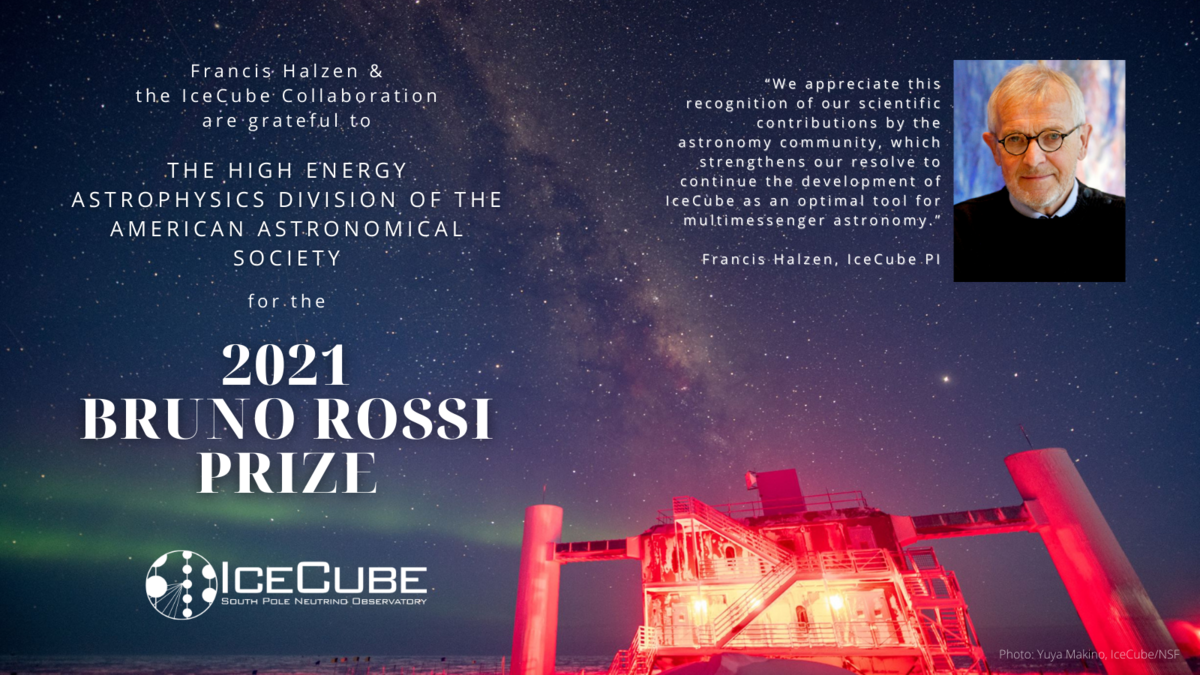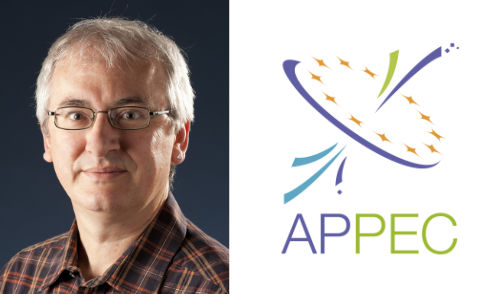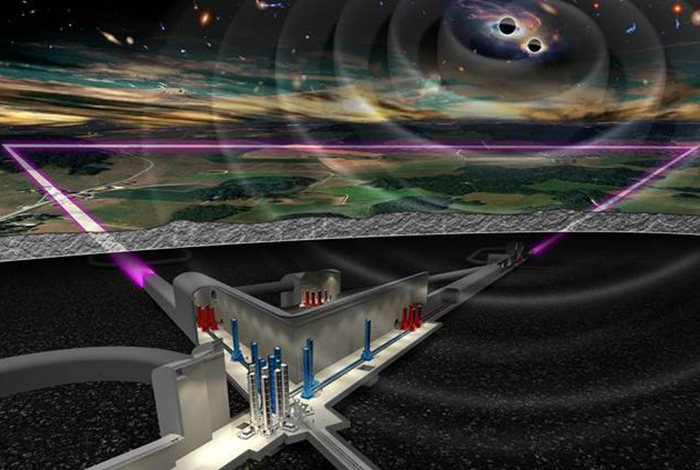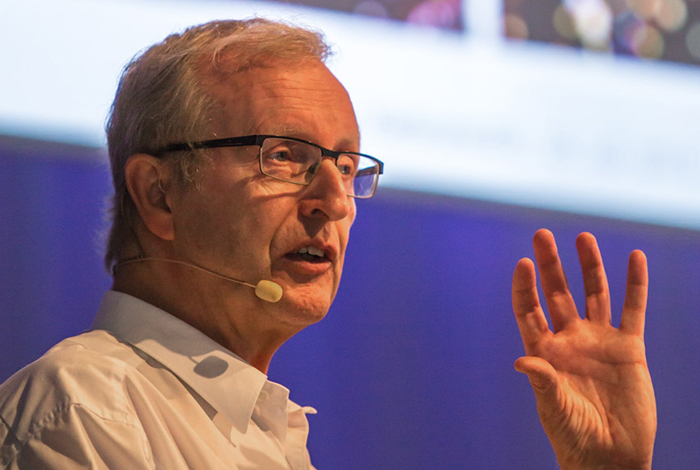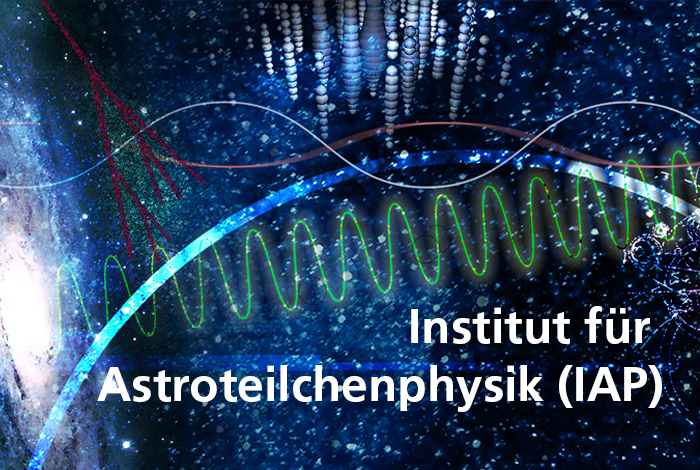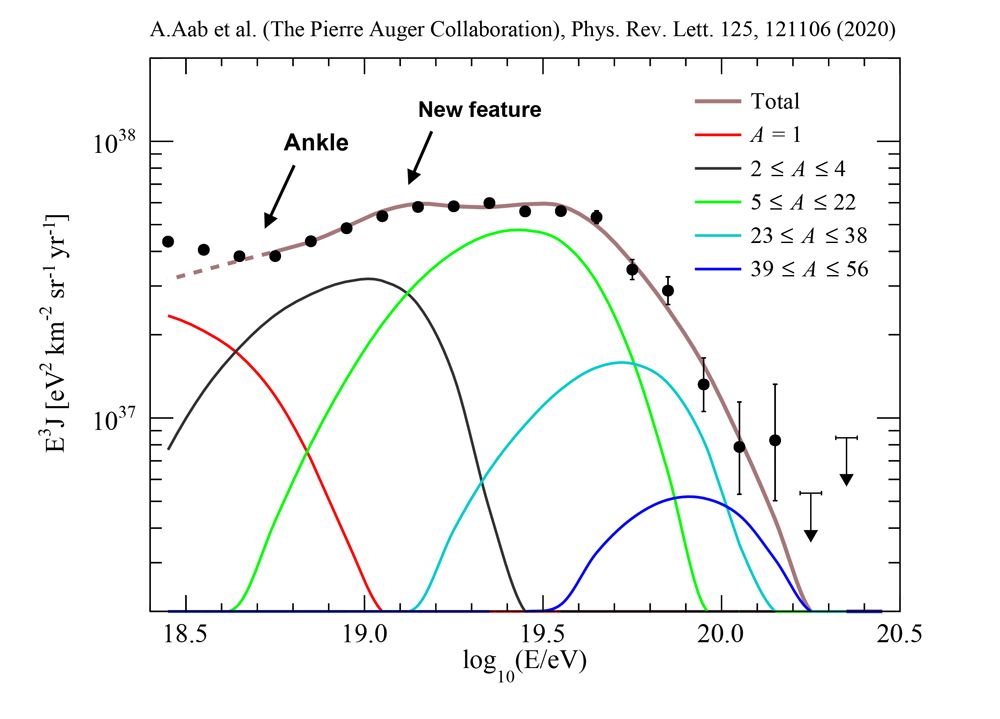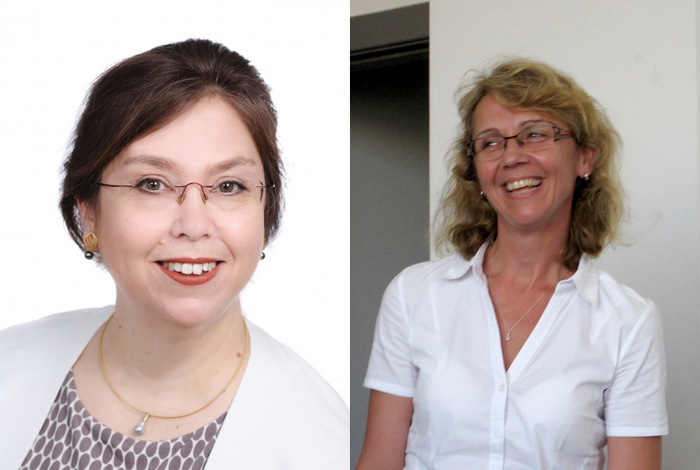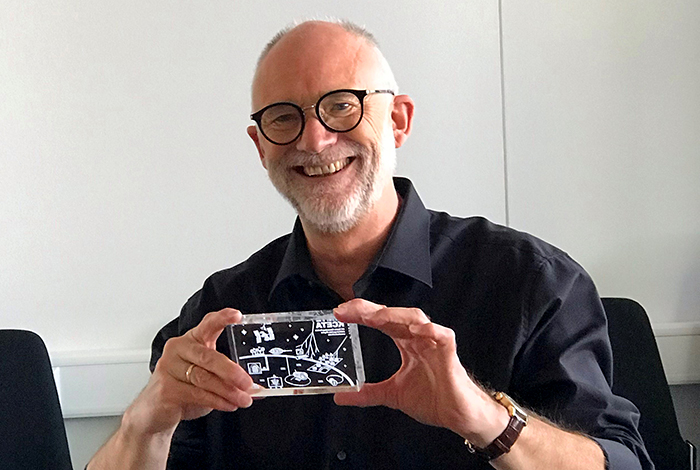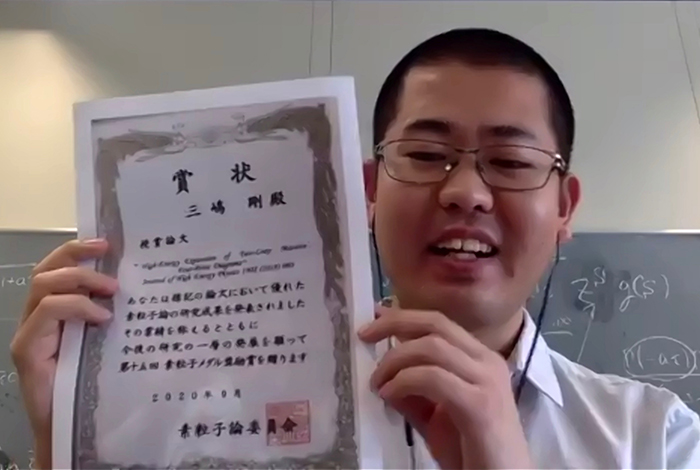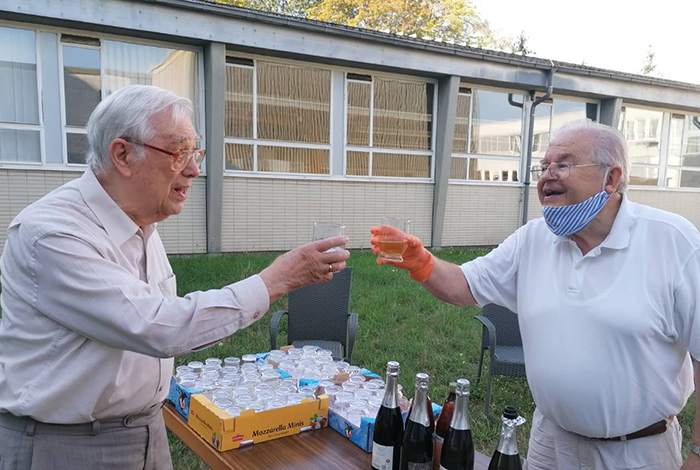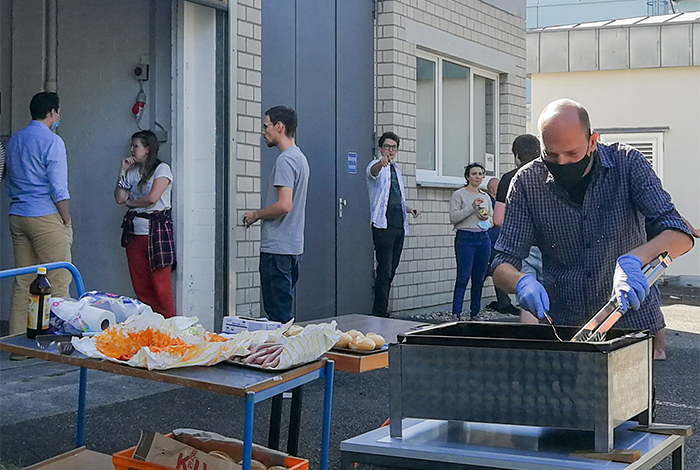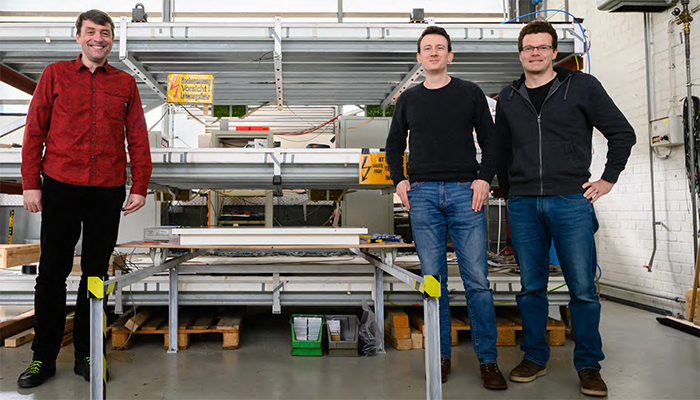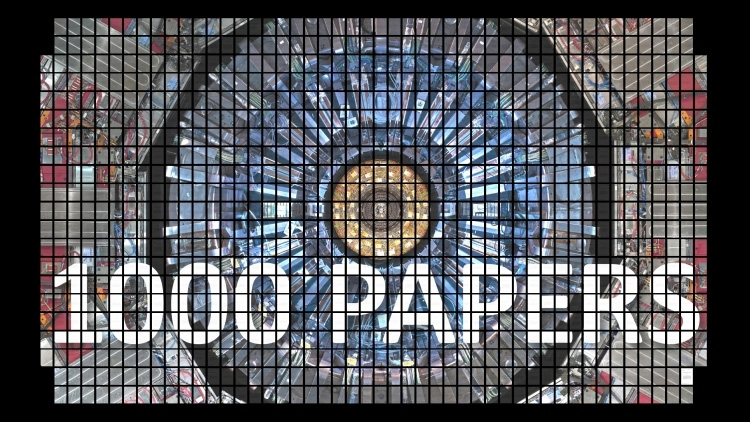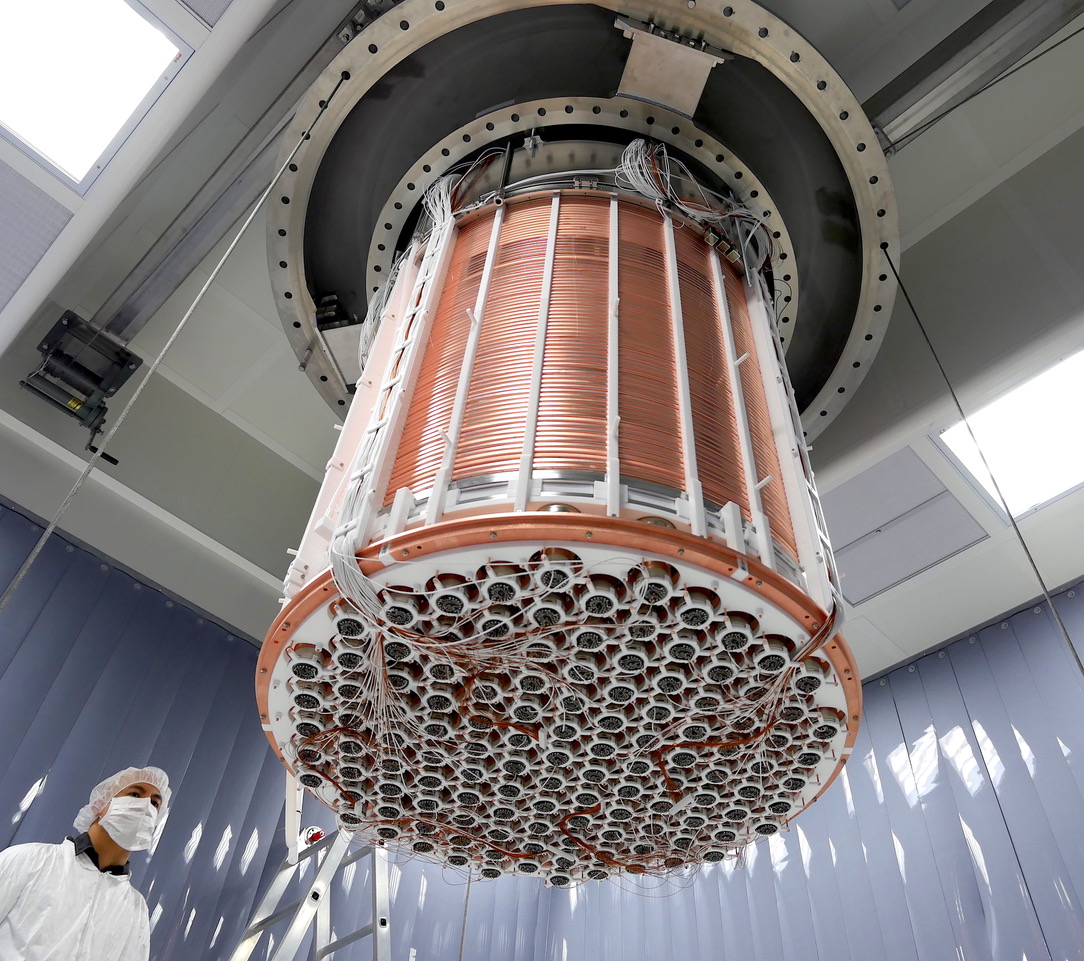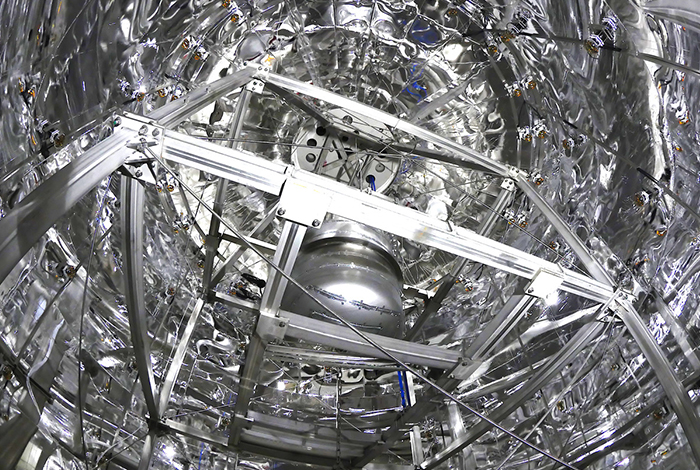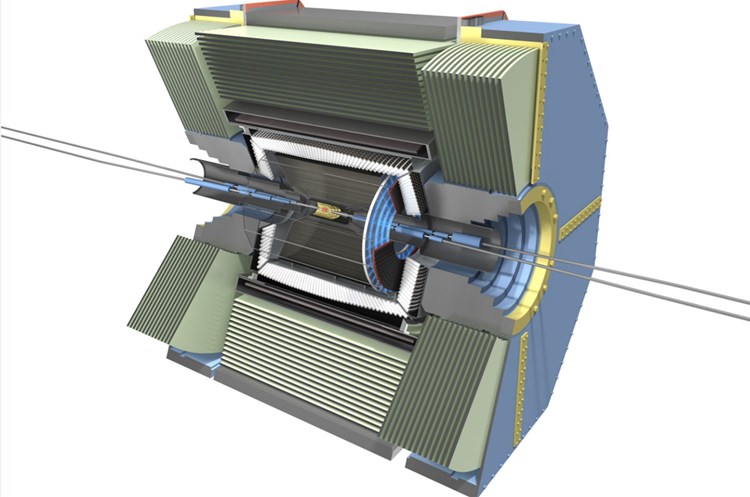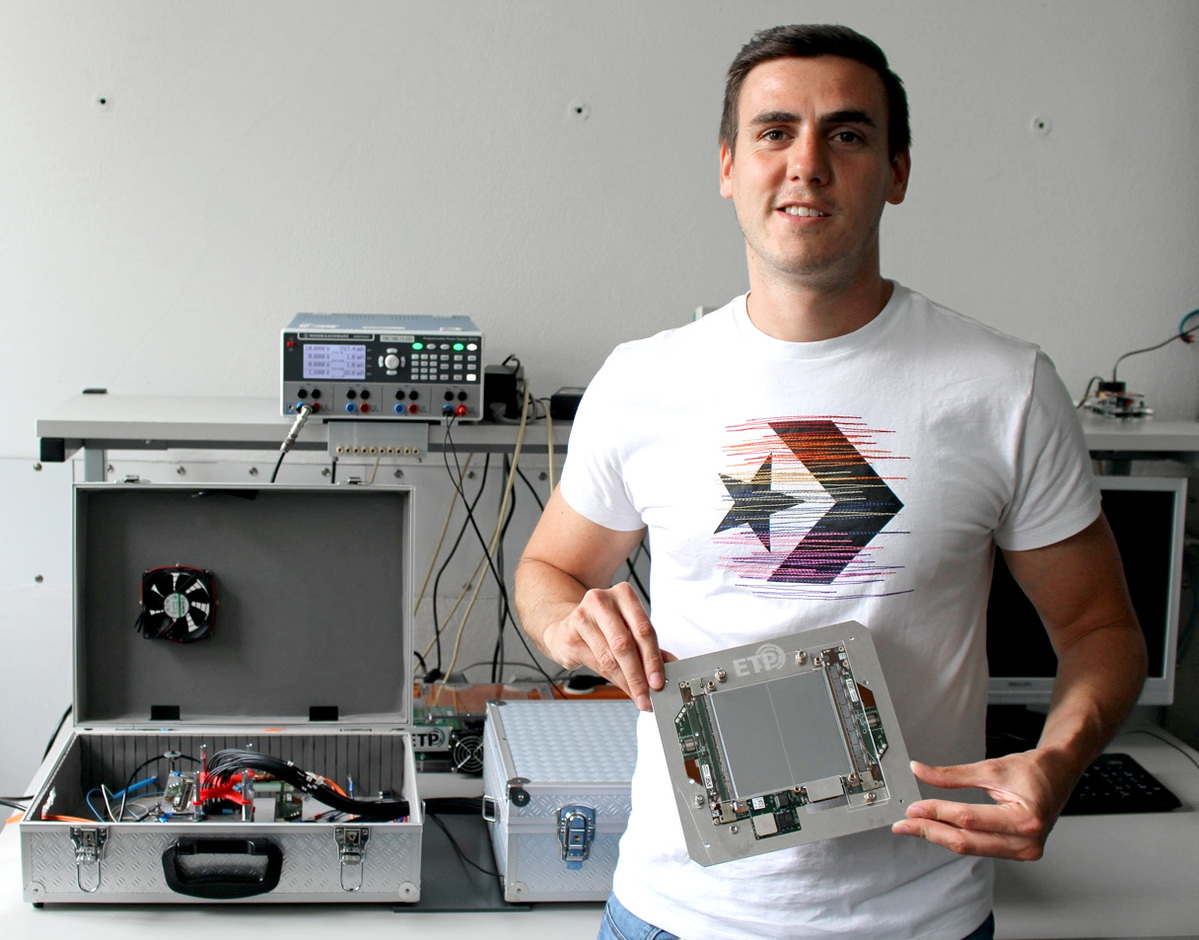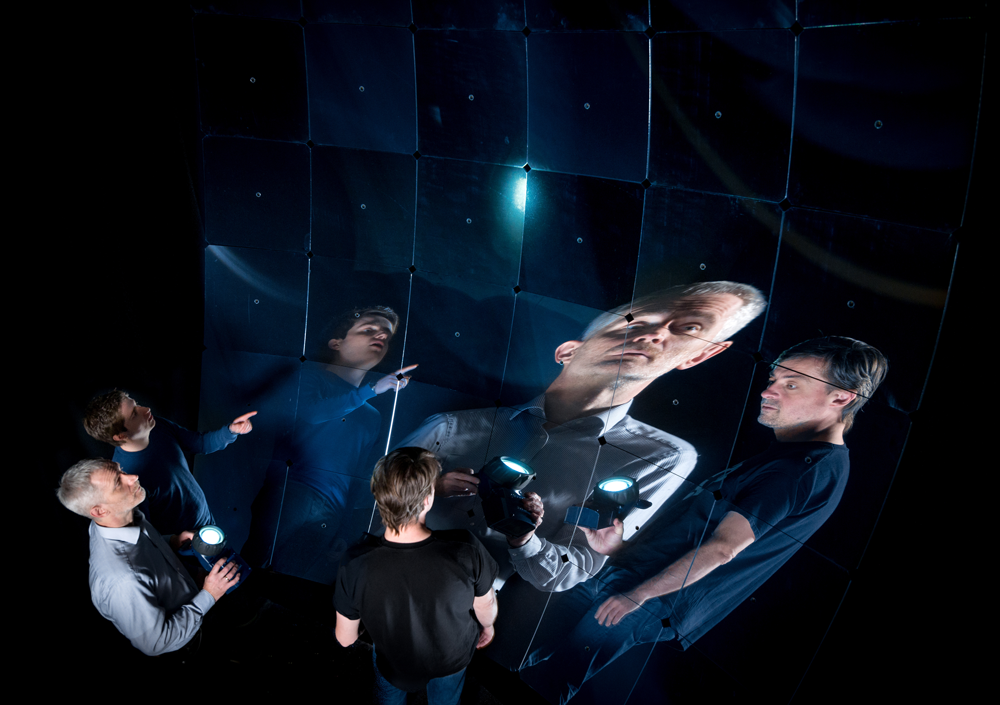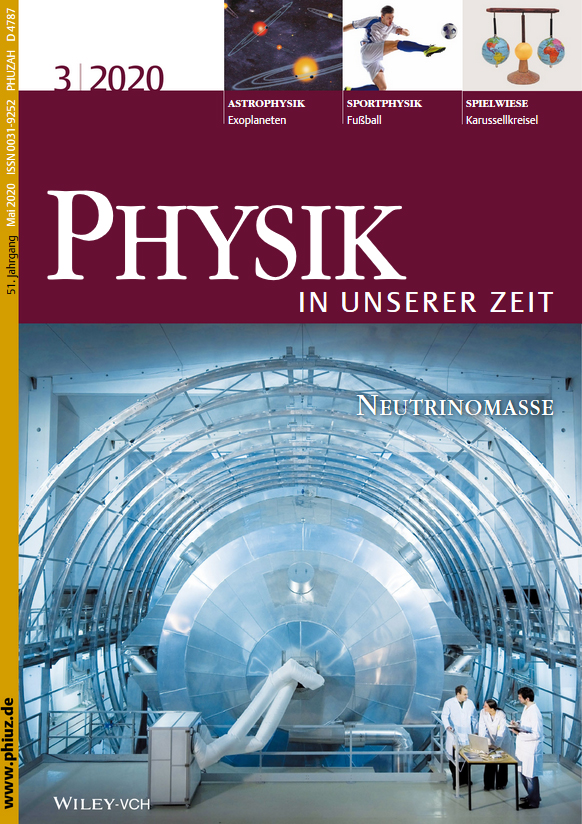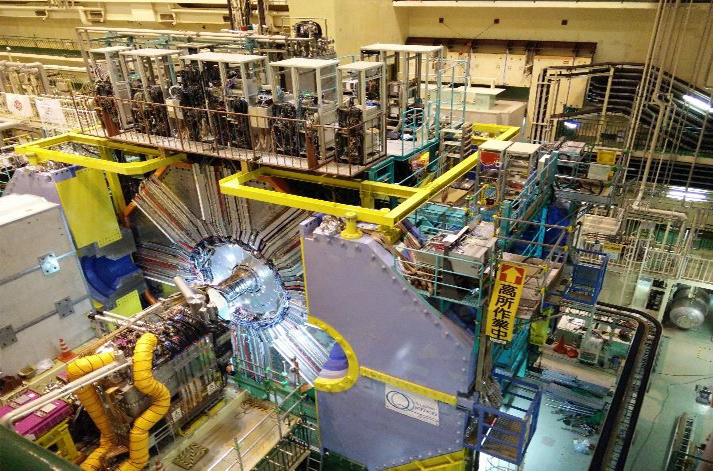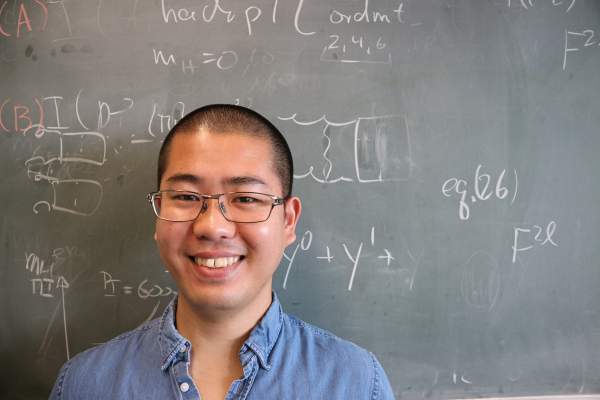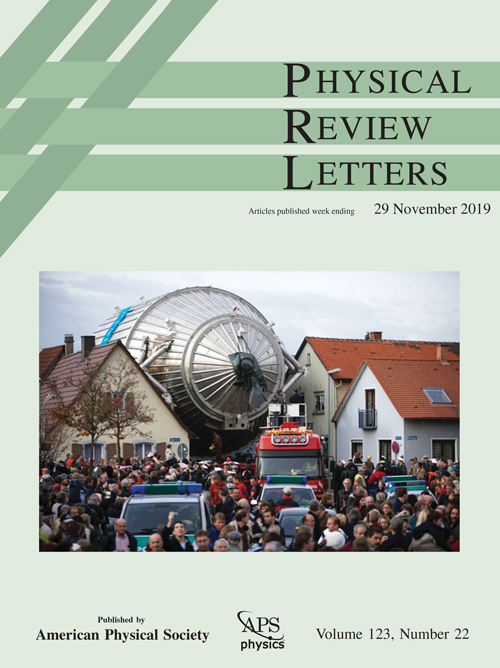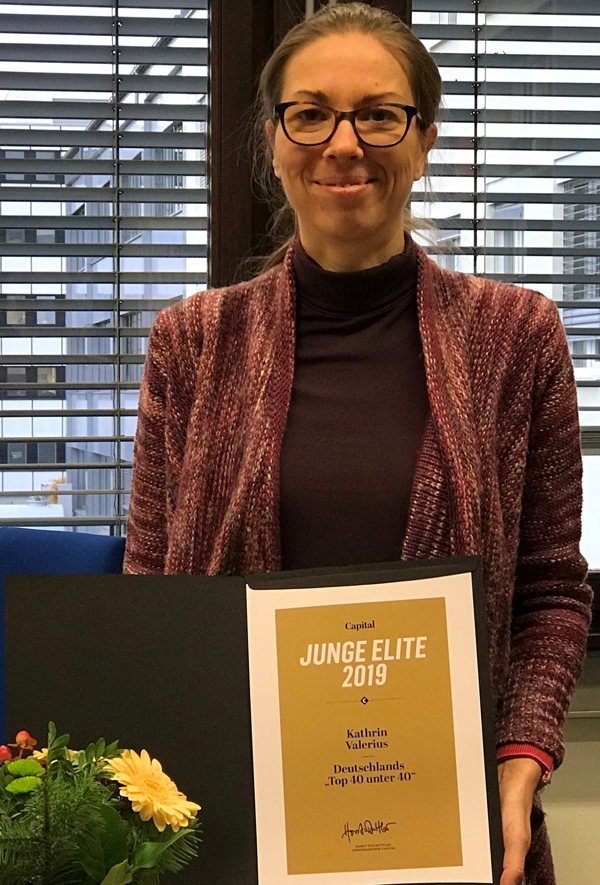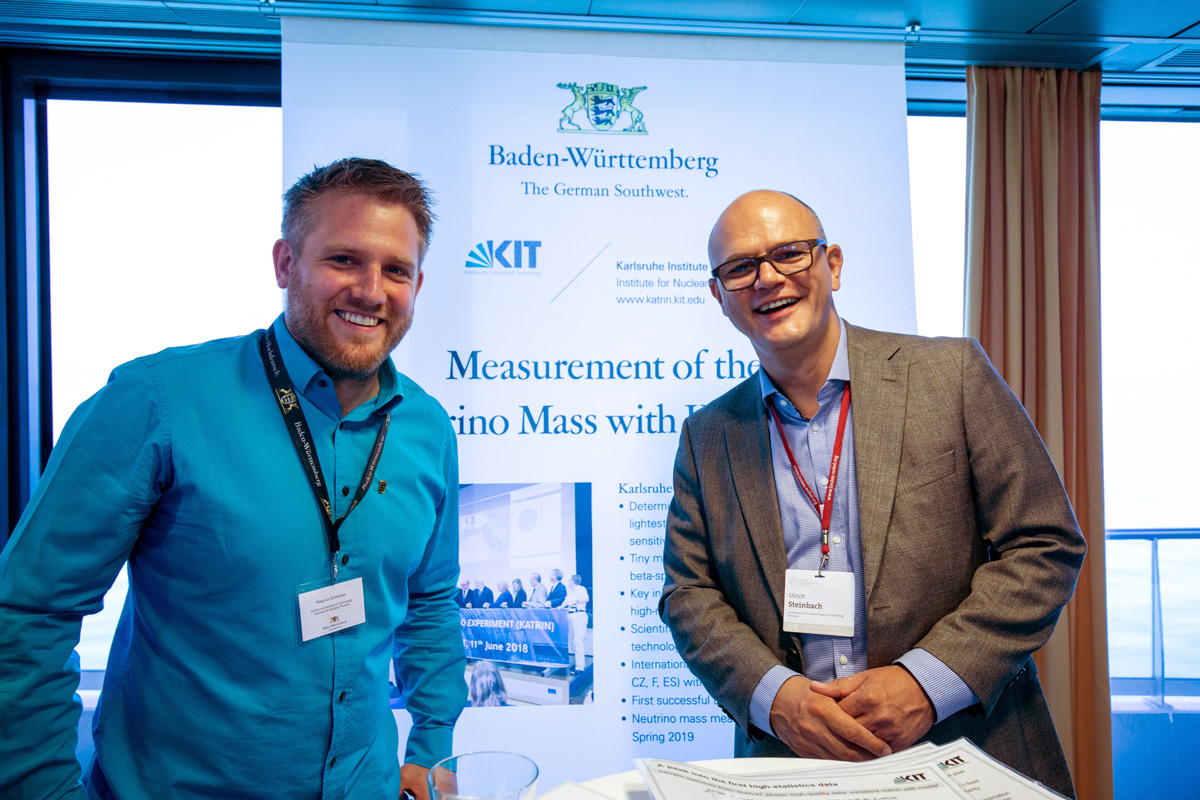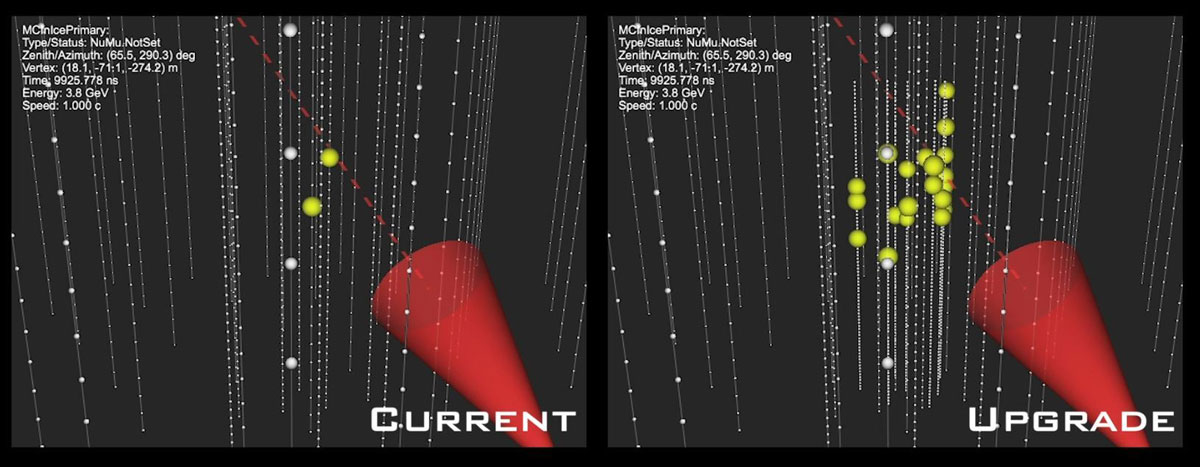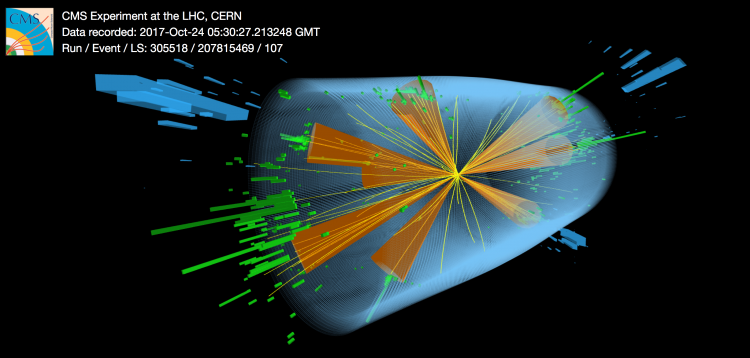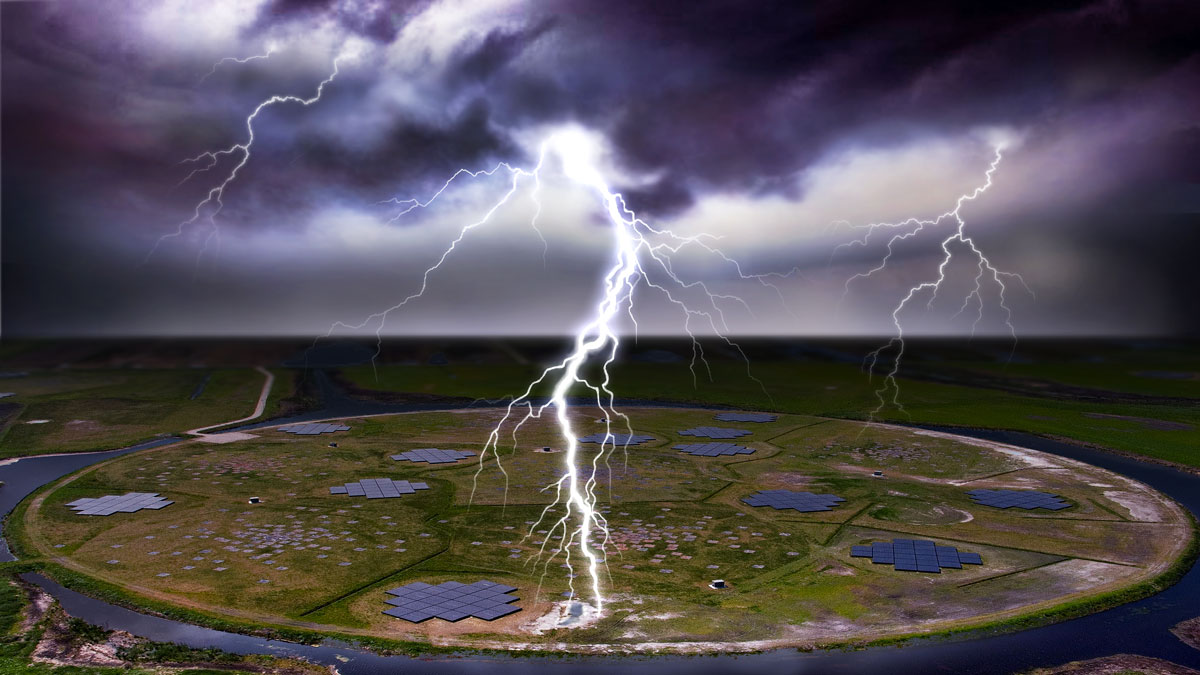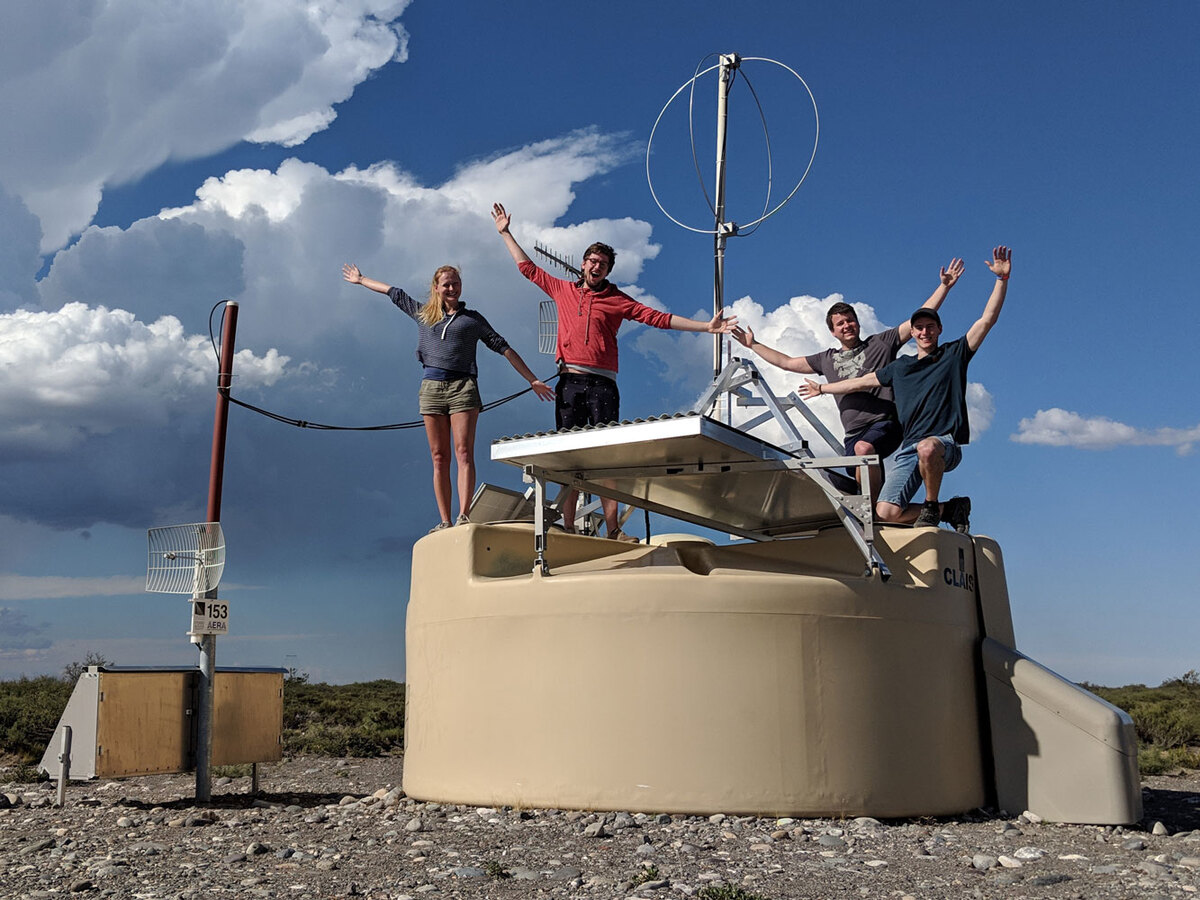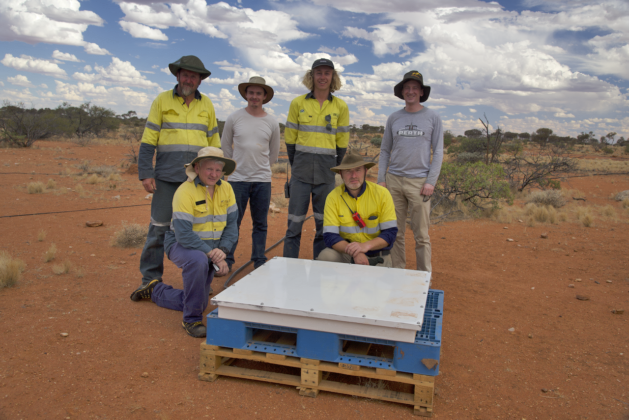The previous spokesperson of the observatory was Prof. Ralph Engel, director of the IAP, who did not stand for re-election.
Change of scientific spokespersons in KCETA
At its meeting on November 18, 2025, the KCETA steering committee elected Prof. Dr. Kathrin Valerius as scientific spokesperson and Prof. Dr. Felix Kahlhöfer as her co-spokesperson. Prof. Dr. Valerius thus succeeds Prof. Dr. Anke-Susanne Müller and Prof. Dr. Kahlhöfer succeeds Prof. Dr. Milada Margarete Mühlleitner. The change of spokespersons took place on December 1, 2025.
KCETA would like to thank the previous Scientific Spokespersons for their strong commitment during their term of office and wishes both new Spokespersons every success for their work.
Digitalization in basic research in the natural sciences
Starting on November 1, 2025, scientists from the Karlsruhe Center for Elementary Particle and Astroparticle Physics (KCETA) at KIT will participate in a total of six new joint projects on digitization in basic scientific research, bringing together experts from the fields of physics, computer science, and engineering. With the ErUM-Data funding line, the Federal Ministry of Research, Technology and Space (BMFTR) is creating the framework to fully exploit the potential of data and digitization in the exploration of the universe and matter at large research infrastructures. The focus is on the interdisciplinary development and transfer of digital tools and skills.
Two of the six joint projects are coordinated by the Institute of Experimental Particle Physics (ETP) at KIT. The participating KCETA institutes, including the ETP, the Institute for Information Processing Technology (ITIV), the Institute for Astroparticle Physics (IAP), the Institute for Accelerator Physics and Technology (IBPT), and the Institute for Process Data Processing and Electronics (IPE), will receive a total of €3.1 million in funding for their subprojects. In addition to the funded partner institutions, other associated partners often participate in the joint projects. These institutions contribute scientific expertise, data, or infrastructure to the collaboration, but do not receive their own funding. Their participation expands the scientific scope of the projects or strengthens the transfer of knowledge between basic research and applied technology development
Celebratory Colloquium on Marc Weber's 60th Birthday
11.7.2025
A celebratory colloquium was held on 11.7.2025 to mark the 60th birthday of Prof. Marc Weber, Head of Department V (Physics and Mathematics). In addition to greetings from Vice President Prof. Oliver Kraft, Prof. Guido Drexlin, Dean of Physics, and IPE Institute Director Prof. Frank Simon, there was an impressive keynote speech by Prof. Christian Weinheimer.
KCETA research projects Einstein Telescope and IceCube-Gen2 successful
8.7.2025
The "Prioritization procedure for extensive research infrastructures" of the Federal Ministry of Research, Technology and Space (BMFTR) ended on 8.7.2025 with the publication of the selected research projects. Federal Research Minister Dorothee Bär announced that both the Einstein Telescope (ET) and IceCube-Gen2 had been classified as research infrastructures of national importance. The planned gravitational wave detector ET and the neutrino telescope IceCube-Gen2 at the South Pole were thus attested high scientific excellence, innovation and transfer potential as well as international competitiveness.
The preparatory phase for the Einstein Telescope (ET) emerged as one of the most promising projects from the national prioritization process for extensive research structures. It is one of the nine selected projects with correspondingly high international relevance, which Federal Research Minister Dorothee Bär presented together with the Science Council and representatives of the evaluation committees.
In addition to ET, KIT was also successful with IceCube-Gen2, the next generation of the IceCube neutrino telescope, which has been searching for cosmic neutrinos in the eternal ice of the South Pole since 2010. This further development will be able to detect around ten times more cosmic neutrinos per year than its predecessor. Among other things, IceCube-Gen2 will answer questions about the sources of cosmic neutrinos and the propagation of cosmic radiation with extreme energies in the universe.
Federal Research Minister Bär commented: "With bold investments in research and innovation, we are creating the basis for ensuring that we remain internationally competitive in the future. Research infrastructures play a key role here. By deciding on a research infrastructure, we are making far-reaching strategic and financial decisions that will have an impact on Germany's innovative strength. In doing so, we are making an important contribution to the prosperity of tomorrow and also strengthening the technological and digital sovereignty of Germany and Europe. The selected infrastructures meet the highest standards of scientific excellence and planning maturity. I would like to thank everyone involved for their important work in this process!"
Otto Haxel Award for KSETA Fellow Lisa Biermann
On July 7, 2025, the award ceremony of the well endowed Otto Haxel Dissertation Prize, co-awarded by the DPG, took place for the doctoral class of 2024.
Dr. Lisa Biermann (PSI Villigen, Switzerland) was awarded the shared 3rd place of the Otto Haxel Prize, endowed with 2000 euros, for her dissertation "First-Order Electroweak Phase Transitions Beyond the Standard Model and Gravitational Waves", which was written at KIT.
Lisa Biermann was a Fellow of the KSETA Graduate School and was supervised by KCETA-PI Prof. Margarete Mühlleitner.
The Otto Haxel Prizes were donated by Prof. Dr. Hans Joachim Langmann in memory of his doctoral supervisor. The nuclear physicist Prof. Dr. Otto Haxel (1909-1998) was Scientific Director of the Karlsruhe Nuclear Research Center from 1970 to 1975. The Otto Haxel Award for Physics has been presented since 2017 in cooperation with the German Physical Society (DPG) for the three best dissertations in physics at the Universities of Göttingen and Heidelberg and at KIT, Otto Haxel's three places of work.
Technology transfer prize for tritium analysis
July 7, 2025
Congratulations to this year's winners of the NEULAND Innovation Competition 2025 for employees at KIT. The winning teams in the categories Idea Prize and Transfer Prize were announced at an award ceremony as part of the NEULAND Knowledge Week.
This year's transfer prize goes to the Micro-Raman-System team with Dr. Robin Größle, Alexander Marsteller and Florian Priester from the Institute of Astroparticle Physics (IAP) - Tritium Laboratory Karlsruhe (TLK). Their corporate partner is smolsys ltd. from Switzerland.
The annual NEULAND innovation competition gives scientists at KIT the opportunity to present their promising research projects to an expert jury from industry. The jury evaluates the submissions in terms of their innovation potential and selects the winning teams. Prizes are awarded in two categories: the Idea Prize and the Technology Transfer Prize. Following the award, the winning projects will be actively supported by KIT's innovation management on their way to marketable application.
What is the Micro-Raman system? An explanation can be found here in the video:
Micro-Raman system - NEULAND Innovation Competition 2025
VACOM Sustainability Award for Johanna Wydra
June 2025
Congratulations to KSETA alumna Dr. Johanna Wydra from the Tritium Laboratory Karlsruhe (TLK), who has been awarded 3rd place in the 2025 VACOM Sustainability Award for her outstanding dissertation work!
In January, Johanna successfully defended her doctoral thesis titled “First Measurement of the Tritium Viscosity in a Temperature Range from 100 K to 300 K.” Her work perfectly aligns with the purpose of the VACOM Sustainability Award, which honors academic achievements in vacuum technology that support circular economy principles and sustainable solutions.
Prof. Ulrich Husemann elected to the EPS Executive Committee
May 19, 2025
At the meeting of the Council of the European Physical Society (EPS) in Copenhagen on May 16 and 17, 2025, Prof. Ulrich Husemann was elected to the EPS Executive Committee for two years as a representative of the individual EPS members. Prof. Husemann is a professor of experimental particle physics at the KIT Institute of the same name (ETP).
The EPS promotes physics and fosters cooperation between physicists in Europe. It is both a federation of national societies such as the German Physical Society (DPG) and a learned society for individual members. The EPS advances scientific excellence and influences science policy in Europe. The Executive Committee establishes EPS priorities, reviews and develops budgets and pilots EPS activities.
"The standard model of the universe put to the test"
Latest measurement results on dark energy electrify astrophysics - Prof. Thomas Schwetz-Mangold in an interview in the Campus Report on 22.04.2025 (in German).
KATRIN sets new limit
April 11, 2025
The KATRIN collaboration has succeeded in determining a new upper limit of 0.45 eV/c² for the neutrino mass. “The new result is a milestone on the way to the measurement goal of KATRIN,” says Kathrin Valerius, co-spokesperson of the KATRIN collaboration and professor at the Institute for Astroparticle Physics (IAP) at KIT.
Neutrinos play a key role both in the universe and in the world of fundamental particles, as they connect cosmic and subatomic scales: As remnants of the Big Bang, neutrinos still permeate our cosmos in large numbers – they are billions of times more abundant than atoms. As “cosmic architects”, they have helped shape the development of the universe. Their small but non-vanishing rest mass goes beyond the established standard model of elementary particle physics. It has not yet been possible to measure the neutrino mass directly in the laboratory.
At Campus North of KIT the world-leading KArlsruhe TRItium Neutrino experiment (KATRIN) measures the neutrino mass using a direct and model-independent method. The KATRIN measurement is based on the work of W. Pauli and E. Fermi, who showed almost 100 years ago that precise beta decay spectroscopy can make the tiny neutrino mass visible. KATRIN analyzes the decay of the hydrogen isotope tritium into ³He in order to determine the neutrino mass from the energy distribution of the beta electrons. To do this, KATRIN needs a powerful tritium source operated at the Tritium Laboratory Karlsruhe (TLK). Measurement operations have been running since 2019 and will continue until the end of 2025.
From 2026, KATRIN will be searching for sterile neutrinos in the keV mass range. Such sterile neutrinos are potential candidates for the mysterious dark matter that has been detected in numerous astrophysical and cosmological observations, but whose exact nature is still unknown.
The groundbreaking result was published in Science:
Science 388 (issue 6743), 180–185 (2025)
CMS Experiment wins Breakthrough Prize
April 6, 2025
This year’s Breakthrough Prize in Fundamental Physics, founded by Yuri Milner to recognize profound contributions to human knowledge, was awarded to the LHC collaborations, CMS, ATLAS, LHCb and ALICE for their groundbreaking contributions to our understanding of the Higgs boson and the fundamental structure of matter. The CMS experiment was recognized for its detailed measurements confirming the symmetry-breaking mechanism that gives particles mass, its exploration of rare processes and the matter-antimatter asymmetry.
The Institute of Experimental Particle Physics (ETP) at KIT, as the largest university group in CMS, has played a leading role in many of these achievements, from detector development and operation to computing, data analysis and physics interpretation.
The $1 million share of the prize allocated to CMS was generously donated to the CERN & Society Foundation to support doctoral students from member institutes, enabling them to conduct research at CERN. The prize was accepted on behalf of the collaboration by Patricia McBride (Fermilab), CMS spokesperson from 2022 to 2024.
KCETA welcomes Jan Kieseler as new professor in experimental particle physics
April 1, 2025
Prof. Dr. Jan Kieseler completed his PhD at the University of Hamburg and DESY before spending seven years at CERN, where he held positions as research fellow and staff scientist within the CMS experiment.
He coordinated the physics studies for the HL-LHC upgrade and led the top-quark physics group, working on topics ranging from precision cross section measurements to searches for new physics. He was also instrumental in introducing artificial intelligence methods for jet identification and low-level particle reconstruction, particularly in high-granularity detectors.
In parallel, he co-founded collaborative initiatives focused on detector optimisation using advanced computational techniques.
At KIT, his new team at the Institute of Experimental Particle Physics (ETP) focuses on combining machine learning and modern computing infrastructures to improve reconstruction, enable intelligent detector design, and deepen our understanding of the top-Higgs sector.
Helmholtz Investigator Group for Yanina Biondi
March 2025
Dr Yanina Biondi, postdoctoral researcher at the Institute for Astroparticle Physics (IAP), has been awarded a prestigious Helmholtz Investigator Group Grant. This grant enables internationally outstanding young researchers to establish their own research group at a research centre of the Helmholtz Association.
With the 1.5 million Euro grant Yanina Biondi will fund a PhD student, a postdoctoral researcher and laboratory instrumentation for 5 years. The group will work on the technological challenges of instrumenting high-voltage systems in liquid xenon time projection chambers in preparation for the construction of the XENON-LZ-DARWIN (XLZD) Observatory.
KSETA team realizes scalable readout system for the Dark Matter experiment BULLKID-DM
December 2024
The Dark Matter experiment BULLKID-DM searches for WIMP-like dark matter particles with GeV / sub-GeV mass and a cross section down to 10−42 cm². The detector consists of a highly segmented array of thousands of silicon targets instrumented with Kinetic Inductance Detectors (KIDs), with a total target mass exceeding 0.5 kg and an energy threshold below 200 eV.
As part of the BULLKID-DM collaboration, the Institute for Data Processing and Electronics (IPE) will contribute with the development of the room-temperature readout electronics of the experiment. The electronics are responsible for high-speed parallel data acquisition and online data rate decimation by filtering events according to a complex trigger.
The first prototype readout system consisting of an AMD Xilinx Radio Frequency System-on-Chip (RFSoC) evaluation board and a custom-designed analog front-end board for signal conditioning has been financed by KCETA startup funds. The KSETA summer intern Annirudh K. P., a student from IIT Bombay, supervised by Timo Muscheid and Dr. Luis Ardila in the quantum computing instrumentation group at IPE, contributed during his time in Karlsruhe to the design of this front-end board.
This prototype readout system has now been commissioned at Sapienza University in Rome. Preliminary measurements with a prototype version of the BULLKID detector array have been successful. The KCETA funds have enabled a first permanent installation of the system at the cryogenic laboratory in Rome, which allows iterative firmware improvement and development of additional features that can immediately be tested an utilized by the researchers. KSETA doctoral researchers verified their readout concept for superconducting sensors and were able to contribute to this important milestone of the BULLKID-DM experiment.
The final version of the experiment will be installed at the underground facility of the Gran Sasso Laboratory in Italy.
Johannes Blümer honored for outstanding commitment to KIT
On November 28, 2024, the President of KIT, Jan S. Hesthaven, awarded the "Merit Badge of KIT in recognition of a very special service to KIT" to Prof. Dr. Dr. h.c. Johannes Blümer, Distinguished Fellow of the KIT.
Johannes Blümer is closely associated with KCETA as (co-)initiator and former spokesperson of KCETA and KSETA as well as former spokesperson of the Helmholtz program 'Matter and the Universe'. He is also former head of Division V, former institute director of the IAP and former co-spokesperson of the Pierre Auger Observatory.
KIT honors outstanding and long-standing commitment of personalities who work in research, teaching and administration or who promote and generously support the KIT in various ways out of friendship.
KSETA Fellow Edyvania Emily Martins wins Poster Award
November 18, 2024
The UHECR 2024 conference was held in November at the site of the Pierre Auger Observatory in Malargüe, Argentina. At the conference two poster prizes were awarded to young researchers and one of them went to KSETA fellow Edyvania Emily Martins (KIT and Pierre Auger Collaboration) – congratulations! The title of her poster was: "Prospects of a composition-enhanced search for large-scale anisotropy with the Pierre Auger Observatory".
The awards were presented by Prof. Ralph Engel, Chair of the International Advisory Committee of the Symposium, former spokesperson of the Pierre Auger Collaboration and Head of KIT institute IAP.
Extension of the international agreement for the Pierre Auger Observatory
November 16, 2024
The Pierre Auger Observatory is the world-wide largest cosmic ray detector covering an area of 3000 km². It is operated by a collaboration of more than 400 scientists from 17 countries. The aim of the observatory is the study of the highest energy particles of the Universe – ultra-high energy cosmic rays. About 15 full-array-size-equivalent years of exposure have been accumulated up to the end of 2021 with the Auger Observatory in the old configuration, referred to as Phase I.
Data from Phase I of the Auger Observatory have revolutionized our understanding of high energy phenomena linked to the most violent processes in the Universe. Scientific breakthroughs have been achieved in several fields. The new perspectives opened by these results called for an upgrade of the observatory, with the main aim of collecting new information about the primary mass of the highest energy cosmic rays on a shower-by-shower basis. The full-efficiency data taking with the upgraded array will start in 2025 and will add data for 10 more years. The extension of the International Agreement will provide the administrative foundation to continue the operation of hte Pierre Auger Observatory in the upcoming Phase II, operating the upgraded detector.
On November 16, 2024, the representatives of the funding organizations signed the extension of the agreement in a festive ceremony, combined with a visit to the Pierre Auger Observatory the next day with a tour of the fluorescence detectors and the HEAT telescopes at the Coihueco site as well as the infill array with the upgraded AugerPrime surface detectors.
Prof. Thomas Hirth, Vice President of Transfer and International Affairs at KIT and a strong supporter of the observatory, also took the opportunity to personally attend the celebrations in Argentina in order to promote the mission of the Pierre Auger Observatory. He has been associated with Argentina for many years - above all through the double doctoral program between KIT and the Universidad Nacional San Martin in Buenos Aires and the resulting strategic cooperation.
Margarete Mühlleitner elected as representative for the KET district Theory South
October 28, 2024
During this year's election of the Komitee für Elementarteilchenphysik (committee for elementary particle physics (KET)), the representation of particle physicists in Germany, Margarete Mühlleitner has been elected as the representative for the district “Theory South”. Her term of office will be from 2024 to 2027. Congratulations!
IMS hosts workshop “Cryoelectronic Devices (KRYO) 2024"
September 2024
The workshop “Cryoelectronic Devices” (KRYO) has been bringing together scientists and engineers from Germany for more than 40 years to discuss the latest developments in the fields of superconducting electronics and devices, cryogenic detectors, cryogenics, and related applications. This year’s workshop in Bad Herrenalb was hosted by the Institute for Micro- and Nanoelectronic Systems (IMS). Initially, 56 participants received four introductory lectures from renowned representatives of the field, followed by three days of intensive discussions on 16 presentations and 16 poster contributions from the participants. Social hours in the evenings rounded off the workshop. All participants agreed that the workshop was a great success and look forward to coming together again next year.
Six doctoral students from KIT express their heartfelt thanks to the KIT Center KCETA for financial support, which enabled them to participate in the workshop as young scientists.
Portrait: Kathrin Valerius sucht nach den Bausteinen des Universums
August 2024
Wer sind die Personen hinter der modernen Forschung? Was treibt sie an? Und warum sollten wir ihnen zuhören?
Der KIT-Masterstudiengang Wissenschaft – Medien – Kommunikation stellte in einem Multimedia-Dossier Persönlichkeiten aus dem Karlsruher Wissenschafts-Kosmos vor.
Maria Röhreich porträtierte Kathrin Valerius, Professorin am Institut für Astroteilchenphysik (IAP)
DAAD-RISE interns at KIT
August 2024
Three DAAD-RISE interns spent the summer of 2024 at the Institute of Astroparticle Physics. All three are conducting research in the field of radio detection and were each supervised by a KSETA doctoral student.
Chloe Jacob (Queen's University Belfast) was supervised by Simon Strähnz. Chloe's project aims to characterise the statistical properties of the measurement noise of the radio detector of the Pierre Auger observatory.
Liam Becker (University of Washington, Seattle), supervised by Lukas Gülzow, investigates the radio emission of cosmic ray air showers in smaller slices of the total frequency band used by the GRAND observatory, 50-200 MHz.
Heer Mann (University College London), supervised by Jelena Köhler, supports the development of the event-level trigger for the GRAND experiment.
KCETA funding for Trigger and DAQ research
July 2024
The DARWIN project aims to construct a grand astrophysical observatory using a multi-ton target of liquid xenon for the direct detection of dark matter in a dual-phase time projection chamber (TPC). However the size of DARWIN presents many challenges that require extensive R&D, especially when it comes to data acquisition (DAQ) and triggering.
For the purpose of trigger and DAQ R&D, the group of Prof. Dr. Belina von Krosigk has acquired a CAEN DT2745 module that is being used at KIT. This 64 channel, 16-bit, 125 MS/s digitizer provides high resolution and fast digitization, and also contains an Open field-programmable gate array (Open FPGA) that can be programmed using the Sci-Compiler software developed by CAEN.
With the support of KCETA it was possible to purchase the necessary licenses and training equipment to programme the Open FPGA on the CAEN DT2745 module. The support from KCETA will additionally open many opportunities for students and young researchers with varying FPGA programming experience to work on trigger and DAQ R&D for bHiVE and DARWIN.
Cutting-edge GPU server funded by KCETA installed
July 2024
A new GPU server funded by KCETA has been installed successfully by the system administrators of the Institute for Theoretical Physics (ITP). It will help members of ITP, TTP and IAP to perform cutting-edge calculations, partly based on machine learning, in a highly parallelised way.
The calculations cover a wide range of applications, such as precision calculations for the LHC or simulations within dark matter models.
Mark Weyrauch wins poster prize in Erice
July 2024
The International School of Cosmic Ray Astrophysics (ISCRA) holds biennial courses for graduate students and young researchers that stress the inter-relationships between sub-disciplines in Astrophysics, Particle Physics and Cosmology and focus upon recent results from different specialty areas. Mark Weyrauch from the Institute of Astroparticle Physics (IAP) received the poster prize at this year's school, which took place from July 20 to 28, 2024 in Erice, Sicily. Congratulations!
First measurement of a nuclear recoil signal from solar neutrinos with XENONnT
On July 10, 2024 at the IDM conference in L’Aquila (IT), the XENONnT collaboration announced the first measurement of low-energy nuclear recoils from neutrinos produced in nuclear reactions inside the sun, particularly those involving the element boron. Alongside hypothetical dark matter particles, neutrinos from the sun have long been predicted to be observable in detectors built to search for dark matter nuclear recoil signals when these detectors reach sufficient “exposure” and “sensitivity”. Exposure means how long we waited and how much material we have used to observe particles. Sensitivity is about how good we are at detecting the tiniest particles. Observing this feeble signal, with energies barely detectable in liquid xenon time projection chambers like XENONnT, requires excellent detector performance and sophisticated signal-to-background discrimination methods. The measurement confirms the understanding of the lowest-energy signals in XENONnT.
XENONnT is a direct dark matter search experiment located deep underground at the INFN Laboratori Nazionali del Gran Sasso (LNGS) in Italy. Representing one of the most advanced underground research facilities worldwide for particle physics and astrophysics, LNGS provides a unique environment that significantly reduces cosmic radiation. Operating the family of ever more sensitive experiments of the XENON program at LNGS has been critical for the success of the program.
Designed to be sensitive to rare interactions of potential dark matter candidates, XENONnT’s central detector is a dual-phase time projection chamber (TPC) with 5.9 tonnes of ultra-pure liquid xenon as active target. To achieve cutting-edge performance, the XENONnT experiment employs several advanced subsystems, such as cryogenic plants to maintain the liquid xenon at the necessary low temperature, an online cryogenic distillation column for the active removal of radioactive elements diluted in the xenon, and advanced slow control and data acquisition systems. A 700 tonnes water tank featuring active Cherenkov neutron and muon veto systems surrounds the XENONnT TPC to further reduce the background.
Neutrinos from the Sun can interact with the nuclei of the xenon atoms in the XENONnT target via coherent elastic neutrino-nucleus scattering (CEvNS). This Standard Model process, first predicted in 1974, has been challenging to observe due to the very low energy recoils involved and the elusive nature of neutrinos. Only in 2017, the COHERENT experiment reported the first observations of CEvNS with higher energy neutrinos from the Spallation Neutron Source in Oak Ridge, Tennessee. Now, XENONnT is the first experiment to measure CEvNS from neutrinos produced in the core of the sun, and to measure the CEvNS process with the element xenon. XENONnT thus joins the list of famous solar neutrino experiments, which typically require 10-500 times larger detector masses.
XENONnT's low-energy detection capabilities and ultra-low background environment have enabled this first measurement. The analysis used data collected over two years, from July 7, 2021, to August 8, 2023, for a total exposure of approximately 3.5 tonne-years. An excess of low-energy nuclear recoil events over the expected background was measured, compatible with a signal from solar boron-8 neutrino interactions, with a statistical significance of 2.7 sigma, meaning that there is about a 0.35% chance that the observed signal is due to background noise. The result was obtained through a blinded analysis, meaning that the signal region remained obscured from the view of the scientists until all analysis steps were fixed to avoid human bias. This marks the first measurement of CEvNS from an astrophysical neutrino source. Moreover, such a significant result opens a new chapter in the direct dark matter detection field: XENONnT started exploring the so-called neutrino fog, where neutrino interactions are becoming a background that can mimic dark matter signals. As XENONnT continues to gather more data, the collaboration is looking forward to exciting discoveries in the realm of astroparticle and nuclear physics.
For more details on the XENONnT experiment, please visit the XENON official website or contact the collaboration directly.
Contact Information:
XENON Collaboration
Website: https://xenonexperiment.org/
Email: xe-pr ∂does-not-exist.lngs infn it
Beaming award for ZAG
June 25, 2024
ZAG Zyklotron AG, located on Campus North of KIT, operates a proton cyclotron that is used to irradiate detector elements for the CMS experiment. These irradiation tests are immensely important to understand the effect of radiation damage in particle physics experiments and to build correspondingly robust detectors. In recognition of the many years of excellent cooperation with the Institute of Experimental Particle Physics to carry out countless irradiation tests, ZAG Zyklotron AG received the CMS Gold Award at CERN on June 25, 2024. Patricia McBride, Spokesperson of the CMS Collaboration, Frank Hartmann, Head of the CMS Upgrade Program, and Elisabetta Galla, Head of CMS Collaboration Board, handed over the award to Jürgen Daul, who represented ZAG.
Scouting and integrating - CMS Awards for Karlsruhe doctoral researchers
June 25, 2024
In recognition of their outstanding achievements, Lea Stockmeier and Adelina Lintuluoto, doctoral researchers at the ETP, have been awarded the CMS Collaboration Award 2023. The prize particularly recognizes their leading role in integration tests of individual silicon detectors into an overall system (Stockmeier) and in scouting the data directly during data collection (Lintuluoto). Patricia McBride, spokesperson of the CMS collaboration, presented the prize to both at a ceremony in the main auditorium of CERN on June 24, 2024. Each year, the CMS Prize is awarded to 50 of the more than 4,000 members who have made a special contribution to the experiment.
Science&Art@School Karlsruhe: Visit to CERN 2024
May 2024
As part of the Science&Art@School Karlsruhe project, numerous high-school students from Thomas-Mann-Gymnasium Stutensee and Dominikus-Gymnasium Karlsruhe were given the unique opportunity to spend three days at CERN, the European Laboratory for Particle Physics near Geneva, where they visited the CMS experiment, the CERN Control Center (CCC) and the Antimatter Factory (AD), among other things, and thus gained a fascinating insight into the world of basic research.
One of the accompanying teachers summarized the visit: "The visit to CERN was a fascinating experience for the students. I was impressed by how detailed and technically differentiated they told their classmates about their insights into the world of particle accelerators in the lesson after their return. Excursions like this offer the young people completely different access than is possible in school lessons."
This excursion was organized by KIT and generously supported by KCETA.
You can find a detailed report here (German).
Detector construction under one roof - ETP clean room inaugurated
June 17, 2024
Prof. Oliver Kraft, Vice President Research and Acting President of KIT, inaugurated on June 17, 2024 the clean room of the Institute of Experimental Particle Physics (ETP) and the Institute for Astroparticle Physics (IAP) in a ceremony. The clean room was expanded to more than 100 m2 between 2019 and 2021 with funds from the KIT President's Strategy Fund. It was then set up for the series production of silicon detectors for the CMS experiment at CERN, which will begin in summer 2024. Dr. Stefan Maier, who had coordinated the installation of the clean room: "Clean rooms are central infrastructure for our research. The expansion of our clean room enables us to carry out all steps of series production under one roof."
Poster prize at the Einstein Telescope Symposium for Lennard Busch
May 10, 2024
The 14th Einstein Telecope (ET) Symposium took place in Maastricht from May 6-10. It gave the chance to unite with colleagues deeply engaged in the Einstein Telescope project and those who share a profound interest in ET. KIT was represented at the symposium by eleven scientists.
At the much-regarded poster session, Lennard Busch, KSETA Fellow at the ITTK, won one of the four equal poster prizes.
Helmholtz Doctoral Prize 2024 for KSETA Fellow Martin Angerer
May 2, 2024
3D Ultrasound computer tomography (3D-USCT) is a unique, innovative imaging technique for early, radiation-free breast cancer detection that avoids all the disadvantages of classical mammography while promising high resolution and sensitivity. During his doctoral studies, Martin Angerer as a KSETA fellow worked on the design, fabrication, characterization and optimization of ultrasound transducer arrays for 3D ultrasound computed tomography (3D USCT). The key to his success was the unique infrastructure at KIT provided by the Helmholtz “Matter and Technology” program. The technically most challenging component of 3D-USCT system are the piezo transducers that emit and detect ultrasound waves. Martin Angerer has built a complete set of ultrasonic transducers and demonstrated in simulations that the physical limits were nearly reached with his solution. With his devices he contributed to a successful technology transfer project. He was able to combine fundamental research with his decisive contributions to the project and tight deadlines. In addition, he explored alternative technologies to overcome the limitations of composite materials with piezoelectric fibers. His excellent research has now been awarded with the Helmholtz doctoral price 2024.
The Helmholtz doctoral prize for mission-oriented research is awarded annually in competitive decision to a thesis with outstanding contribution to solving the most pressing problems facing our society. Doctoral students are to be encouraged to conduct mission-oriented research and thus to position themselves at the interface between science and application, to develop and expand entrepreneurial skills, and to help shape the transfer of science to society at an early stage.
https://www.helmholtz.de/newsroom/artikel/helmholtz-verleiht-promotionspreis-2024/
Martin Angerer, "Transducer Arrays for 3D Ultrasound Computed Tomography", PhD thesis, Karlsruhe Institute of Technology (KIT), 2022, doi: 10.5445/IR/1000152507
Science Camp Teilchen- und Astroteilchenphysik für Schüler
April 2024
- Warum bauen wir Teilchenbeschleuniger und was können wir mit ihnen beobachten?
- Wieso brauchen wir Erkenntnisse aus der Teilchenphysik, um die Entstehung des Universums und die Abläufe darin zu verstehen?
- Und welche Anwendungsmöglichkeiten haben die darauf basierenden Technologien im alltäglichen Leben?
Diesen und weiteren spannenden Physikthemen können Schüler im Science Camp Teilchen- und Astrophysik am KIT nachgehen. Es findet vom 19. bis 23. August 2024 statt und richtet sich an Jugendliche ab der abgeschlossenen 9. Klasse (angehende 10. Klasse und höhere Klassen)
Das Science Camp Teilchen- und Astroteilchenphysik wird in Kooperation mit dem Institut für experimentelle Teilchenphysik, dem Netzwerk Teilchenwelt, dem KIT-Zentrum KCETA und der Schülerakademie Karlsruhe e.V. angeboten.
ERC Advanced Grant for Steffen Grohmann
April 11, 2024
Refrigeration and cryogenics expert and KCETA PI Professor Steffen Grohmann receives an Advanced Grant of the European Research Council (ERC). The ERC funds Grohmann’s project GRAVITHELIUM on the development of a key technology for the Einstein Telescope (ET) – the proposed next-generation European gravitational-wave detector. GRAVITHELIUM aims to push the sensitivity of cryogenic laser interferometers to fundamental limits using superfluid helium. This technology is expected to solve a central challenge in observing gravitational waves of the entire universe with ET.
More infos in the press information of KIT
Registration now open: ISAPP School „Neutrinos and Dark Matter – in the lab and in the Universe“
From September 16 - 27, 2024, the ISAPP School "Neutrinos and Dark Matter - in the Laboratory and in the Universe" will take place at the picturesque Bad Liebenzell Castle in the northern Black Forest.
The school addresses early career researchers, typically during their PhD phase, but students in the final stage of the master curriculum in astro(particle) physics as well as postdoctoral researchers are welcome.
Registration is now open until April 28; the number of participants is limited to 50.
The school is supported by KCETA.
See here the website of the school
ISAPP – International School on AstroParticle Physics
Highest resolution achieved in laser spectroscopy of tritium molecules
March 15, 2024
A German-Dutch collaboration between the Vrije Universiteit Amsterdam (VUA) and the KIT has employed an ultra-sensitive intracavity absorption technique in the near infrared to measure transition frequencies between ro-vibrational energy levels of the radioactive tritium hydride (HT).
A fully tritium-compatible cavity cell has been manufactured at the KIT main workshop and a tritium-dosing system based on a temperature-controlled getter has been build and characterized at the Tritium Laboratory Karlsruhe (TLK). Finally, the assembly was integrated into the laser spectroscopy infrastructure at the LaserLAB Amsterdam. There, doctoral researchers Frank Cozijn and Meissa Diouf of the VUA were joined by KSETA fellow Valentin Hermann from TLK for setting up the equipment and for performing the measurements. Despite experimental challenges imposed by the use of tritium, high-quality spectra could be recorded successfully for the first time.
The relative total uncertainty of the observed lines was determined to be about 1e-10. This corresponds to an accuracy three orders of magnitude better than previous measurements in tritiated hydrogen molecules and which is also exceeding the precision of corresponding theoretical predictions at the moment. This opens up a formidable path for benchmarking quantum electrodynamics in bound state systems for tritiated molecules.
The corresponding paper "Precision measurement of vibrational quanta in tritium hydride" by F. M. J. Cozijn, M. L. Diouf, W. Ubachs, V. Hermann, and M. Schlösser has been published Phys. Rev. Lett. 132, 113002 (https://journals.aps.org/prl/abstract/10.1103/PhysRevLett.132.113002).
The groups by Wim Ubachs (Vrije Universiteit Amsterdam, Department of Physics and Astronomy) and Magnus Schlösser (KIT, IAP, Tritium Laboratory Karlsruhe) have been fruitfully collaborating on the field tritium precision spectroscopy since 2017 with a total record of six publications.
Space-based laser measured from Earth
Thanks to the extraordinary collaboration between the Aeolus space mission and the Pierre Auger Collaboration, a laser beam emitted from space has been measured on Earth for the first time. The laser transmitter was part of the first space-based Doppler wind lidar ALADIN (Atmospheric LAser Doppler INstrument), which was launched in August 2018 on board the ESA satellite Aeolus.
The Pierre Auger Observatory in Argentina is the world's leading experiment for measuring high-energy cosmic rays in the Earth's atmosphere. One measurement method used for this purpose is fluorescence detection in the ultraviolet wavelength range. As the ALADIN laser emitted in the same spectral range at 355 nanometers, the observatory was able to detect the laser beam as Aeolus passed over the measurement area. This made it possible to independently quantify the performance of the lidar instrument in a spectacular way and to narrow down the cause of a steady signal decrease detected in the ALADIN receiver in the period from 2019 to 2021 to the emission path.
The unique results have now been published in the renowned journal Optica. A significant contribution on the part of the Pierre Auger Collaboration was made by members of the KIT Institute of Astroparticle Physics (IAP), who analyzed the ground measurements.
The combination of cutting-edge technology in space and on the ground marks an important milestone both for active satellite remote sensing and for the physics of cosmic rays.
Collaboration with IBPT leads BNG to the world record
January 2024
Bilfinger Noell GmbH (BNG) achieved a world record in the magnetic field of a superconducting undulator for Free Electron Lasers. BNG designed and built a test sample of a superconducting undulator afterburner prototype (S-PRESSO). The sample was tested by a collaboration between the customer EuXFEL and IBPT.The measurements resulted in a magnetic field strength never achieved before in such devices.
Former KCETA postdoctoral researcher Teppei Kitahara appointed Associate Professor at Chiba University
January 2024
Our former postdoc Teppei Kitahara has been appointed as Associate Professor in the Elementary Particles Theory Group at the Department of Physics of Chiba University in Japan. Teppei worked in the Particle Theory group of IAP from 2015 to 2018 with research on flavour physics beyond the Standard Model. For his research at KIT he was awarded with the 'Young Scientist Award 2018' of the Japanese physical society in the category 'Theoretical Particle Physics'.
The Future of Astroparticle Physics in Europe
December 2023
The mid-term update of the European Strategy for Astroparticle Physics 2017-2026 was successfully completed by the European Consortium for Astroparticle Physics (APPEC) and approved by the General Assembly. The Karlsruhe Institute of Technology (KIT) is involved in many of the current and planned experiments, for example in the search for dark matter with the XENON experiment under the Italian Gran Sasso massif or in the search for neutrinos of the highest energies with the IceCube observatory at the South Pole.
"In astroparticle physics, large-scale research facilities are used to detect the sources and properties of messengers from the universe, which are often located in remote places such as the South Pole, deep in the Mediterranean, on high mountains, in the Argentinian pampas or in large underground laboratories," says Andreas Haungs from KIT, Chairman of the APPEC General Assembly. "These large infrastructures must be preserved and further developed."
APPEC is an organization dedicated to the promotion and coordination of research activities in the field of astroparticle physics in Europe.
ETP researchers are building the next generation of analysis infrastructure for world-class physics research
December 2023
Benedikt Maier, Junior Group Leader at ETP, successfully applied for a KCETA seed fund to establish a new computing infrastructure to serve the next generation of physics experiments, such as the planned DARWIN observatory. With significant involvement from KIT (IAP, ETP), DARWIN will search for elusive dark matter particles, and enable a wealth of other rare-event searches in astroparticle physics. Along with advancements in detector technology, such new experiments are putting quickly growing demands on the computing infrastructure to facilitate world-class results.
The new computing cluster offers web- and shell-based access to a powerful portal machine, behind which the world literally opens up to the DARWIN users: using software originally designed at KIT, COBalD/TARDIS, resources distributed all over the world can be included in the cluster and scheduled dynamically. “We are designing the new analysis facility around state-of-the-art tools for scientific grid computing, authentication, and data science,” says the technical lead, Postdoc Sebastian Brommer, who set up the facility together with experts from the KIT Scientific Computing Center (SCC). “One of the novelties of the cluster is that the identity of researchers will be verified entirely via tokens, providing total transparency and improved security to the user compared to previous authentication methods.” To that end, the team cooperated with experts in identity and access management from CNAF in Bologna, Italy.
With the beginning of a testing phase in January 2024, resources from GridKa, a large computing cluster at the SCC, will be included in the cluster and provide plenty of compute power for the design and sensitivity studies currently performed by DARWIN researchers. Similar resources from Nikhef in the Netherlands are anticipated to be included via COBalD/TARDIS in the following months. Dr. Maier is happy with the progress of the project so far: “We are starting with providing bleeding-edge computing solutions to the DARWIN observatory, but our ultimate goal is to turn the project into something that can serve all particle and astroparticle experiments harbored in KCETA. This is a great beginning of something new here at the Department of Physics”.
KIT Doctoral Award for Jan van der Linden
December 2023
In recognition of his outstanding achievements in studying the production of heavy quarks at the Large Hadron Collider (LHC), Jan van der Linden will be awarded the 2022/2023 edition of the KIT Doctoral Award, awarded by the Excecutive Board of KIT. With this award, KIT honors outstanding young scientists and underlines the high value of young scientists at KIT as a role model for others. The award ceremony will be part of the KIT President's Honorary Evening in summer 2024.
Jan van der Linden's dissertation entitled "Inclusive and differential cross section measurement of ttbb production and studies of tt production with additional jet radiation" is characterized by its high relevance for research at the LHC, its excellent methodological standards and its exceptional quality. In addition, the award recognizes Jan van der Linden's creative use of machine learning methods in particle physics and his commitment to the education of students. Jan van der Linden's dissertation at the Institute of Experimental Particle Physics (ETP) was supervised by Dr. Matthias Schröder and Prof. Ulrich Husemann.
Jan van der Linden has already started the next step of his scientific career. Funded by a Junior Postdoctoral Fellowship from the Belgian Research Foundation Flanders, he investigates the production of top quarks and Higgs bosons at the University of Ghent.
20 years of Helmholtz Young Investigator Groups: Interview with Prof. Kathrin Valerius
November 2023
The Helmholtz Association has funded a total of 265 Helmholtz Young Investigator Groups since the start of the young investigator program 20 years ago. To mark the anniversary, some of the program's participants were asked to give an insight into how they have experienced this time - including Kathrin Valerius, who started her Helmholtz Young Investigator Group at KIT in 2013. She is still affiliated with KCETA and KIT and is now a professor of astroparticle physics. She advises researchers in the postdoc phase to think about their own career aspirations at an early stage.
Read the interview with Kathrin Valerius
Dr. Markus Roth elected Co-Spokesperson of the Pierre Auger Observatory
November 2023
Congratulations to Dr. Markus Roth, head of the Auger group at the Institute for Astroparticle Physics (IAP), who was elected co-spokesperson of the Pierre Auger Observatory at the collaboration meeting in Malargüe, Argentina, in November. He succeeds Prof. Antonella Castellina (INAF Torino), who was elected spokesperson at the same time.
World leading energy resolution for future dark matter searches
October 2023
A team of scientists from KIT and University Heidelberg has developed a new type of detector, a variant of magnetic microcalorimeters (MMCs), that can measure X-rays with unprecedented precision as needed for high-resolution X-ray emission spectroscopy. The researchers tested the performance of the MMC using a 55Fe source, which emits X-rays with a known energy of about 6 keV. They applied a sophisticated data analysis method to extract the signal from the noise and reconstruct the energy of each X-ray. They found that the MMC can achieve a resolution of 1.25 eV, which means it can distinguish X-rays that differ in energy by less than 0.02%. This is the best resolution ever reported for energy-dispersive detectors for X-rays with keV energies. The researchers also identified the factors that limit the resolution, such as fluctuations in the temperature of the detector. They estimated that the theoretical limit of the MMC is about 0.5 eV, which could be reached by improving the design and operation of the detector.
The MMC technology has many potential applications, such as studying the chemical and physical properties of materials, detecting trace elements in biological samples, and searching for dark matter particles. The team is planning to use MMC-based detector technology for a proposed experiment called DELight, which will look for dark matter interactions with superfluid helium.
The results are available as preprints on arxiv:
- Optimum filter-based analysis for the characterization of a high-resolution magnetic microcalorimeter towards the DELight experiment
https://arxiv.org/abs/2310.08512 - Magnetic microcalorimeter with paramagnetic temperature sensors and integrated dc-SQUID readout for high-resolution X-ray emission spectroscopy
https://arxiv.org/abs/2310.08698
KCDC is celebrating its 10th Anniversary
November 3, 2023
The first version of the KASCADE Cosmic ray Data Centre (KCDC) was released on November 3, 2013. The aim of the KCDC was and still is the installation and establishment of a public data centre for high-energy astroparticle physics based primarily on the data of the KASCADE cosmic-ray experiment. It started with a comparatively small data sample of 150 million events taken by the initial KASCADE Array between 1996 and 2003. The amount of data was then gradually expanded and the full KASCADE-Grande data sets were included as well as data from other air-shower experiments. During the past 10 years, there were publications of new releases on a regular basis as well as improvements of the user friendliness and the access speed of the platform. And the work continues by adding data, simulations as well as learning opportunities and improvements to the user interface, which has been recognized by the steady growth of the user community. A major next step will be the integration of KCDC in the Science Data Platform of PUNCH4NFDI.
Happy Birthday, KCDC!
Dr. Benedikt Maier receives CMS Young Researcher Prize
September 19, 2023
Dr. Benedikt Maier (ETP) was awarded the CMS Young Researcher Prize. He received the award for crucial and sustained contributions to the search for new physics, including dark matter, using simplified models, development of machine learning in physics analyses, and computing and data management.
The CMS Young Researcher Prize is intended to recognize outstanding achievements of young members of the CMS collaboration. It is awarded annually to at least three members who have made a most significant and sustainable contribution in CMS over many years in any area (hardware, software, technical, analysis).
KCETA warmly congratulates Dr. Benedikt Maier on this great achievement.
Research visit by Aswathi Balagopal V. to the Institute for Astroparticle Physics
September 2023
Dr. Aswathi Balagopal V., a postdoctoral researcher at WIPAC in Madison, Wisconsin, USA, visited the Institute for Astroparticle Physics (IAP) for a week in September 2023 to work closely with KSETA PhD student Tista Mukherjee. As part of her current research, Balagopal is working on multi-messenger studies of the correlation of IceCube neutrinos and gravitational wave events discovered as part of the LIGO-Virgo collaborations. This work has overlaps with Mukherjee's PhD topic at KIT and Balagopal's visit supports the fruitful collaboration. The visit was funded through KCETA in-kind resources as it strengthens multi-messenger astroparticle physics at KIT. Balagopal is an alumna of KSETA and was also the elected fellow representative for KSETA PhD students for one year during her time at KIT. During her stay, she gave a KCETA/KSETA-wide seminar on her current research on multi-messenger analysis using IceCube data, which also attracted a lot of interest.
DPG-Physikerin der Woche: Jelena Köhler
September 2023
Since 2018, the DPG Equal Opportunities Working Group has featured one
inspiring female physicist and her field of research each week to increase the visibility of female physicists in Germany and / or German female physicists abroad.
For calendar week 37, Jelena Köhler was selected as Physikerin der Woche. She is a PhD student at the Institute for Astroparticle Physics (IAP) of KIT.
Helmholtz program days Matter and the Universe 2023 at KIT
September 14-15, 2023
The Helmholtz program days Matter and the Universe 2023 took place at KIT Campus North on September 14th and 15th. Besides the update of the program there were invited highlight talks, talks from young scientists, a poster session, tours to some KIT facilities and a dinner.
One of the highlights was the best poster election. The winners were
Fiona Ellwanger (KIT) with her poster „Investigations of a Novel Energy Estimator Using Deep Learning for the Surface Detector of the Pierre Auger Observatory" and Lilly Pyras (DESY) with the poster "Ultra-high energy muons in radio neutrino detectors".
New Signal Emulator for detector signals at IMS
An essential step in the development of superconducting quantum sensors as well as the associated readout electronics is the characterization of all components under defined conditions. In order to be able to test the superconducting electronics developed at the Institute of Micro- and Nanoelectronic Systems (IMS) in the future with artificial, but very close to experimental input signals, a two-channel, fast signal emulator for detector signals was funded by KCETA. With the help of this emulator, signals can be generated from any previously defined spectrum and then coupled to the developed electronics as an input signal. This eliminates the need for time-consuming characterization at extremely low temperatures and significantly reduces the cycle time for a development step. We therefore thank KCETA very much for sponsoring this device.
Delegation of scientists visits President of Vietnam
August 2023
On the occasion of the 30th anniversary of the "Rencontres du Vietnam", a delegation consisting of 40 scientists was invited to meet with the President of Vietnam Võ Văn Thưởng in Hanoi on August 12, 2023. President of Vietnam Võ Văn Thưởng, President of Rencontres du Vietnam Trần Thanh Vân, Nobel laureate Gerard 't Hooft, physicist Dr. Monica Pepe-Altarelli delivered speeches on the importance of basic research for society in general and Vietnam in particular. The event was covered by the evening news of Vietnam's public television stations.
Prof. Dr. Milada Margarete Mühlleitner was part of this delegation. Prof. Mühlleitner has had scientific contact with Vietnam for many years, since Thi Nhung Dao and Nhin Le Duc were research associates at the KIT Institute of Theoretical Physics. Both are now permanent professors at Phenikaa University in Hanoi. Especially with Thin Nhung Dao Prof. Mühlleitner is connected by a long and successful research work. Prof. Mühlleitner has been to Vietnam several times for research visits and lectured twice at the "Vietnam School of Physics" (2018 and 2022). On the occasion of the conference "Windows on the Universe" for the 30th anniversary of the Rencontres du Vietnam in August 2023 in Quy Nhon (Vietnam), Prof. Mühlleitner was invited as plenary speaker to talk about Higgs physics.
Summer School at the slope of Himalaya
July 2023
Each year a two week graduate school for advanced physicists from all over Pakistan is taking place in the nice resort of Nathiagali in the province of Khyber Pakhtunkhwa, North of Pakistan. Lectures by internationally chosen scientists cover a broad range of up-to-date topics in quantum technologies, plasma physics, semiconductor physics and particle physics.
At this year’s 48th International Nathiagali Summer College on Physics and Contemporary Needs, altogether 200 students, young scientists and professors participated, amongst them 25% women. Using ZOOM, a further 1000 participants could follow the lecture remotely from universities and laboratories.
The Nathiagali College was founded 48 years ago by Nobel Prize winner Prof. Abdus Salam, father of the Standard Model of particle physics. He participated at this school every year up to his passing, since when a special Salam Memorial Lecture has been dedicated to him in the course of each college. For this lecture a renowned scientist is invited – for instance former CERN Director General Herwig Schopper or Rolf Heuer belong to this exclusive list.
Subject of this years Salam Memorial Lecture, given by Prof. Thomas Müller of the ETP, were the great discoveries in particle physics bringing the experimental proof of the validity of the Standard Model. In particular the discoveries of the W and Z bosons exactly 40 years ago at the SppS Collider at CERN, of the Top quark at the Tevatron Collider at Fermilab 28 years ago, and the Higgs boson discovered at CERN’s LHC 10 years ago have been milestones consolidating our understanding of particles and forces. At all these discoveries Prof. Müller participated as member of the respective collaboration, and he could give a personal account of these events.
The lookout of his talk dealt with the upgrade of the LHC programme – Phase 2 – where the ETP together with many other institutes including the NCP from Pakistan is strongly participating.
The Nathiagali Summer Colleges gave a very nice impression of the beautiful landscape, the cheerful atmosphere and the high motivation of all participants.
DVG elects Joachim Wolf as Vice President
July 2023
Dr. Joachim Wolf (ETP) has been elected to the managing board of the German Vacuum Society (DVG) for the election period 2023-2026. He was also unanimously elected as one of two Vice Presidents. Further members of KIT in the managing board of the DVG are the re-elected president Prof. Sven Ulrich (Institute for applied materials, IAM) and Dr. Christian Day (Institute for technical physics, ITeP).
Joachim Wolf searches for the neutrino mass in the KATRIN experiment. At KATRIN, he has been head of the vacuum task from the beginning and was, among other things, co-responsible for the construction of the large UHV chambers of the pre- and main spectrometers of KATRIN.
Helmholtz Doctoral Prize 2022 for KSETA fellow Nick Karcher
July 2023
For his outstanding research on readout electronics for magnetic microcalorimeters with frequency division multiplexing, Nick Karcher has been awarded the Helmholtz doctoral prize for mission-oriented research. Magnetic microcalorimeters are orders of magnitude more sensitive than other detector types but require operation at temperatures of only a few millikelvin. Nick Karcher has developed a readout concept that enables scaling up the number of sensors to thousands of these extremely sensitive chips by using only a single transmission line to the cryostat. This groundbreaking work is key to future precision experiments with large sensor matrices.
The Helmholtz doctoral prize for mission-oriented research is awarded annually in a competitive decision to a thesis with an outstanding contribution to solving the most pressing problems facing our society. Doctoral students are to be encouraged to conduct mission-oriented research and thus position themselves at the interface between science and application, to develop and expand entrepreneurial skills, and to help shape the transfer of science to society at an early stage.
Nick Karcher: Ausleseelektronik für magnetische Mikrokalorimeter im Frequenzmultiplexverfahren (engl.: Readout electronics for magnetic micro calorimeters with frequency division multiplexing),
https://publikationen.bibliothek.kit.edu/1000148040.
Main components of the ECHo DAQ system developed by Nick Karcher during his PhD Thesis.
July 2023 – Novel method for real-time graph generation
A team of KCETA researchers has developed a novel method for generating graphs on field-programmable gate arrays (FPGAs) for real-time machine learning applications in particle physics experiments.
The project is an interdisciplinary research project at KIT that brings together electrical engineering (Institute for Information Processing Technology, ITIV) and experimental particle physics (Institute for Experimental Particle Physics, ETP).
Workshop on Longitudinal Electron Bunch Diagnostics
June 2023
Workshop on Longitudinal Electron Bunch DiagnosticsThe IBPT and the IPE, with the support of KCETA, jointly hosted this year's "Workshop on Longitudinal Electron Bunch Diagnostics" in mid-June at KIT organized by Dr. G. Niehues and Dr. M. Caselle (https://indico.scc.kit.edu/e/cwld12 ). The workshop series focuses on advancing joint developments on longitudinal diagnostics for ultra-short electron bunches for existing and future accelerators. Thirty-nine scientists from all over Germany and several European countries (including Switzerland, Italy, Sweden, France, and the UK) participated.
In addition to 11 specialized presentations, two presentations with topics not related to accelerator diagnostics ("Looking beyond the horizon", Energy Lab 2.0, Prof. De Carne and KATRIN, Dr. M. Schlösser), intensive discussions as well as talks on collaborative projects took place in the framework of four working groups on different topics as well as a poster session (with more than 30 posters) combined with a welcome reception. Previous short presentations of the posters already provided a brief overview of the topics.
Numerous young scientists participated in the workshop. Especially the exchange during the working groups, the poster session and the conference dinner allowed direct insights into the different accelerator facilities and their longitudinal diagnostic methods. Finally, Prof. A.-S. Müller introduced KIT and KCETA and many participants took the opportunity to get an insight into the facilities of IBPT (KARA and FLUTE), IPE and KATRIN.
June 29, 2023 – Our galaxy seen through a new lens: neutrinos detected by IceCube
Our Milky Way galaxy is an awe-inspiring feature of the night sky, viewable with the naked eye as a horizon-to-horizon hazy band of stars. Now, for the first time, the IceCube Neutrino Observatory has produced an image of the Milky Way using neutrinos—tiny, ghostlike astronomical messengers. In an article to be published tomorrow, June 30, in the journal Science, the IceCube Collaboration, an international group of over 350 scientists, presents evidence of high-energy neutrino emission from the Milky Way.
The high-energy neutrinos, with energies millions to billions of times higher than those produced by the fusion reactions that power stars, were detected by the IceCube Neutrino Observatory, a gigaton detector operating at the Amundsen-Scott South Pole Station. It was built and is operated with National Science Foundation (NSF) funding and additional support from the fourteen countries that host institutional members of the IceCube Collaboration. This one-of-a-kind detector encompasses a cubic kilometer of deep Antarctic ice instrumented with over 5,000 light sensors. IceCube searches for signs of high-energy neutrinos originating from our galaxy and beyond, out to the farthest reaches of the universe.
Picture on the left side: A multi-messenger view of the Milky Way galaxy, centered on the Galactic center and viewed in galactic coordinates. Both panels show the entire Galactic plane in a band of ±15◦ in galactic latitude. The upper panel gives a view in the optical range, which is partly obscured by clouds of gas and dust that absorb optical photons. The lower panel shows the pre-trial significance of the all-sky scan for point-like sources using the neutrino event sample of the Galactic plane.
Read more in our Press release.
www.iap.kit.edu/icecube/index.php
https://icecube.wisc.edu/
#OurGalaxyInNeutrinos #IceCube
June 13, 2023 – Dark Matter: French-German Laboratory established
Dark matter is one of the great enigmas of physics. Together with international partners, KIT wants to explore the nature of the mysterious dark matter and thus contribute to its detection. To this end, the French research organization CNRS has joined forces with the Karlsruhe Institute of Technology (KIT), the German Electron Synchrotron (DESY), and the Helmholtz Center for Heavy Ion Research (GSI) and founded the Dark Matter Laboratory (DMLab).
Juni 9, 2023 – Symposium on Discoveries at Hadron Colliders
We hosted a symposium to honor the illustrious career of Prof. Thomas Mueller for his 70th birthday. The event focused on significant discoveries made at hadron colliders, featuring renowned speakers from the field of particle physics.
Felicitas Pauss (ETH Zürich) opened the symposium, discussing her pioneering work on the discovery of the W and Z bosons at CERN's Large Hadron Collider. These findings provided critical evidence for the electroweak theory, a foundation of modern physics. Claudio Campagnari (UC Santa Barbara) highlighted his role in the detection of the top quark, the heaviest elementary particle observed at Fermilab's Tevatron collider. This breakthrough expanded our understanding of the Standard Model and advanced investigations into matter's nature. Beate Heinemann (DESY) shared insights into the discovery of the Higgs boson at the LHC in 2012. Confirming the existence of the Higgs field, this achievement illuminated the mechanism behind particle mass and transformed our understanding of the fundamental constituents of the universe. Johanna Stachel (Heidelberg) captivated attendees with her presentation on the quark gluon plasma (QGP). By studying this exotic state of matter in high-energy heavy-ion collisions, Stachel's research provided insights into the early universe and the strong nuclear force. Frank Hartmann (KIT) emphasized the importance of novel particle detectors in enabling groundbreaking discoveries. His expertise highlighted the continuous development of state-of-the-art detection technologies, pushing the boundaries of particle physics research. Michael Spannowski (Durham) concluded the symposium by outlining the future of the field. He discussed ongoing endeavors, such as the LHC upgrade and the exploration of new colliders, which promise to unravel further mysteries and lead to exciting scientific frontiers.
Prof. Thomas Mueller expressed gratitude for the symposium, underscoring the significance of collaboration and scientific exploration in expanding our understanding of the universe. The event concluded with a vibrant discussion and a heartfelt celebration of Prof. Mueller's remarkable contributions.
5. April 2023 – KCETA-Forschung im Mittelpunkt bei der Jahresfeier des KIT
„Unser Universum“ ist der Titel des Wissenschaftsjahres 2023 des Bundesministeriums für Bildung und Forschung. Einblicke in verschiedene Facetten dieses Themas gewährte die Jahresfeier 2023 des KIT.
„Als die Forschungsuniversität in der Helmholtz-Gemeinschaft hat das KIT einzigartige große Forschungsinfrastrukturen. Darunter auch solche, die sich den spannenden Fragen der Astrophysik, der Hochenergiephysik und verwandten Disziplinen widmen“, sagte der Präsident des KIT, Professor Holger Hanselka, bei der Jahresfeier. „So betreiben wir mit dem Großexperiment KATRIN die empfindlichste Waage der Welt, um die Masse der Neutrinos zu bestimmen. Beim Pierre-Auger-Observatorium in Argentinien, dem weltweit größten Experiment zum Messen kosmischer Strahlung, liegt das Projektmanagement federführend beim KIT.“
Angesichts wachsender geopolitischer Unsicherheiten werde das verbindende Element der Wissenschaft immer bedeutsamer. „Die Faszination für den jeweiligen Forschungsgegenstand und die gemeinsame wissenschaftliche Arbeit bauen Brücken zwischen den Nationen – nicht nur in der Astrophysik, der Kosmologie oder der Forschung an Elementarteilchen, sondern in allen Forschungsfeldern und Disziplinen“, so Hanselka. „So sind beispielsweise an der KATRIN-Kollaboration 150 Forschende aus 20 Institutionen in sieben Ländern beteiligt und an der Pierre-Auger-Kollaboration mehr als 400 Forschende aus 17 Ländern.“
Talkrunde:
"Blick ins Universum – mit Hochtechnologien Antworten auf Menschheitsfragen finden"
Zu den großen Fragen der physikalischen Grundlagenforschung, die auch im Mittelpunkt des Wissenschaftsjahres 2023 – Unser Universum – stehen, diskutierten mit Moderatorin Nicole Krüger drei Forschende des KIT: Prof. Markus Klute, Leiter des Instituts für Experimentelle Teilchenphysik, Prof. Milada M. Mühlleitner, Direktorin des Instituts für Theoretische Physik und Prof. Anke-Susanne Müller, Leiterin des Instituts für Beschleunigerphysik und Technologie sowie Sprecherin des KIT-Zentrums für Elementarteilchen und Astroteilchenphysik.
March 23, 2023 - DPG Division Particle Physics: Ralph Engel re-elected
The General Assembly of the DPG division Particle Physics, has confirmed Prof. Ralph Engel as Deputy Head at its meeting on 23.03.2023 in Dresden. We congratulate KCETA researcher Ralph Engel on his re-election for the period from June 2023 to May 2025.
March 19, 2023 – ETP Team wins first AKPIK "Datathon"
In the context of the 83rd Spring Meeting of the German Physical Society, the first "Datathon" of the Working Group Physics, Modern Information Technology and Artificial Intelligence (AKPIK) took place. Together with eight other teams, PhD students Greta Heine, Cedric Verstege, Moritz Bauer, Florian Wemmer and Jonas Eppelt also faced the challenge.
A modified Fashion-MNIST training dataset and four hours of time were given. The task was to select the best 10,000 data points from the training dataset to train a given neural network and achieve the highest accuracy on a test dataset.
The ETP team, with the promising name "Embarrassingly Trivial Predictions", took several approaches to solve this task and tried autoencoders, CNNs and manual sorting. In the end, a simple lasso regression prevailed as the most effective method against the other 46 solutions submitted.
January 2023 – The South Pole Adventure Continues
After the harsh impact of the Covid pandemic, it was now possible for the first time again for a KCETA junior researcher to travel to the South Pole and further develop the IceCube Neutrino Observatory on site.
Dr. Roxanne Turcotte-Tardif of the Institute for Astroparticle Physics carried out her mission this Arctic summer under difficult conditions: the population at the pole is still much smaller than in pre-pandemic times and the weather was not optimal either. However, she eventually successfully installed a prototype of the radio antennas she had developed for detecting high-energy cosmic rays on the ice and took it into regular operation. The data are now being analyzed at the IAP in preparation for "IceCube-Gen2," the next generation of the IceCube experiment, which is scheduled to begin in 2026.
Dr. Roxanne Turcotte-Tardif successfully completed her PhD at KIT on October 28, 2022 with the topic "Radio Measurements of Cosmic Rays at the South Pole" and was also a PhD representative in the graduate school KSETA in 2021. She will now leave KIT and search for dark matter in underground laboratories in Canada in the future.
For KIT, however, the South Pole adventure continues with two KIT-affiliated "winterovers": Dr. Hrvoje Dujmovic, postdoc at IAP, and Marc Jacquart, summer student at IAP 2021, will winter over at the South Pole during the now upcoming dark season until November 2023 and monitor the operation of the neutrino observatory on site.
January 2023 – Change in the management of KCETA
Dr. Irmgard Langbein, the former managing director of KCETA, left KIT at the end of 2022 and thus handed over the management of KCETA. Since January 2023, Dr. Katrin Link has taken her place. We would like to thank Irmgard Langbein for her many years of commitment to KCETA and welcome the new managing director, Katrin Link.
2022 – Elections in the Committee for Astroparticle Physics
The Committee for Astroparticle Physics (KAT) is the representation of German physicists working in the field of astroparticle physics at German universities, Helmholtz Centres and Max Planck Institutes. KAT aims to bring together the different research directions and to discuss current developments. To this end, it seeks close contact with the community of German astroparticle physicists in order to achieve the greatest possible consensus and to represent common interests and strategies to the outside world.
The KAT is composed of members, who are elected by secret ballot, and ex-officio members from the major research institutes in astroparticle physics. Institutional representatives also attend the KAT meetings. The term of office is three years.
Members have also been elected from within KCETA:
- Dr. Markus Roth (cosmic rays) was newly elected.
- Prof. Kathrin Valerius (Neutrino Properties) was re-elected and is now also Co-Chair.
- Dr. Andreas Haungs (Cosmic Rays and Co-Chair) and Prof. Thomas Schwetz-Mangold (Theory) did not stand for re-election.
November 2022 – IceCube neutrinos provide first glimpse into the interior of an active galaxy
The IceCube collaboration has found the first evidence of high-energy neutrino emission from NGC 1068 (also known as Messier 77, an active galaxy in the constellation Cetus and one of the best known and studied galaxies). The term "active" galaxy refers to the galaxy's core: it contains a black hole that is particularly massive and causes the galaxy as a whole to shine brightly. By detecting neutrinos, the IceCube detector, embedded in the perpetual ice of the South Pole, has allowed us to peer into the interior of active galaxies for the first time. Future even more sensitive detectors, such as the IceCube-Gen2 observatory, will discover and study many more such sources.
Original publication
IceCube Collaboration: Evidence for neutrino emission from the nearby active galaxy NGC 1068; Science (3 Nov 2022),Vol 378, Issue 6619, pp. 538-543;
DOI: 10.1126/science.abg3395
November 2022 – Hertha Sponer Award for Belina von Krosigk
We congratulate Dr. Belina von Krosigk on receiving the Hertha Sponer Award for Outstanding Scientific Work by a Female Physicist for her fundamental contributions to the direct search and understanding of dark matter through the advancement of models and methodological and analytical techniques for the detection of smallest signals.
October 27, 2022 - State Research Award for Anke-Susanne Müller
Professor Anke-Susanne Müller of the Karlsruhe Institute of Technology (KIT) received the Baden-Württemberg 2022 State Research Award, which honors the top physicist for her achievements in basic research. With her team, Müller is making groundbreaking contributions to making particle accelerators more stable, compact, and energy-efficient. The award, which comes with a prize money of 100,000 euros, is the highest research prize in a German state.
Oktober 2022 – MU Talks Preise
MU Programmtage
Dennis Soldin (most inspiring)
Lisa Biermann (most pedagogical)
Bild im Anhang. Siehe auch https://indico.gsi.de/event/15071/
October 2022 – PhD thesis of DDAp alumna Ana Laura Müller published by Springer
Acceleration and Propagation of Cosmic Rays in High-Metallicity Astrophysical Environments is the title of the PhD thesis of Dr. Ana Laura Müller, former PhD student at KIT and at the Argentinian Universidad Nacional de San Martín (UNSAM) in the Double Doctoral degree in Astrophysics (DDAp). It was nominated as an outstanding PhD thesis by the Karlsruhe Institute of Technology and was now published by Springer as part of the book series Springer Theses.
Dr. Ana Laura Müller received her Licentiate degree in Astronomy from the Universidad Nacional de La Plata (UNLP). Afterwards, she started her doctoral research focusing on the origin of ultra-high-energy cosmic rays under the supervision of Prof. Dr. Gustavo E. Romero and Prof. Dr. Dr. Johannes Blümer, as well as the advice of Dr. Markus Roth. She graduated from the double degree program DDAp, offered jointly by KIT and UNSAM. Currently, she is working as a postdoctoral fellow at the Institute of Physics of the Czech Academy of Sciences (CAS) in Prague on a project led by Dr. Anabella Araudo to investigate the production of cosmic rays in jets of active galactic nuclei.
September 2022 – New Spokespersons for the KATRIN Collaboration
Passing the baton at the KATRIN experiment
The international KArlsruhe TRItium NeutrinoExperiment (KATRIN) at the Karlsruhe Institute of Technology (KIT), the world's leading experiment for the determination of the neutrino mass, is headed by two new scientific spokespersons: Prof. Kathrin Valerius from KIT and Prof. Susanne Mertens from TU Munich. The two replace the two long-time KATRIN co-speakers, Prof. Guido Drexlin from KIT and Prof. Christian Weinheimer from the University of Münster. The ceremonial handover of the baton took place during the fall meeting of the KATRIN Collaboration on Sept. 30, 2022.
The KATRIN experiment at KIT with partners from 8 countries is the world's most sensitive scale for neutrinos, probably the most fascinating elementary particles in our universe. For this purpose, the unique project investigates the energy distribution of electrons from the beta decay of tritium, an unstable hydrogen isotope. The high-tech experiment, 70 m long in total, takes the art of experimentation to the extreme: KATRIN houses the most intense source of high-purity tritium to date, and a giant spectrometer that allows the energy of the decay electrons to be determined with unprecedented accuracy.
The precision measurements and stable long-term operation of the complex facility require sophisticated solutions to a variety of technical as well as physical challenges. Guido Drexlin (KIT) and Christian Weinheimer (University of Münster), who have been the scientific spokespersons of the collaboration for many years and have been regularly reelected since its foundation in 2001, were not only responsible for the coordination of the international research association. For more than two decades, they bore the main responsibility for the conception, design, and scientific program of KATRIN and also made key contributions to the success of the measurements with their respective working groups by means of innovative experimental instruments, novel methods, or the physical understanding of complex problems.
At the beginning of 2022, KATRIN achieved an important experimental breakthrough: by comparing the experimental data of the first year of measurements with elaborate simulations, an upper limit for the neutrino mass of 0.8 eV could be determined (Nature Physics, February 2022). This result represents a milestone in the investigation of the properties of neutrinos, as it is the first time that a direct neutrino mass experiment has succeeded in advancing into the cosmologically and particle-physically so important sub-eV mass range, in which the fundamental mass scale of neutrinos is assumed to exist.
Kathrin Valerius (KIT) and Susanne Mertens (TUM) played a significant role in this result, which received much attention worldwide, and they met this challenge very successfully with an international analysis team. Their election as new KATRIN spokeswomen now honors their many years of enthusiastic commitment up to the coordination of the very successful data analysis of the first measurements of the experiment. Kathrin Valerius is looking forward to the new tasks: "It is great that we can now support the KATRIN collaboration in reaching the next scientific goals as co-spokespersons" Susanne Merten agrees with her: "The physical potential of KATRIN is far from exhausted, and our ambitious plans for new measurements, e.g. on sterile neutrinos with the new TRISTAN detector, will further increase the global visibility of KATRIN."
Guido Drexlin and Christian Weinheimer will also remain loyal to the experiment in important roles, meanwhile developing new ideas for improving KATRIN's sensitivity. Both are very pleased about the choice of their successors: "We couldn't have asked for better new co-spokespersons!" Everyone is ready for the beginning of another chapter in the success story of this unique experiment and is eagerly looking forward to new findings in the fascinating field of neutrinos.
July 22, 2022 – 20 Years GridKa
20 years ago, on October 30, 2002, the inauguration colloquium of GridKa, the central German computing center for nuclear and particle physics in the worldwide LHC Computing Grid, took place.
The successful operation of GridKa for 20 years was now honored in an event in the SCC at Campus North of KIT. After a greeting of the KIT Presidium by Prof. Dr. Kraft, there were reviews by Prof. Dr. Maschuw, Dipl.-Phys. Mickel and Dr. Marten. Of course, the outlooks into the future could not be missing, Prof. Dr. Mnich (CERN) as well as A. Streit from the SCC took care of that.
www.scc.kit.edu/ueberuns/16298.php
22. Juli 2022 – Die Suche nach neuer Physik mit Elektron-Rückstoßsignalen
XENONnT, der neueste Detektor der internationalen XENON-Kollaboration, zeigt ein bisher unerreicht niedriges Niveau an Untergrundsignalen, das eine empfindliche Suche nach neuen, sehr seltenen Phänomenen ermöglicht. Erste Ergebnisse klären nun ein aufregendes Signal, das im Vorgängerexperiment XENON1T beobachtet wurde, und setzen starke Grenzen für verschiedene Szenarien neuer Physik.
Das XENONnT-Experiment wurde entwickelt, um nach den sehr schwer nachweisbaren Teilchen der dunklen Materie zu suchen. Der Detektor enthält fast 6000 kg extrem reines flüssiges Xenon zum Nachweis von Teilchenwechselwirkungen. Um ihn vor kosmischer Strahlung und natürlicher Radioaktivität zu schützen, ist er tief unter der Erde im Untergrundlabor Laboratori Nazionali del Gran Sasso (LNGS) in Italien installiert. Der eigentliche Xenon-Detektor befindet sich in einem großen Wassertank, der mit Lichtsensoren ausgestattet ist, um Myonen und Neutronen abzuschirmen oder nachzuweisen. Trotz der schwierigen Pandemie-Situation wurde XENONnT zwischen Frühjahr 2020 und Frühjahr 2021 gebaut und anschließend in Betrieb genommen. XENONnT nahm zwischen Juli und November 2021 die ersten wissenschaftlichen Daten im Umfang von 97,1 Tagen auf.
Für diese Art von Experimenten ist eine möglichst geringe natürliche Radioaktivität erforderlich. Das gilt sowohl für das Xenon als auch für die Detektormaterialien und die Umgebung. Im Xenon ist vor allem Radon am schwierigsten zu reduzieren, und ihre Verringerung auf ein akzeptables Niveau ist der „heilige Gral“ für Suchen auf dem Empfindlichkeitsniveau von XENONnT. Die XENON-Kollaboration hat nun mit großem Aufwand das Radon auf ein noch nie dagewesenes Niveau reduziert. Grundlage dieses Erfolges ist eine sehr sorgfältige Materialauswahl und der erfolgreiche Betrieb einer Destillationsanlage, die Radon aktiv aus dem Xenon entfernt.
Vor zwei Jahren gab die XENON-Kollaboration die Beobachtung eines Überschusses von Elektron-Rückstoßereignissen im Vorgängerexperiment XENON1T bekannt. Dies sind Signale, bei denen Teilchen Energie auf die Elektronen von Xenon-Atomen übertragen, welche dann nachgewiesen werden. Das Ergebnis löste großes Interesse und zahlreiche Veröffentlichungen aus, da es als Signal für eine „neue Physik“ jenseits bekannter Phänomene gedeutet werden konnte. Wechselwirkungen von solaren Axionen oder Axion-ähnliche Teilchen könnten derartige Signale hervorrufen. Alternativ könnten Neutrinos mit einem anomalen magnetischen Moment oder andere hypothetische Teilchen des dunklen Sektors dafür verantwortlich sein.
Heute hat die XENON-Kollaboration die ersten Ergebnisse ihres neuen und empfindlicheren Experiments XENONnT veröffentlicht. Der Untergrund an Elektron-Rückstößen aus verbleibenden Unreinheiten wurde dabei auf ein Fünftel des Vorgängers XENON1T reduziert. Das Fehlen eines Überschusses in den neuen Daten deutet nun darauf hin, dass das XENON1T-Signal wahrscheinlich von minimalen Spuren radioaktiven Tritiums im flüssigen Xenon verursacht wurde, eine der damals in Betracht gezogenen Hypothesen. Gleichzeitig werden die Szenarien neuer Physik, die alternativ zur Erklärung des Überschusses herangezogen wurden, nun sehr stark eingeschränkt.
Mit diesem neuen Ergebnis, das durch eine blind durchgeführte Analyse erzielt wurde, gibt XENONnT schon mit seinem ersten Datensatz aus dem bisherigen Betrieb sein mit Spannung erwartetes Debüt. Die vorhandenen Daten werden weiter analysiert, um nach schwach wechselwirkenden massiven Teilchen (WIMPs) zu suchen, einem der vielversprechendsten Kandidaten für Dunkle Materie im Universum. In der Zwischenzeit sammelt XENONnT weitere Daten und strebt im Rahmen seines Forschungsprogramms für die nächsten Jahre eine noch höhere Empfindlichkeit an.
Aus Deutschland sind das Max-Planck-Institut für Kernphysik in Heidelberg, die Universitäten in Freiburg, Mainz und Münster sowie das KIT an XENON beteiligt. Die KIT-Gruppe um Kathrin Valerius und Klaus Eitel am Institut für Astroteilchenphysik wirkte am Zusammenbau und an der Inbetriebnahme des XENONnT-Detektors mit. Die Forscherinnen und Forscher blicken nun gespannt auf die Auswertung weiterer Messdaten.
July 6, 2022 - ETP now official member of the LUXE experiment
Prof. Dr. Torben Ferber, Prof. Dr. Markus Klute, and their reserach groups have officially joined the planned LUXE experiment at DESY. The collaboration board of LUXE has admitted ETP as one of its member institutions. With this step, the ETP expands its physics research program beyond the large collider experiments Belle II and CMS. LUXE (Laser Und XFEL Experiment) is a new experiment that is currently being developed at DESY and the European Free Electron Laser (XFEL) to study the strong-field regime of quantum electro dynamics (QED). In the collisions of electrons and an optical laser, a beam of high energy photons is produced. Researchers at ETP will use this photon beam to search for axion-like particles (ALPs). They are working on the design of the electromagnetic calorimeter and analysis methods to optimize the search.
July 4, 2022 – Study on the properties of the Higgs boson in the journal Nature
Just in time for the 10th anniversary of the announcement of the discovery of the Higgs boson at the Large Hadron Collider (LHC) on July the 4th 2022 the CMS Collaboration has published a comprehensive study of the properties of this unique particle in the journal Nature (607 (2022) 60). The publication summarizes the current state of knowledge about the Higgs boson and relies on an analysis of the data that have been recorded during the years 2016 till 2018.
Young scientists at KIT have contributed to this important result: the decay of the Higgs-Boson into tau-leptons has been investigated with significant contributions of a group of PhD students and students of the ETP. Dr. R. Wolf the leader of this working group notes: "This measurement provides the most accurate information about the coupling strength of the Higgs boson to fermions and thus matter particles, so far. For this measurement we have used state-of-the-art methods of machine learning and of statistical data analysis."
The CERN LHC, close to Geneva, is the world's largest particle accelerator. to date. The LHC experiments CMS and ATLAS had announced the discovery of the Higgs boson, in 2012, and are investigating its properties since then. The Higgs boson is very short-lived and decays into other elementary particles with different probabilities. These particles can be identified in the detectors and used to infer the properties of the Higgs boson.
The figure on the left shows the signal that is left by the Higgs-boson decay in two tau-leptons in the CMS detector after subtracting all other known processes with a comparable signature in the detector ("background processes"). In the figure the number of these decays is shown as a function of the relativistic invariant mass of the tau-leptons, which should coindice with the mass of the Higgs boson of 125 GeV within the resolution of the detector for these decays.
June 2022 - Joining forces towards a next-generation Dark Matter experiment
Scientists from the leading dark matter experiments came together this week at the Karlsruhe Institute of Technology, joining forces to design and build a future dark matter detector within the XLZD consortium. The XENON and LUX-ZEPLIN collaborations currently each operate some of the most sensitive experiments ever built to detect rare particle interactions, such as those expected from dark matter or neutrinos. The DARWIN collaboration, uniting XENON and new members, is planning a next-generation observatory for rare-event searches based on the liquid-xenon technique. This week, these collaborations came together to jointly work on the next-generation experiment, which is expected to take data later in this decade.
At the meeting in Karlsruhe, the scientists discussed how this experiment can be realized together. The project is expected to make dramatic advances for our understanding of dark matter, the dominant form of matter in the universe. The same experiment will also advance our understanding of how our Sun creates its energy through the study of neutrinos that directly come from the core of our star. Further discoveries may be made through the study of rare nuclear decays. “I am thrilled about the enormous potential of this detector” says Prof. Laura Baudis from the University of Zurich. “With one experiment, we will simultaneously learn about dark matter, neutrinos, our Sun, nuclear physics, particle physics, and even cosmology”. Prof. Hugh Lippincott from the University of Santa Barbara added: “Here we have the best teams in the search for dark matter joining forces, to get to the bottom of this cosmic riddle. We are motivated to do the science, and this meeting has made it clear that we also have the necessary expertise to build this observatory in the coming years.”
A recent whitepaper outlining the science case was signed by over 600 scientists from 150 institutions in 28 countries, underlining the international scope and support of the project. "We had signed a Memorandum of Understanding already in 2021”, says Prof. Kathrin Valerius from KIT, "and this meeting was a great success. It allowed us to further solidify our joint scientific work that we had so far only been able to do remotely over the past year."
May 2022 - Humboldt Professorship: Top international researcher Markus Klute honoured
Twenty-one top researchers, including particle physicist Markus Klute, who was brought to Germany by the Karlsruhe Institute of Technology (KIT), have been awarded Germany's most highly endowed international research prize, the Alexander von Humboldt Professorship, in Berlin. Federal Research Minister Bettina Stark-Watzinger and Hans-Christian Pape, President of the Humboldt Foundation, presented the awards, which are endowed with up to five million euros, during a ceremony.
Markus Klute from the Institute for Experimental Particle Physics (ETP) at KIT previously worked at the Massachusetts Institute of Technology (MIT) in the USA and played a central role with his team in the Compact Muon Solenoid (CMS) experiment at CERN and contributed significantly to the discovery of the Higgs particle.
Klute is involved in particle physics at the highest energies, both in the design, construction, and commissioning of particle detectors and in the analysis of the collected data. With him as Humboldt Professor, KIT intends to significantly expand its research at the Large Hadron Collider (LHC), currently the world's most powerful particle accelerator at CERN. The goal is to enable even more precise measurements and further groundbreaking discoveries in the future. Markus Klute heads the CMS project at ETP, one of the largest university institutes involved in the international experiment.
April 2022 – ETP wins Dr. Michael Hoch
The ETP was able to win Michael Hoch to boost science education and outreach activities. As a trained particle physicist, he is an internationally acclaimed science communicator. Michael Hoch is a creative innovator of novel ideas and concepts for promoting particle physics, physics, and science.
His work is widely recognized and he was awarded the European Physical Society Prize 2017 "for initiatives highlighting the conceptual and physical beauty of high-energy physics, and the inspirational qualities that are common to both Art and Science".
Among his achievements are the art@CMS program, he is founder of the ORIGIN network and initiator and curator of numerous exhibitions. The ORIGIN-CMS exhibition in Seoul is a recent example of his work and was featured in the CERN Bulletin.
200 Jahre Helmholtz – Inspired by Challenges
Hermann von Helmholtz ist Namenspatron der Helmholtz-Gemeinschaft. Als letzter Universalgelehrter erforschte er Phänomene der Optik, Akustik, Geologie, Meteorologie und Wärmelehre. Er verstand es, Grundlagenforschung und Anwendung zu verbinden und erfand dabei viele Instrumente wie etwa den Augenspiegel, den Helmholtz-Resonator, den ersten elektronischen Synthesizer oder Apparate zur Messung der Nervenleitgeschwindigkeit. Am 31. August 2021 jährte sich sein Geburtstag zum 200. Mal. Anlässlich des Jubiläums präsentierte die Helmholtz-Gemeinschaft unter dem Motto „200 Jahre Helmholtz – Inspired by challenges“ Forschungsgebiete, an denen WissenschaftlerInnen der Gemeinschaft tagtäglich arbeiten.
Im Helmholtz-Forschungsbereich Materie ist KCETA in allen drei Programmen (Materie und Universum, Von Materie zu Materialien und Leben sowie Materie und Technologien) vertreten:
Challenge #10: Teilchenbeschleuniger tausendmal kleiner bauen, als sie heute sind
Challenge #40: Die Puzzlestücke der Astrophysik zusammenfügen
Challenge #42: Die Weltformel aufspüren
Challenge #44: Teilchenbeschleuniger lernfähig machen
Challenge #46: Das Rätsel der Antimaterie lösen
Challenge #48: Das Geheimnis der Dunklen Materie lüften
Challenge #49: Wie schwer sind Neutrinos?
Challenge #50: Den Ursprung kosmischer Beschleuniger entschlüsseln
Challenge #71: Mit Gravitationswellen den Kosmos besser verstehen
February 14, 2022 – Neutrinos Are Lighter than 0.8 Electron Volts
The international KArlsruhe TRItium Neutrino Experiment (KATRIN) located at Karlsruhe Institute of Technology (KIT) has now been the first to constrain the mass of neutrinos to less 1 electron volt (eV) and, hence, has broken an important “barrier“ in neutrino physics. From the data published in Nature Physics, a new upper limit of 0.8 eV has been derived for the mass of the neutrino. These results obtained by means of a model-independent laboratory method allows KATRIN to constrain the mass of these "lightweights of the universe" with unprecedented precision.
The results have been presented in a public outreach event in German. The presentation is still accessible via the following website: https://www.katrin.kit.edu/leicht-leichter-neutrinos.php
- DOI: 10.1038/s41567-021-01463-1
- Press Information of KIT
Februar 2022 – Humboldt Research Fellow Sergey Volkov kommt für 18 Monate ans ITP
Humboldt Research Fellow Dr. Sergey Volkov (JINR Dubna, Russia) will come to the Institute for Theoretical Physics (ITP) at KIT from August 2022 to March 2024.
Dr. Sergey Volkov calculated 5-loop contributions to lepton anomalous magnetic moments, developing a new technique to subtract divergences and implementing it in a way which makes efficient use of graphics accelerators. Together with members of the Institute for Theoretical Physics at KIT he will explore the extension of this method to other processes in particle physics and explore the structure and properties of Feynman integrals at high loop order.
The Humboldt Research Fellowship is one of the most prestigious fellowships for researchers of all nations and disciplines. It sponsors outstanding international scientists to conduct research in Germany. In addition to the fellowship, the researchers benefit in particular from networking with the worldwide network of Humboldt fellows.
January 2022 – Kathrin Valerius: Expert of the Month
Searching for dark matter, Kathrin Valerius, Professor of Experimental Astroparticle Physics at the KIT Center Elementary Particle and Astroparticle Physics, works on increasingly powerful detectors and, in international collaboration, develops ever more sensitive measuring instruments for experiments of the highest requirements.
Kathrin Valerius is Expert of the Month at KIT, congratulations!
PhD Fellowship for Isabel Haide
Particle Physicist Isabel Haide was awarded a PhD fellowship of the state of Baden-Württemberg (Landesgraduiertenförderung (LGF)) to support excellent young scientists – congratulations!
Isabel Haide will be working at the ETP in the working group of Prof. Torben Ferber. She will focus on real-time reconstruction of particles in the Belle II experiment using artificial intelligence, and searches for dark photons.
Isabel Haide is PhD student in KSETA, the graduate school associated with the KIT Center KCETA.
26. Nov. 2021 – Prof. Torben Ferber bei der Nacht der Wissenschaft
In der Nacht vom 26. November 2021 fand wieder die "Nacht der Wissenschaft" statt. Bis in die frühen Morgenstunden waren viele spannende Vorträge aus den verschiedensten Fachbereichen als Livestream verfügbar.
Auch ein KCETA-Wissenschaftler, Prof. Torben Ferber, war dabei:
"Das Unsichtbare sichtbar machen: wie man nach dunkler Materie sucht
Spannend und zugleich sehr mysteriös: Der Großteil unseres Universums besteht aus dunkler Materie – einer Form von Materie die sich bislang nur indirekt durch ihre Schwerkraft bemerkbar macht. Forscher weltweit suchen mit Hochdruck nach einem Nachweis im Labor: Tief unter der Erde, im Weltall, oder an den größten Teilchenbeschleunigern der Welt. Was wir über dunkle Materie wissen und was wir nicht wissen und wie man Unsichtbare Dinge sichtbar macht – und was hat das alles mit Spülmittel und Eichhörnchen zu tun?"
October 2021 – Prof. Thomas Müller appointed KIT Distinguished Senior Fellow
We cordially congratulate Prof. Dr. Thomas Müller (ETP) on the award of the status KIT Distinguished Senior Fellow as of October 1, 2021. The KIT Executive Board has thus followed the recommendation of the Council of Researchers and Promotion of Young Scientists (CRYS) and the proposal of Head of Division V Prof. Dr. Marc Weber.
With this special award, KIT honors outstanding personalities from science in order to preserve their experience and knowledge for research, innovation, and young scientists or the education of students even after their retirement.
Thomas Müller will thus continue to pursue his scientific topics at KIT and continue his university teaching.
September 2021 – Meghana M. Patil receives prestigious 2021 Faraday Cup Award
Doctoral researcher Meghana M. Patil gives the award lecture "Ultra-fast line-camera KALYPSO for fs-laser-based electron beam diagnostics" at the IBIC'21 conference for an outstanding contribution to the development of an innovative beam diagnostic instrument of proven workability. She is a research associate at KIT LAS (Prof. A.-S. Müller) and a member of the Diagnosis R&D group (led by E. Bründermann) at KIT IBPT as well as of the beam diagnostics group at KIT IPE (led by Michele Caselle). The prize is only given for devices with demonstrated and published performance.
September 2021 – Ulrich Husemann re-elected to the DPG Council
Congratulations to Prof. Ulrich Husemann (Institute of Experimental Particle Physics) who was re-elected to the DPG Council of the German Physics Society (DPG). The DPG is the world's largest physics society. As the representative of all DPG members, the Council decides on important changes and innovations in the DPG.
Deutsche Physikalische Gesellschaft (DPG)
CMS Experiment at CERN's LHC is preparing for Run 3 data-taking
As part of the commissioning step, CMS is recording cosmic data with disabled magnetic field since July 12th, 2021. The recorded cosmic events are the first ones since the shutdown of the LHC after Run 2 data-taking, using an upgraded and re-assembled CMS detector. The recorded cosmic data, which is distributed across the world on HEP computing centers like GridKA, is important for detector calibration and lays path for the Run 3 data-taking with fully enabled CMS detector to be started in 2022.
July 2021 – ICRC Award for Nikolaos Karastathis
Congratulations to our colleague Nikolaos Karastathis, who received the Award for Best Contributed Talk at the 37th International Cosmic Ray Conference (ICRC).
This is the title of the award-winning talk:
Simulations of radio emission from air showers with CORSIKA 8 [pos.sissa.it/395/427/]
July 2021 – KIT Drives Digitization of Science
Research data play a key role in the sciences. Data volumes are increasing rapidly in all areas of science. Existing data sets are considered an important basis for new findings. However, these are often difficult to access for the general scientific community. The federal and state governments are therefore establishing the National Research Data Infrastructure (NFDI). In the NFDI, scientific data are to be systematically indexed, secured for the long term and made accessible.
The central element are consortia in which users and providers of research data cooperate with information infrastructure institutions. The Joint Science Conference (GWK) has now announced consortia that will be considered in a new funding round. Scientists from the Karlsruhe Institute of Technology (KIT) are involved in five of the ten consortia funded this year.
Relevant for KCETA is PUNCH4NFDI, the NFDI consortium of particle, astroparticle, hadron, and nuclear physics. PUNCH physics is concerned with the fundamental constituents of matter and their interactions, and their role in the formation of the largest structures in the universe - stars and galaxies.
https://www.kit.edu/kit/29321.php
July 2021 – Tracking down Neutrinos with Virtual Reality
Large-scale basic research experiments such as the KATRIN experiment at Campus North are usually hardly accessible to the public. This is due to the special purity requirements and safety regulations - and, of course, the fact that the ongoing experiments must not be disturbed. Now, a virtual reality application opens up new possibilities for experience. Users thus gain a direct insight into the interior of the research facility and experience how the elementary particles move and behave in this large experimental setup. In addition, the application also offers the possibility to slip into the role of a scientist and interact with the experiment - for example, by changing variables of the measurement during virtual operation.
The VR environment was developed in cooperation with the National Institute for Science Communication (NaWik). The public and media are invited to the online presentation on July 7, 2021, at 5:00 pm.
July 2021 – Distinguished Humboldt Professorship for Top International Researcher
The Karlsruhe Institute of Technology (KIT) brings another world-leading researcher to Germany: particle physicist Markus Klute has been selected for a Humboldt Professorship. With this appointment, KIT aims to become a world leader in the LHC program at CERN and to develop new collaborations at the KIT Center Elementary Particle and Astroparticle Physics (KCETA) and its graduate school KSETA. Klute, who will succeed Professor Thomas Müller (now appointed KIT Distinguished Senior Fellow), is to take over the leadership of the CMS project at the Institute for Experimental Particle Physics (ETP). The award of this worldwide recognized expert in experimental particle physics is at the same time a great recognition of KIT's research strength in this field.
For the year 2022, only six outstanding researchers worldwide receive this special award, which is also the most highly endowed research award in Germany. With this, the Alexander von Humboldt Foundation supports the return of excellent researchers to Germany, in this case Prof. Klute (full professorship at MIT) to the ETP.
Today, we are not only pleased about a reinforcement of KCETA and fundamental research, but equally about a sustainable reinforcement of particle physics at KIT and in particular of our already very strong CMS team at CERN.
Presse Release of KIT
Dossier Alexander von Humboldt Professorship
May 2021 – Miriam Brosi Helmholtz Doctoral Prize Winner
Each year, the Helmholtz Doctoral Prize is awarded to six young scientists, one prize for each of the six Research Fields (RF) of the Helmholtz Association. They conducted top-level research to identify and explore the major challenges facing society, science and the economy. For RF Matter, IBPT member Dr. Miriam Brosi (photo on the right) won for her outstanding doctoral thesis "In-Depth Analysis of the Micro-Bunching Characteristics in Single and Multi-Bunch Operation at KARA".
March 2021 – Two KIT physicists are appointed to the “Gutachterausschuss” of the BMBF
KIT professors Margarete Mühlleitner and Ulrich Husemann were appointed by the Federal Ministry of Education and Research BMBF to serve in the “Gutachterausschuss” (Advisory Board of the Funding Agency) during the next three year term beginning in July 2021. Prof. Mühlleitner has been put in charge of the theoretical component in the research proposals, and Prof. Husemann, who will be serving for a second term, has been chosen to be the co-chair of this prestigious board.
The German funding of science activities is carried out with a rather large variety of instruments. Focusing on universities (and this includes the university groups at KIT), in most cases the DFG (German Research Organization) is the prime partner to support scientific research activities in almost every field of science. Several projects in KCETA are being funded by the DFG.
Also the BMBF supports university research but with a slightly different emphasis than the DFG. Once a large and long-lasting national or international science project has been identified as federal interest (usually because it has been funded by the federal government), the ministry supports the participation of university groups in this project, provided, that the States hosting the groups match this support.
Funding by the BMBF is vital to university groups to carry out these collaborative research efforts – it covers foremost the cost of construction and operation of instruments, and of travel and salaries of scientists. The largest support is provided for research in the field of nuclear and particle physics. The projects typically last for 10-20 years, and the project groupings comprise several hundred people. This is reflected by the overall budget in this area of about 100 M€ for a three year period.
It is the task of the 24 scientists of the Gutachterausschuss to scrutinize typically 200 applications from university groups at the beginning of a funding cycle and to find a way to match the requirements and the allotted resources. We at KCETA are proud to have two of our colleagues in this important board.
March 2021 – Highest-energy cosmic neutrino confirms open theory of particle physics
On December 8, 2016, a neutrino with extremely high energy was measured at the IceCube Neutrino Observatory at the South Pole, allowing surprising conclusions to be drawn about fundamental questions in particle physics.
IceCube is an international collaboration in which KIT is also involved. With the help of about 5000 ultra-sensitive light sensors embedded deep in the Antarctic ice, IceCube has been measuring neutrinos in a volume of one cubic kilometer around the clock since 2010.
Neutrinos with such high energy are rare; even with IceCube, such an event can only be measured every few years. The analysis has just been published in the renowned scientific journal "Nature". According to the results, the neutrino originated outside our solar system and also confirms for the first time a 60-year-old theory of particle physics: In a defined energy range, in which exactly the energy of the measured neutrino lies, neutrinos react 100 times stronger with matter than in other energy ranges (the so-called Glashow resonance).
"Due to its expertise, KIT contributes in particular in the instrumental improvement of the observatory," explains Andreas Haungs, scientific coordinator of the IceCube participation of KIT. "In addition, we simulate high-energy events with the CORSIKA Program, developed in Karlsruhe, and analyze a special event class, high-energy charged cosmic rays."
More Information:
- Press release
- Detection of a particle shower at the Glashow resonance with IceCube
The IceCube Collaboration: R. Abbasi et al., Nature
www.nature.com/articles/s41586-021-03256-1
February 2021 – CMS 2020 Award for KCETA Physicists
These prizes were created by the 5000-strong international CMS collaboration from 41 nations to give young scientists recognition for outstanding achievements in CMS every year.
Andreas Nürnberg is working in Prof. Husemann's research group on the preparations for the construction of the silicon track detector for the phase II period of data taking at the Large Hadron Collider as of 2027. This tracking detector has to be imagined as a 200 m2 large microchip assembled in layers, designed to measure with micrometer accuracy the trajectories of thousands of ionizing particles entering simultationusly the detector, and this 40 million times per second! The detector is conceived to remain functional in the radiation environment of the LHC for at least 10 years. Like its current predecessor, in which the ETP was already significantly involved, it will be the largest of its kind in the world.
Ivan Shvetsov works in Prof. Müller's research group at CERN and has been in charge of the operation and maintenance of the current tracking detector for several years. The detector system is currently being prepared again for data taking (Run III) in the next three years.
Both award winners - long-time members of the Karlsruhe CMS Group - did their PhD at KIT and are on their way to international careers. The awards were announced in the plenary session at the beginning of the CMS week on February 1, 2021. However, due to the protective rules in connection with the COVID-19 pandemic, the CMS week had to take place online, so that the plaques now wait at CERN for Dr. Nürnberg and Dr. Shvetsov.
February 2021 – Sloan Research Fellowship for Frank Schröder
Prof. Dr. Frank G. Schröder, Astroparticle physicist and KCETA scientist, has received the Sloan Research Fellowship, one of the most competitive and prestigious awards available to researchers in the U.S. and Canada early in their careers. Winners receive $75,000, which may be spent over a two-year term on any expense supportive of their research.
Frank G. Schröder works on the detection of ultrahigh-energy cosmic rays, which is done by measuring extended air showers. These are cascades of secondary particles that are created when a high-energy cosmic particle hits our atmosphere. Frank G. Schröder is a pioneer in the detection of these air showers using radio technology. Already in his PhD thesis at KIT from 2008 to 2010, he used this technique at the LOPES experiment.
In his subsequent activities, Schroeder repeatedly made significant contributions to the development of this technique. In particular, Schroeder and colleagues were able to show that digital antenna arrays can increase the accuracy for the mass composition of cosmic rays. This is one of the key parameters for studying possible scenarios for its formation.
While working at several cosmic ray observatories, including the Pierre Auger Observatory and Tunka-Rex, Schroeder has spent most of the last three years focusing on the IceCube neutrino observatory at the South Pole. He hopes to make IceCube's surface array IceTop the most accurate detector of the highest-energy cosmic rays from our own galaxy by adding radio antennas to the particle detectors. Here, KIT has a close collaboration with the University of Delaware, with Professor Schröder working half as a scientist at KIT and half in his faculty position at the University of Delaware.
https://sloan.org/fellowships/2021-Fellows
February 2021 – Open Data Release by the Pierre Auger Observatory
The Pierre Auger Collaboration is releasing 10% of the data recorded using the world’s largest cosmic ray detector. These data are being made available publicly with the expectation that they will be used by a wide and diverse community including professional and citizen-scientists and for educational and outreach initiatives. While the Auger Collaboration has released data in a similar manner for over a decade, the present release is much wider with regard to both the quantity and type of data, making them suitable both for educational purposes and for scientific research.
The release contains not only data, but also algorithms for their analysis. With this, scientific results of the Observatory, some of which were lead by reaseachers from KIT, can be reproduced directly.
"This is a big step for the reproducibility of research results", says Dr. Ralf Ulrich, who developed the public source code for particle physics with cosmic particles together with the IAP PhD student Olena Tkachenko.
More Details on the auger.org Website
See the website of the KIT Auger group
11. Februar 2021 – International Day of Women and Girls in Science
#WomenInScience #February11
In December 2015, the United Nations General Assembly established February 11th as the International Day of Women and Girls in Science. The sponsorship of more than 65 countries and the approval of all Member States to the resolution signals the global community’s interest in transforming our world through achieving gender parity in educational opportunity and scientific participation and preparation.
See some related activities:
The Pierre Auger Collaboration
APPEC
Online Exhibition:
"Las Mujeres sostienen la mitad del cielo" (Spanish Version)
"Women hold up half the Sky" (English Version)
"Les femmes supportent la moitié du ciel" (French Version)
January 2021 – Rossi Prize awarded to Francis Halzen and the IceCube Collaboration
Congratulations to Francis Halzen and the IceCube Collaboration for being awarded the 2021 Bruno Rossi Prize "for the discovery of a high-energy neutrino flux of astrophysical origin." The prize is awarded annually by the High Energy Astrophysics Division of the American Astronomical Society.
Francis Halzen, professor at University of Wisconsin-Madison (USA), is the Principal Investigator of the IceCube Neutrino Telescope and winner of the KCETA Julius Wess Prize 2017.
The IceCube Collaboration is made up of over 300 researchers from 53 institutions in 12 countries. At our IceCube group at KIT there are currently 26 researchers working mainly on the enhancement of the Observatory with new detectors to make IceCube a multi-messenger observatory, i.e., to measure high-energy cosmic rays and gamma-rays in addition to neutrinos.
"This award is very special because it recognizes IceCube as the collaborative effort that it is," said Halzen. "We appreciate this recognition of our scientific contributions by the astronomy community, which strengthens our resolve to continue the development of IceCube as an optimal tool for multimessenger astronomy."
December 2020 – Dr. Andreas Haungs new APPEC Chair
On December 9, KCETA scientist Dr. Andreas Haungs was elected as the new Chair of the APPEC General Assembly (GA).
APPEC is the European Astroparticle Consortium, consisting of 19 funding agencies, national government institutions, and institutes from 17 European countries responsible for coordinating and funding national research efforts in astroparticle physics.
The GA is the strategic, decision-making, and oversight body of APPEC, responsible for APPEC's overall strategy and processes. Representatives to the GA are appointed by the participating institutions. The representatives are typically the directors of major astroparticle physics institutes or agencies, or heads of major national astroparticle physics programs.
The Chair of the General Assembly is elected by the General Assembly for a two-year term. Dr. Andreas Haungs will take over the chair from Prof. Teresa Montaruli as of January 1, 2021.
Read here an Interview with Andreas Haungs and the new General Secretary Katharina Henjes-Kunst, where they tell us a bit about themselves and about their vision for the future of APPEC.
October 2020 – Successful proposal at the "Future Fields"
Gravitational waves are waves in spacetime caused by accelerated masses, for example when two black holes merge. In order to detect them successfully, it is necessary to separate the influences of the system Earth on the signals from space that are to be detected. This requires, among other things, a close interaction of physics and earth sciences (especially geophysics).
The most advanced earthbound project of the third generation of gravitational wave detectors is the European Einstein Telescope. A contribution to the technological preparation of this major project, which is currently in the planning phase, is the background to this investment.
MoniGrav will address the general problem of monitoring the environmental and operational parameters of the Einstein Telescope. The observables include seismic, geomagnetic field, temperature, acoustics, pressure, humidity and the electrical charge of the atmosphere by cosmic radiation. We aim to develop a multipurpose network of sensors for this monitoring and will test them at the operating Virgo detector.
Partners at MoniGrav are at KIT the GPI (A. Rietbrock), the SCC (A. Streit) and the IAP (A. Haungs, R. Engel), and the European Gravitational Observatory EGO in Cascina near Pisa, Italy.
Prof. Dr. Willem de Boer, 1948 – 2020
It is with great sadness that we have to inform you about the unexpected passing of our dear colleague and friend Prof. Dr. Willem (“Wim”) de Boer on October 13, 2020, at the age of 72.
Please read here our obituary.
The name tells the story
The idea is more than 15 years old, but now it is approved, official and already implemented in all committees: The Institute for Nuclear Physics (IKP) has changed its name to Institute for Astroparticle Physics (IAP). Thus, the IAP now also carries the main direction of research of the largest institute in KCETA in its name.
The Institute for Astroparticle Physics (IAP) investigates fundamental mysteries of nature at the interface of cosmology, astrophysics and elementary particle physics. In collaboration with international research institutions, the IAP conducts basic research in the fields of particle and astroparticle physics. In the Topic Matter and Radiation from the Universe in the Helmholtz program Matter and the Universe, the IAP is dedicated to experimental and theoretical astroparticle physics, especially in the measurement of the neutrino mass with KATRIN and the Tritium Laboratory Karlsruhe (TLK), the search for dark matter with XENONnT and the future project DARWIN, and the exploration of the high-energy universe with the Pierre Auger Observatory in Argentina and the IceCube Neutrino Observatory at the South Pole.
New Feature found in UHECR Energy Spectrum
September 2020 – The energy spectrum of the highest-energy particles in the Universe, ultra-high energy cosmic rays, has been measured with the Pierre Auger Observatory with an unprecedented precision. In addition to the well-known kink in the energy spectrum, typically referred to as the ankle, a new spectral break is found at somewhat higher energy. This new break in the energy spectrum can be explained by an energy-dependent mass composition of cosmic rays. The results are published in two related papers (Phys. Rev. Lett. 125, 121106 (2020) and Phys. Rev. D 102, 062005 (2020)).
This determination of the energy spectrum is unique in having an unprecedented exposure of more than 60,000 km2 sr yr, in its method of determining the spectrum free of assumptions about the mass composition of the initial cosmic ray particle, and about details of the hadronic physics of air showers.
Change at the top of KCETA
At its meeting on 23 September 2020, the KCETA steering committee unanimously elected new spokespersons. As of October 1, Prof. Dr. Anke-Susanne Müller (IBPT) will be the spokesperson of KCETA and thus succeeds Prof. Dr. Marc Weber, who will be head of Division V in the future. Prof. Dr. Margarete Mühlleitner (ITP) will be deputy spokesperson of KCETA and thus succeeds Prof. Dr. Dieter Zeppenfeld.
Johannes Blümer is in well-deserved retirement
Prof. Dr. Johannes Blümer, who has been KIT Head of Division V – Physics and Mathematics for the past five years, has taken his well-deserved retirement at the end of September 2020. As professor at the ETP and head of the IKP (today IAP), Blümer was not only scientific director of KCETA and also KSETA for many years, but was significantly involved in the initiation and establishment of both the KCETA center and the KSETA graduate school.
Due to the corona desease we met for the farewell in a small circle consisting of the current scientific directors of the center and the school, to thank Mr. Blümer for his activities, to exchange some interesting and remarkable anecdotes from the foundation times of KIT, KCETA and KSETA and to hand over a small present in form of a laser printed KCETA glass object.
Mr. Blümer will stay with KIT as a Distinguished Senior Fellow and will certainly keep an eye on the fate and further development of KCETA and KSETA.
September 2020 – Young Scientist Award for Dr. Go Mishima
Dr. Go Mishima, research associate at the IAP, has received the "Particle Physics Medal: Young Scientist Award in Theoretical Particle Physics". This prize is awarded by the particle physics division of the Physical Society of Japan. It honors Dr. Mishima's achievements in connection to a new technique which he developed for the calculation of Feynman integrals with several mass scales. The results are published in the paper "High-Energy Expansion of Two-Loop Massive Four-Point Diagrams," JHEP 1902 (2019) 080.
August 2020 – CORSIKA publication is cited more than 1000 times
Great achievement for the CORSIKA-Team (COsmic Ray SImulation at KArlsruhe):
Until August 2020 the report FZKA 6019 (1998), which describes the CORSIKA simulation program, was cited more than 1000 times in scientific publications. The Harvard Citation Index was used as a basis for the census.
This event was celebrated with a small drink on September 15th in the presence of two of the five authors at Campus North in compliance with COVID19 rules.
August 2020 – Last of 660 Auger Prime SSD Detectors completed at KIT
For more than two years AugerPrime SSD detectors were built at IKP after intensive development. Just recently, the last of the 660 units has been completed at KIT and the final shipments to Argentina are in preparation.
This outstanding achievement is especially due to the untiring commitment of our technicians Günter, Heike, Heiko, Michael and Mo, for which we would like to express our sincere thanks.
This milestone was celebrated on August 28th at Campus North in a relaxed atmosphere and with the appropriate COVID19 distance.
June 2020 – Particle detector for SKA-Low calibrated at IKP
The recent tests were performed at KCETA Institute IKP, which has the facilities and expertise to more precisely measure the performance of the final design. KIT also provided the scintillator material, used in an earlier cosmic-ray experiment called KASCADE.
See here an article published recently in "CONTACT", the magazine of the Square Kilometre Array (SKA) Organisation (page 4).
June 19, 2020 – CMS collaboration submits thousandth publication
On June 19, 2020, the CMS Collaboration reached a historic milestone: the thousandth scientific publication was submitted to a journal. Never before in the history of particle physics has an experiment achieved so many publications. KIT physicists were significantly involved in about 80 of these publications.
Only publications of the entire CMS collaboration in peer-reviewed journals are counted; in addition, there are special technical publications, some of which are published only by the group that built and operates the CMS track detector, and conference proceedings.
The first publication of the CMS Collaboration in 2008 was titled "The CMS experiment at the CERN LHC" and describes the construction of the detector. Since then, about 100 publications have been published every year. The most famous CMS publication deals with the discovery of the Higgs boson. It was published in 2012 and has been cited more than 10000 times in other publications. For almost 25 years, KIT, formerly the Universität Karlsruhe (TH), under the direction of Prof. Müller (Institute for Experimental Particle Physics) together with colleagues Husemann, Quast, and Weber and their working groups have been involved in the construction, operation, and analysis of the CMS experiment. "We expect to double the number of publications in the next ten years and gain deep insights into the nature of the smallest particles," the researchers promise.
A chronological list of all publications of the CMS collaboration can be found here.
All publications with collision data are graphically listed here sorted by topic as a function of the time of submission.
June 17, 2020 – Surprising Signal in the XENON1T Dark Matter Experiment
Scientists from the international XENON collaboration announced today that data from their XENON1T, the world's most sensitive dark matter experiment, show a surprising excess of events. The scientists do not claim to have found dark matter. Instead, they say to have observed an unexpected rate of events, the source of which is not yet fully understood. The signature of the excess is similar to what might result from a tiny residual amount of tritium (super heavy hydrogen), but could also be a sign of something more exciting: the existence of a new particle known as the solar axion or the indication of previously unknown properties of neutrinos... read more in the press release
The KIT team has recently joined the XENON collaboration and participates in the work on XENONnT, as well as in the preparation of the future planned DARWIN observatory.
Prof. Kathrin Valerius, KCETA scientist at the Institute of Nuclear Physics confirms: "The XENON group of the KIT is also very pleased about the impressive sensitivity achieved with XENON1T. It lays the foundation for the even more sensitive XENONnT detector which is currently under construction"
Original publication:
Observation of Excess Electronic Recoil Events in XENON1T, XENON Collaboration
June 14, 2020 – Belle II: World record in the accelerator ring
Tailwind for the search for rare particle decays and exotic phenomena at the Belle II experiment in the KEK laboratory in Tsukuba, Japan: The "SuperKEKB" accelerator ring has achieved the highest luminosity ever measured. The electron-positron accelerator thus beats not only its predecessor KEKB, but also the Large Hadron Collider (LHC) at CERN. This has now been announced by the Japanese research centre KEK, the operator of the accelerator.
Read all details here (German only)
June 2020 – CMS Detector Award for Dr. Stefan Maier
Dr. Stefan Maier, research associate at ETP, has been one of two scientists to receive the "Detector Award" of the CMS Tracker for the year 2019, for his "[...] outstanding contributions to the upgrade of the Outer Tracker, including development of procedures and systems in 2S module assembly and qualification and the development of a high-rate test stand for the module readout chain." Dr. Maier has built several prototypes of the newly developed dual-layer silicon strip detectors for the CMS Tracker renewal program and has optimized the procedures and tools for this. He has also developed a setup in which LEDs are used to feed electrical pulses at highest rates into the readout electronics. This allows high track densities to be simulated and the modules to be tested under realistic trigger rates. Dr. Maier carried out the work, which was so excellent, as part of his doctorate, which was funded by the KSETA graduate school. "We are very happy with Stefan about this award for his outstanding work at ETP", says project leader and PhD supervisor Prof. Ulrich Husemann.
While the award had already been announced in February, the festive presentation of the award plaque was to take place during the CMS week in April. However, due to the protection rules in connection with the COVID 19 pandemic, the CMS week had to take place online, so that the plaque is now waiting for Dr. Maier at CERN.
June 5, 2020 – CERN Courier: Funky physics at KIT
A new experiment at Karlsruhe Institute of Technology (KIT) called FUNK – Finding U(1)s of a Novel Kind – has reported its first results in the search for ultralight dark matter. Using a large spherical mirror as an electromagnetic dark-matter antenna, the FUNK team has set an improved limit on the existence of hidden photons as candidates for dark matter with masses in the eV range.
It is the doctoral thesis of KSETA member Arnaud Andrianavalomahefa and partly also the work of Christoph Schäfer. KCETA scientist Dr. Darko Veberic provided strong support and supervision... Read more in the CERN Courier
May 4, 2020 – "Physik in unserer Zeit" writes about KATRIN
After more than 60 years of research on neutrinos, their masses are still unknown. The Karlsruhe tritium neutrino experiment KATRIN is expected to improve the current measurement accuracy by a factor of ten. Last autumn, the facility delivered its first preliminary results and thus already narrowed down the neutrino mass by a factor of two more than before.
The German language physics magazine "Physik in unserer Zeit" in its current issue (Vol. 51/No. 3) dedicated its Cover story to KATRIN, written by Prof. Guido Drexlin (KIT/KCETA), Prof. Christian Weinheimer (University of Münster) and Prof. Kathrin Valerius (KIT/KCETA).
April 14, 2020 – Searching for the Z‘-Boson
The Belle II experiment has been in operation for about a year at the Japanese Research Centre for Particle Physics KEK in Tsukuba, about 50 kilometres north of Tokyo. Here, an international team of researchers with the participation of the Karlsruhe Institute of Technology (KIT) is searching for exotic particles that will advance our understanding of dark matter in the universe. For one of these particles, the so-called Z' boson, the mass and strength of its interaction have now been narrowed down with previously unattainable precision. The results have just been published in the renowned scientific journal Physical Review Letters.
Research Fellowship for Go Mishima
Dr. Go Mishima, postdoc at IKP, has won a "Research Fellowship for Young Scientists"
of the Japanese science foundation JSPS. It permits him to do three years of research at a university of his choice. He will stay for half a year at KIT and will then move to Tohoku University in Sendai, Japan.
November 29, 2019 – KATRIN on the Cover of the Physical Review Letters
On November 25, 2006, the main spectrometer of the KATRIN experiment was transported in a spectacular action through Eggenstein-Leopoldshafen to Campus North of KIT.
Exactly thirteen years later, the collaboration published its first results of the neutrinomass measurements. That's worth a place on the cover of the Physics Review Letters!
November 2019 – Kathrin Valerius among the "Young Elite – top 40 under 40"
KCETA scientist Dr. Kathrin Valerius was chosen by the business journal CAPITAL as one of Germany’s “Young Elite - top 40 under 40” in the category science and society. Each year the honors go to the top 40 under 40 from economy, politics, science, and society, who have the potential to influence and shape the future of Germany.
On November 21st, they came together at the “Young Elite Summit” in Berlin to exchange ideas beyond their usual sphere of action and set new impulses for society.
Juli 5, 2019 – Nobel Laureate Shipping 2019
A total of 18 Nobel Prize winners and around 600 young international scientists from 80 countries took part in the trip to the island of Mainau under the motto "Your first step to Stockholm: Baden-Württemberg". On board the "MS Sonnenkönigin", Baden-Württemberg universities and research centres presented current work and results on this year's main topic of physics with a special focus on cosmology, laser physics and gravitational waves.
Dr. Magnus Schlösser presented the KATRIN experiment at KIT. His stand was also visited by Ulrich Steinbach, Ministerial Director and Head of Office in the Ministry of Science, Research and the Arts of Baden-Württemberg.
Report of the Ministry of Science, Research and the Arts Baden-Württemberg
July 16, 2019 – IceCube becomes Antarctic Neutrino Laboratory
With the IceCube Neutrino Observatory, which is part of the American Amundsen-Scott South Pole Station, convincing evidence of a first source of high-energy cosmic neutrinos was found in 2017. Now the observatory is being upgraded into an international neutrino laboratory with German participation. The IceCube detector will be extended to lower energies in order to measure the properties of neutrinos with unprecedented accuracy. A working group of KCETA is also involved in the upgrade of IceCube.
July 2019 – The two most massive quarks put the spotlight on the Higgs boson
The two heaviest known elementary particles, the top (t) quark and the Higgs (H) boson, are deeply connected. They provide an essential probe of the Standard Model (SM) of particle physics, our best attempt so far at describing the fundamental particles and their interaction, and of hypothetical new physics beyond the SM. In the SM, the strength of the interaction between the Higgs boson and matter particles (quarks and leptons) is proportional to their mass. Since the top quark is the heaviest of all particles, the interaction between the Higgs boson and top quarks is also the strongest. As a result of that top-Higgs interaction, Higgs bosons can be produced in association with top quark pairs (this is called the ttH process and was first confirmed in 2018). Measuring the rate at which this rare process happens in the collisions between protons at the LHC, i.e. the probability that a given collision results in the simultaneous production of a top quark pair and a Higgs boson, is the most direct way to study the top-Higgs interaction. In turn, this tells us a lot about the nature of the Higgs boson and helps us answer questions such as: is the Higgs boson actually elementary? Are there other kinds of Higgs bosons out there? Is the universe stable?
April 18, 2019 – nature: Radio telescope LOFAR looks deep into lightning
What exactly happens when lightning strikes occur is still unclear. Using high-resolution data from the LOFAR radio telescope, an international team of researchers has now discovered needle-shaped structures that could bring light into the discharge processes. Important foundations for the measurement of flashes with the world's largest antenna array were laid at the KIT. What lies behind the previously unknown needles has now been published in the journal "nature".
When ice crystals collide in a thunderstorm cloud, they charge electrically. Winds can separate the crystals, so that one part of the cloud is positively charged, the other negatively. If the resulting electric field becomes too large, a violent discharge occurs, which we perceive as lightning and thunder. The discharge begins with a small volume of air in which electrons separate from the air molecules. This ionized air, also called plasma, is electrically conductive. The plasma spreads out as branched channels until it hits the earth and the electrical voltage of the clouds discharges as lightning. The exact processes in these channels up to the recent discovery of the "lightning needles" are revealed by high-resolution data derived from radio signals of lightning, measured with the Dutch radio telescope LOFAR (Low Frequency Array), in which the KIT participates.
"Thanks to the high spatial and temporal resolution of LOFAR, we can investigate the formation of flashes in a completely new order of magnitude, right down to the primary processes," explains Dr. Brian Hare from the University of Groningen and first author of the publication in the journal "Nature". LOFAR consists of thousands of antennas spread across Europe - an array primarily developed for astronomical observations, but now also used to measure cosmic rays. The signals triggered by the cosmic particles in the atmosphere are buffered at the individual antennas and then read out for various analyses. "This technology, which is being advanced at KIT, is now also being used to measure and store radio signals emitted by lightning," explains KCETA-scientist Dr. Tim Huege from the Institute of Nuclear Physics at KIT and a member of the "LOFAR Cosmic Ray Key Science Project".
3-D animations of lightning development in radio light
Credits: Stijn Buitink (Vrije Universiteit Brussel) and Brian Hare (University of Groningen)
Animation 1
Slow motion of a developing lightning, which in reality lasts 0.2 seconds and spans about 5 kilometres in all directions. The yellow dots show current radio signals, the white dots the past ones for illustration.
Animation 2
Close-up of a plasma channel that in reality lasts 0.1 seconds and spans 400 meters. One of the newly discovered needle-shaped structures is marked in red.
Original publication:
Brian Hare, Olaf Scholten et al. Needle-like structures discovered on positively charged lightning branches. Nature, 18 April 2019, https://www.nature.com, DOI: 10.1038/s41586-019-1086-6.
A small selection of the large number of publications:
Science Magazine, Spiegel online, n-tv, KIT-Campus-Report
March 2019 – Installation of the first antenna for the AugerPrime Radio Upgrade
Young scientists cheer after installing the first antenna for the AugerPrime radio upgrade!
Also on site: KSETA PhD student and member of the Helmholtz International Research School (HIRSAP) Felix Schlüter (second from left).
The radio upgrade, which is part of the AugerPrime upgrade, is a very important part of the future research of the Pierre Auger Observatory by adding array-based composition sensitivity for large zenith angles, for which the scintillator upgrade is not effective. Having good composition-sensitive information up to very large zenith angles is crucial for composition-improved anisotropy studies and adds to the overall aperture of the observatory.
January 2019 – KASCADE goes Outback
A trial detector for studying cosmic rays has been set up alongside the Murchison Widefield Array (MWA) at the Murchison Radio-astronomy Observatory (MRO) in Western Australia. This 'proof of concept' detector is the first step in developing a set of detectors for the low-frequency Square Kilometre Array (SKA1-low) telescope, which is to be built at the MRO. In the longer term, these kinds of detectors will be used to trigger the MWA to capture the radio pulse associated with an incoming cosmic ray, a synergy of radio astronomy with astroparticle physics. The used particle detector is based on a donation from the dismantled cosmic ray experiment KASCADE at KIT.
Read more on the websites of
The University of Manchester
Curtin University
Australia Telescope National Facility

